50 parting thoughts from the 2016 French Open

PARIS – Grabbing a mop and paper towels and wrapping up a soggy 2016 French Open.
• The exorcism is over. Novak Djokovic triumphed over both seven opponents and the Ghosts of Years Past to win his first French Open title. After defeating Andy Murray in the final, Djokovic not only completed the Career Slam and not only become the first male since Rod Laver to hold all four majors simultaneously; he has officially entered the GOAT pasture.
Tennis world reacts to Novak Djokovic’s French Open title
• ¿Como se dice “meet the moment”? Whatever it is, Garbine Muguruza of Spain did just that, serving out a tight match to beat Serena Williams in the final and win the women’s title. We’ve had surprise female winners at the previous two majors—Flavia Pennetta and Angie Kerber—and those made for nice stories, players hitting the respective peaks of their careers. But in this case, there’s an unmistakable sense that many more Slam are a-coming.
• While Andy Murray is, no doubt, stung to finish a major as a runner-up yet again, he shouldn't feel too disappointed. He continued his fine play on clay, winning six matches, grinding through the first two and then playing spectacular for the next four, including a semifinal takedown of defending champ, Stan Wawrinka. On to Wimbledon…
• Tennis myth: it’s the inexperienced players who struggle to close out matches. Tennis truth: the veterans—well aware of their limited windows—can struggle just as much with nerves. One major away from tying Steffi Graf with 22 Grand Slam titles, Serena again played deep into a tournament and failed to win the seventh match. Only a fool bets against her; but Wimbledon suddenly becomes an awfully big event for her.
Garbine Muguruza upsets Serena Williams to win French Open
• A hearty round of applause for Kiki Bertens of the Netherlands, who knocked off four seeds and reached the semifinals, far and away the best result of her career. Bertens can defend the court but you don’t look at her game and say, “claycourt specialist.” Which is to say, keep an eye on her going forward.
Also: Hard-nosed, hard-boiled tennis reporter Lindsay Davenport was the first to note that Bertens was told by her country’s Olympic committee that no Dutch players would be allowed to go to Rio, if they had failed to make the Round of 16 at a major over the past year. In the third round, Bertens staved off match points and beat Daria Kasatkina 10–8, booking her spot in the fourth round and, more important, on the Dutch Olympic delegation.
• In the men’s doubles the Lopezes (Marc and Feliciano, not related) took the title beating the Bryans (Bob and Mike, twins and, now without a Slam title in nearly two years.) Both teams had staved off match points in prior rounds.
Novak Djokovic wins French Open, completing career Grand Slam
• Carolina Garcia and Kiki Mladenovic—a French team—won the women's doubles beating consistent bridesmaids Elena Vesnina and Ekatarina Makarova in the final.
• Martina Hingis and Leander Paes won the mixed, beating Sania Mirza and Ivan Dodig in the final.
• In retrospect, Roger Federer’s decision to withdraw was a sound one. Even in the best of times, the French is his most difficult major. With a bad back and with cold, heavy conditions, his chances of winning were small and his chances of injury aggravation were high. The other conspicuous absence was, of course, Maria Sharapova. As I write this, we await a decision from WADA, but a ban in the 1–2 year range looks increasingly likely.
• Rafael Nadal turned 30 years old on Friday and birthday wishes were dwarfed by wishes for good health. The latest injury—to his left wrist—is concerning. Anyone who hasn't diagnosed Nadal is simply speculating, but I would be shocked if he were back for Wimbledon.
For all the chaos, 2016 French Open will have two marquee finals
• Dominic Thiem, now embedded in the top 10, is a future star. He offered little resistance against Djokovic in the semis, but there’s an awful lot of game there.
• Under what must have been intensely stressful circumstances, tournament director Guy Forget carried out his duties with real poise and leadership. Once the issue of the roof has been addressed, The French Open brain trust can turn their attention to the crowds. Even amid rain and even without Federer and Nadal, the foot traffic was fairly heavy. But the fat cats/chats who occupy the prime seats are busy rubbing elbows in the sponsor tents. So if you're watching on TV, you see the best players competing in front of rows upon rows of vacant seats. The viewer wonders whether the event is losing appeal; when, in fact, it’s not that way at all. As any New York Yankees or Miami Heat fan knows, this phenomenon is not unique to tennis. Often the most expensive seats are vacant, while the real fans are packed tight higher up. But at the French it’s particularly pronounced. Novak Djokovic—the world’s No.1 player—plays a quarterfinal match in a half-filled stadium and it ain’t a good look.
• One of the more pleasing storylines had to be Shelby Rogers of the South Carolina Low Country, who entered with a ranking outside the top 100 and left as a quarterfinalist, knocking off three seeds and battling ball-for-ball with Muguruza. In the prior event, Rogers lost twice: once in qualies and then, as a lucky loser, again in the main draw. How many players must look at her French Open campaign—which will halve her ranking and put $325,000 or so in her pocket—and say, “If her, why not me?”
• David Goffin might weigh 150 lbs., which presumably includes the beard. But he’s a great example of how speed, anticipation, court craft and relentless accuracy can make the Top 10 a reachable destination for any player, regardless of physique. What a fun player to watch.
• This post-match interval between Serena Williams and Kiki Mladenovic is terrifically poignant:
[youtube:https://www.youtube.com/watch?v=XCAn73HRHnU]
The takeaways: In addition to this celebrity nimbus, Serena has real reverence among her peers. She is collegial and can exhibit empathy even to those trying to beat her. Tennis really benefits from this access. This was such a revealing moment, it was to the immense benefit of the sport and the players to have that camera rolling.
• This is the time to roll your eyes and exhibit the we’ve-heard-you-for-the-millionth-time look, the one that my kids have perfected. But I was reading about the French ace pilot and adventurer Charles Nungesser, who was injured so often he listed his broken bones on his business card, and I thought immediately of tennis players. The French Open is a major—by definition a tent pole event—and player after player, from stars to scrubs, were unfit to compete on account of injuries—from Federer’s back to Nadal’s wrist to Vika Azarenka’s knee to Jo-Wilfried Tsonga’s groin. When do the responsible adults acknowledge the unsafe working conditions and take measures to address them? Sports are physical. Injuries are a byproduct. We can all agree on that. But the frequency of injuries to players—in this non-contact sport—is unacceptable.
French Open 2016 women's final
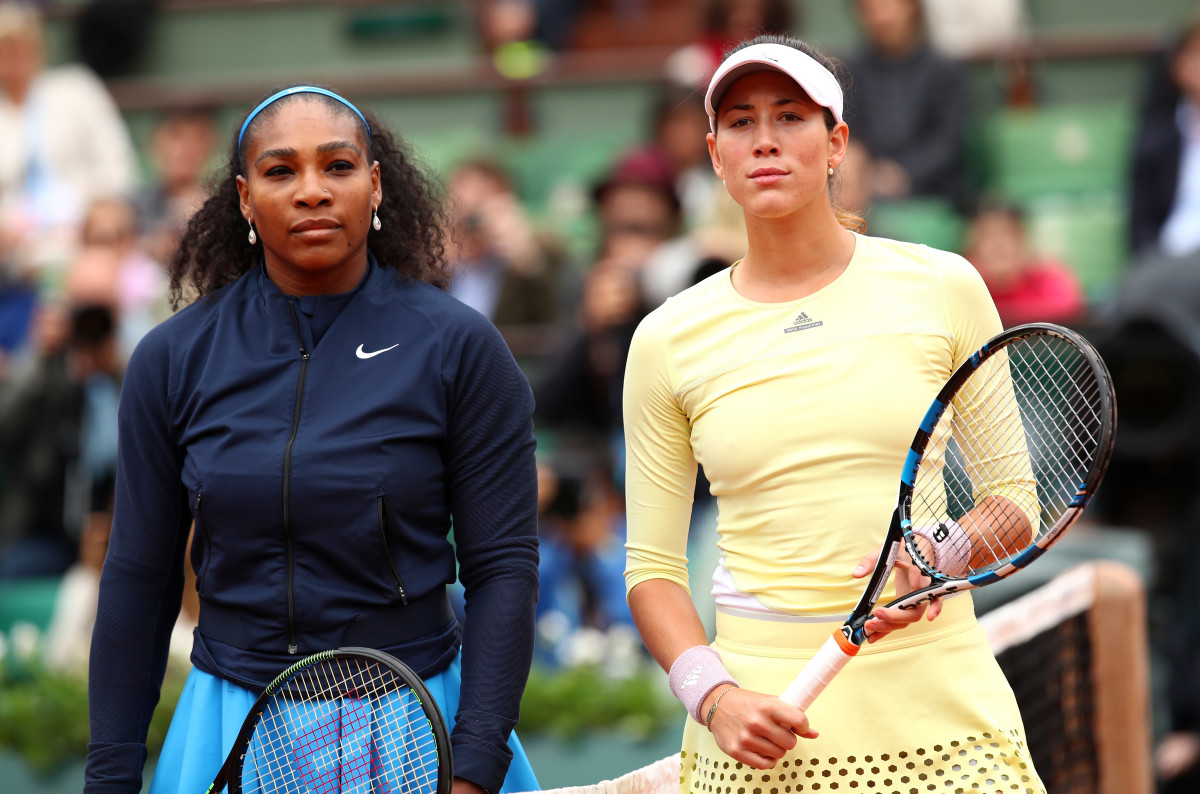
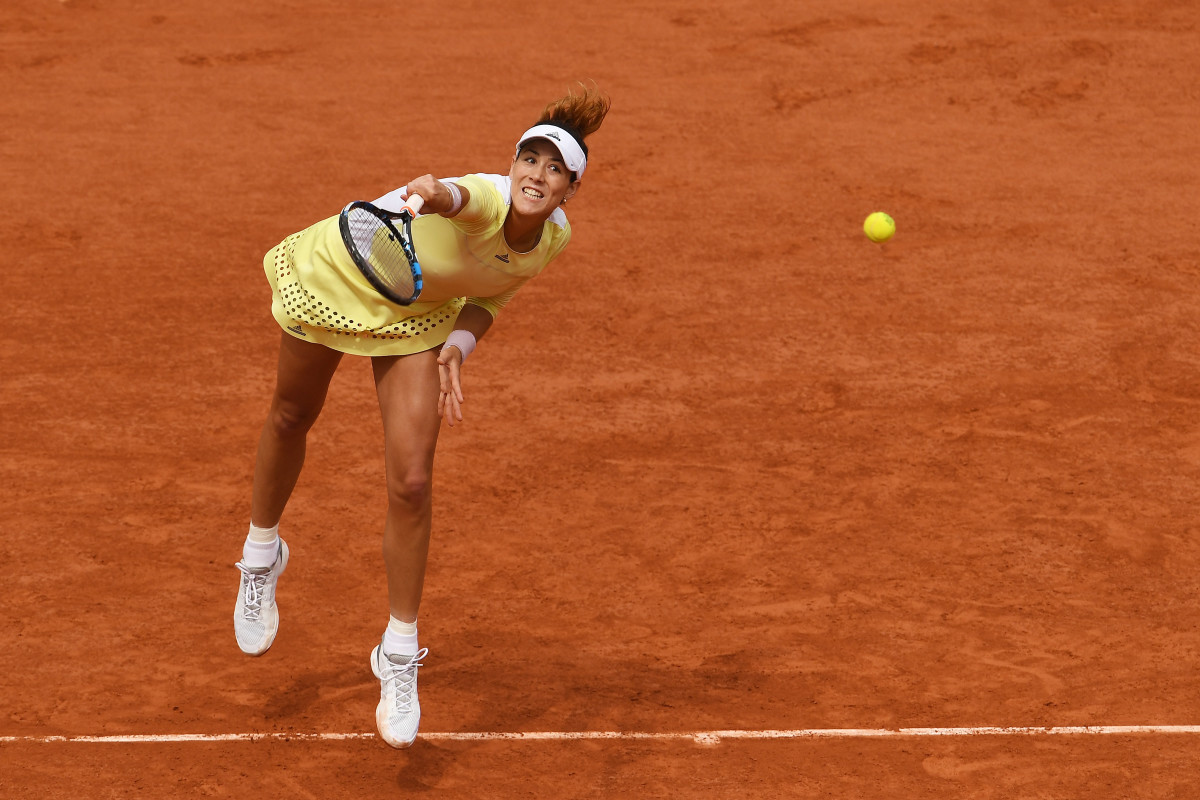
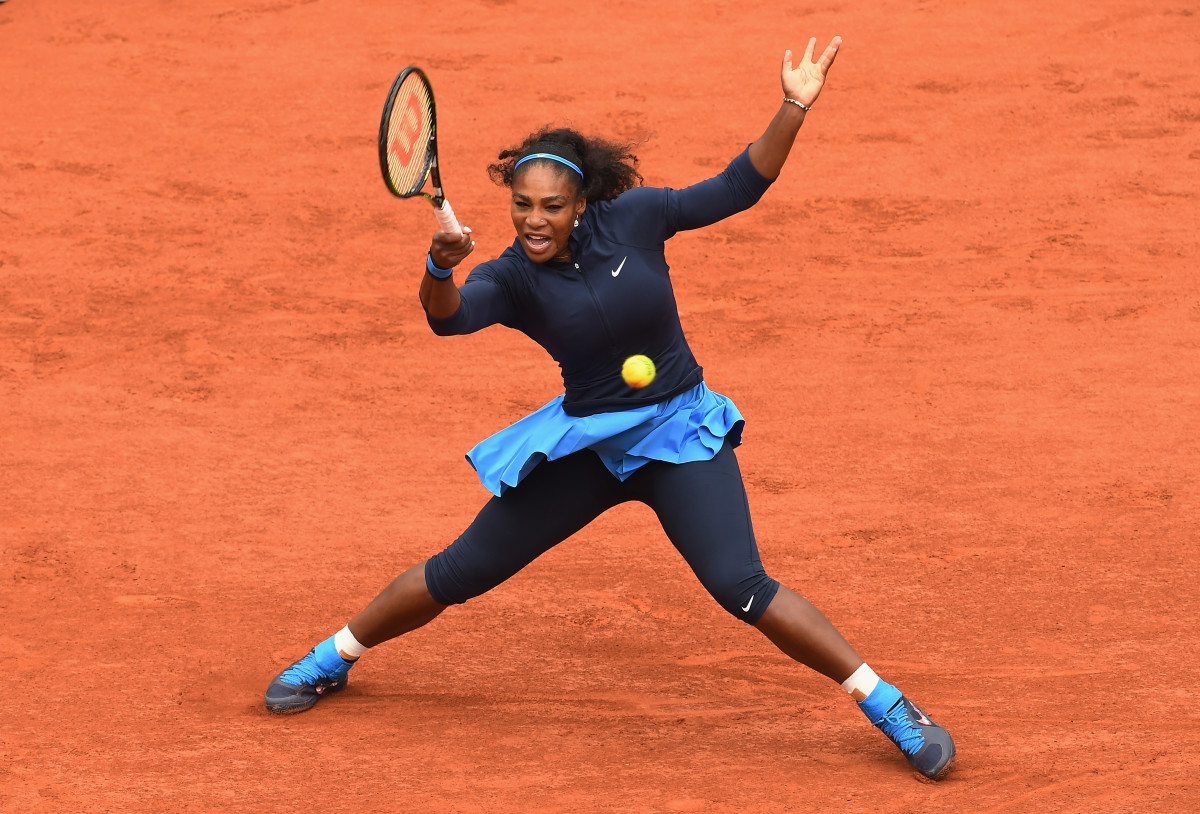
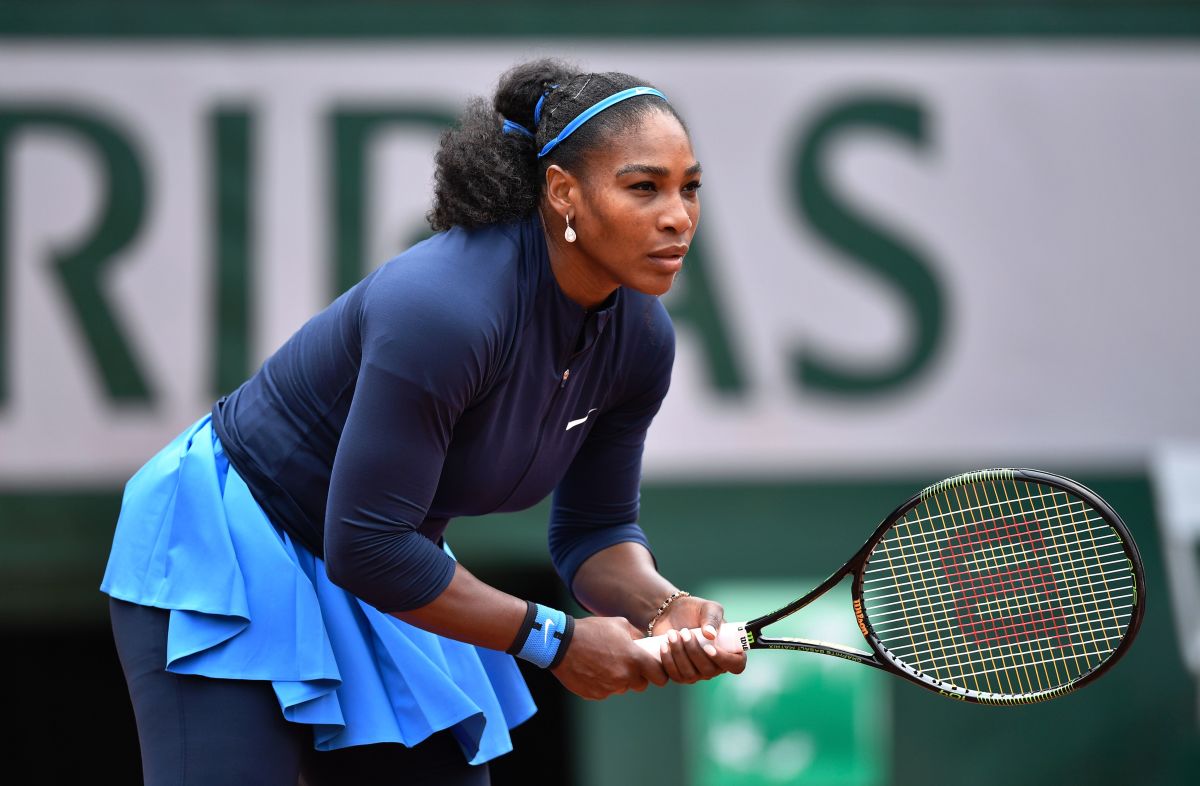
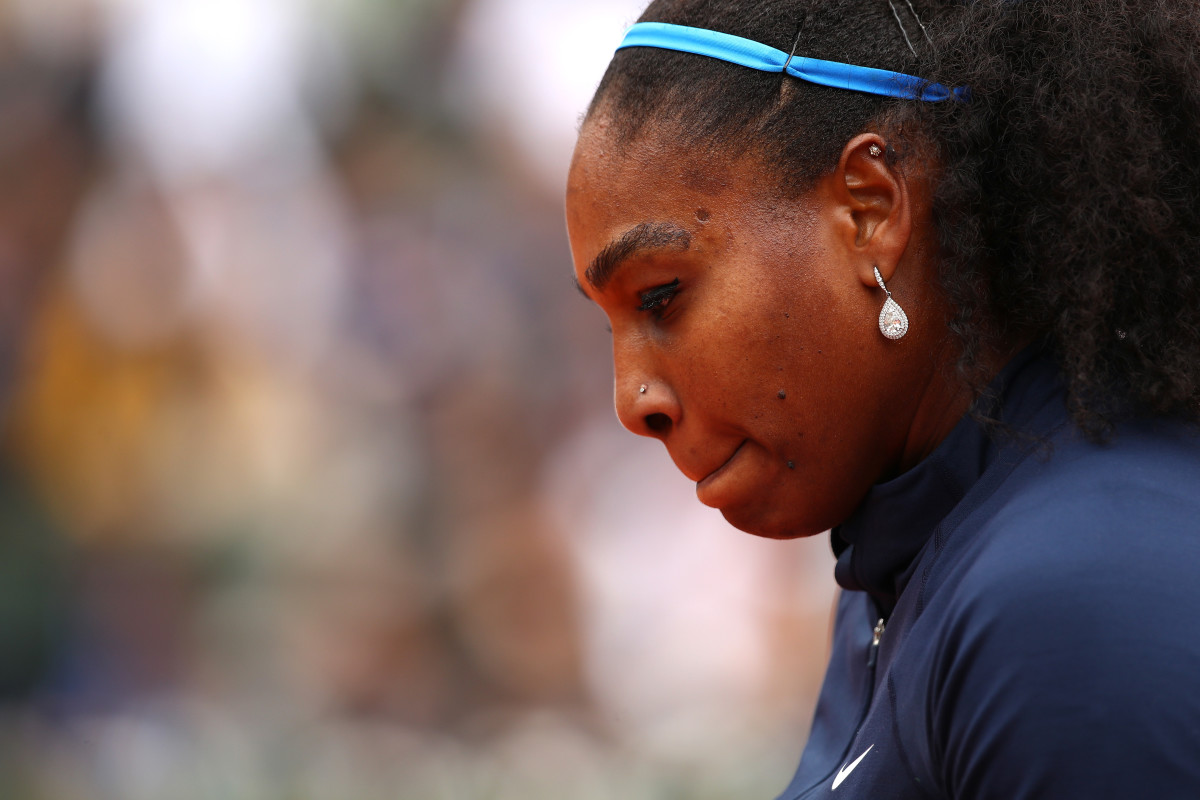
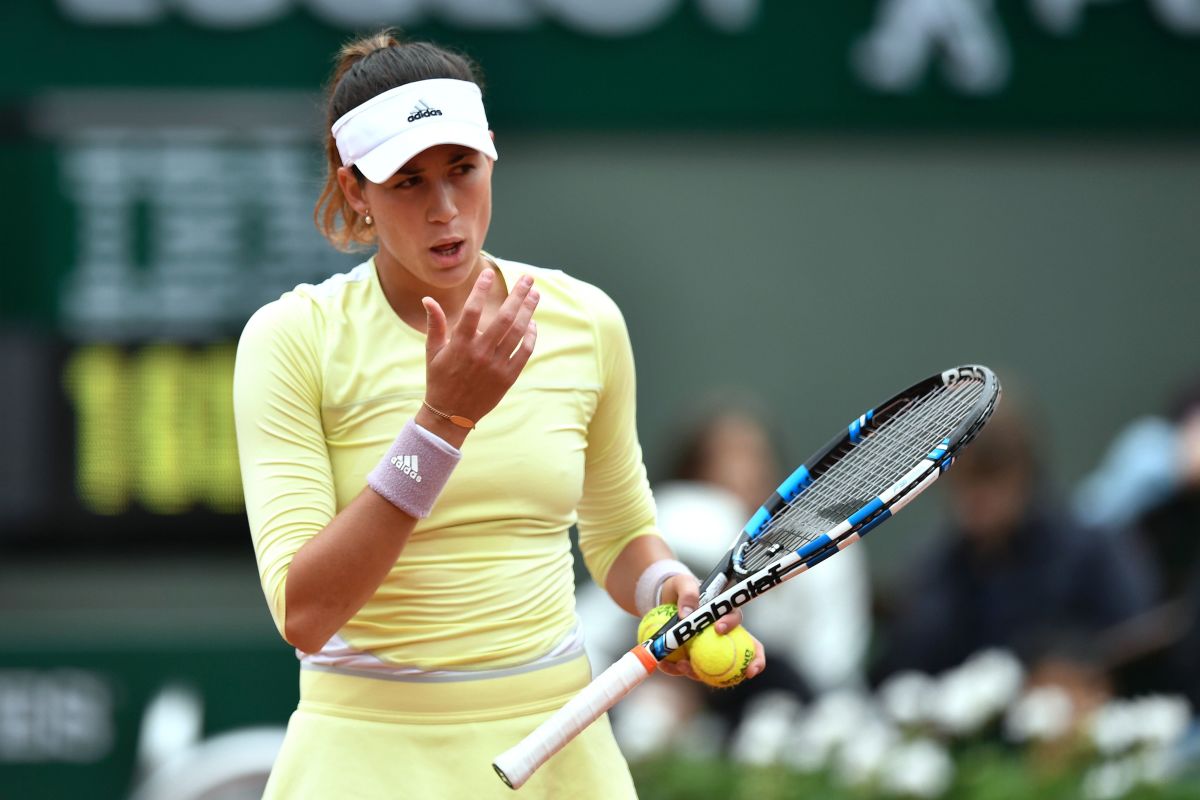
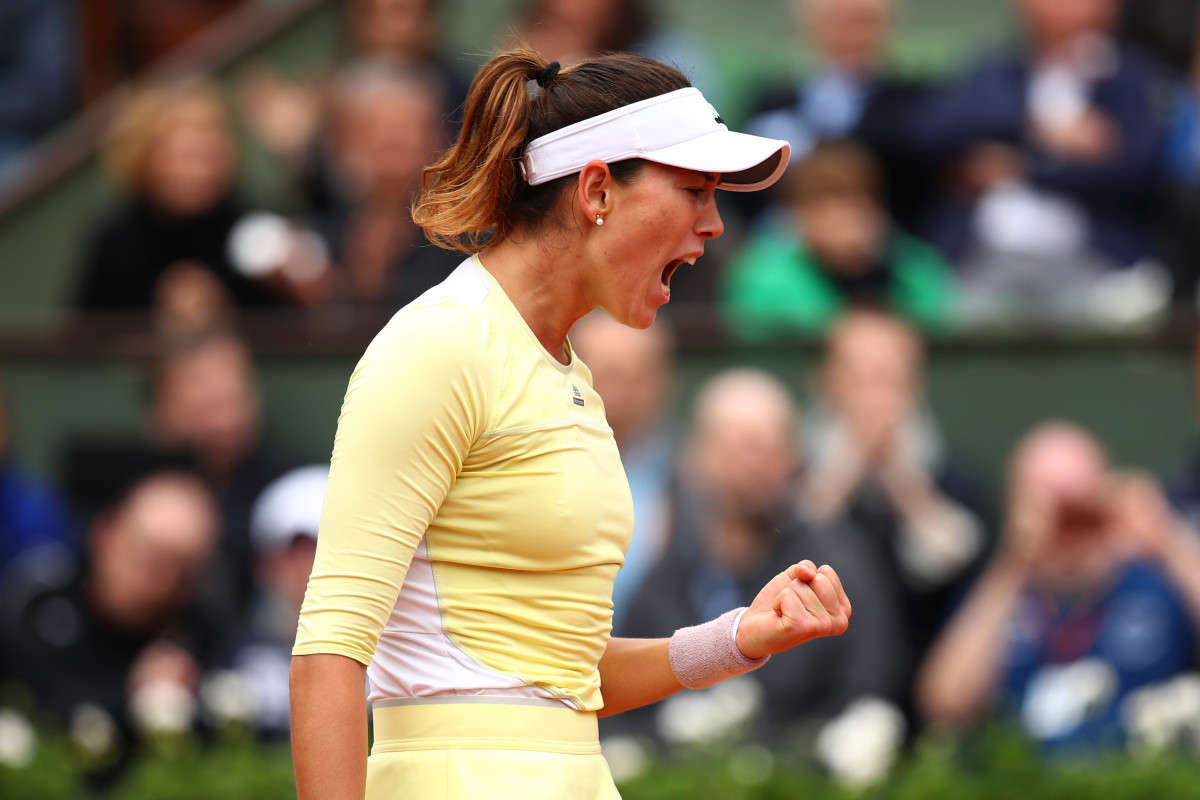
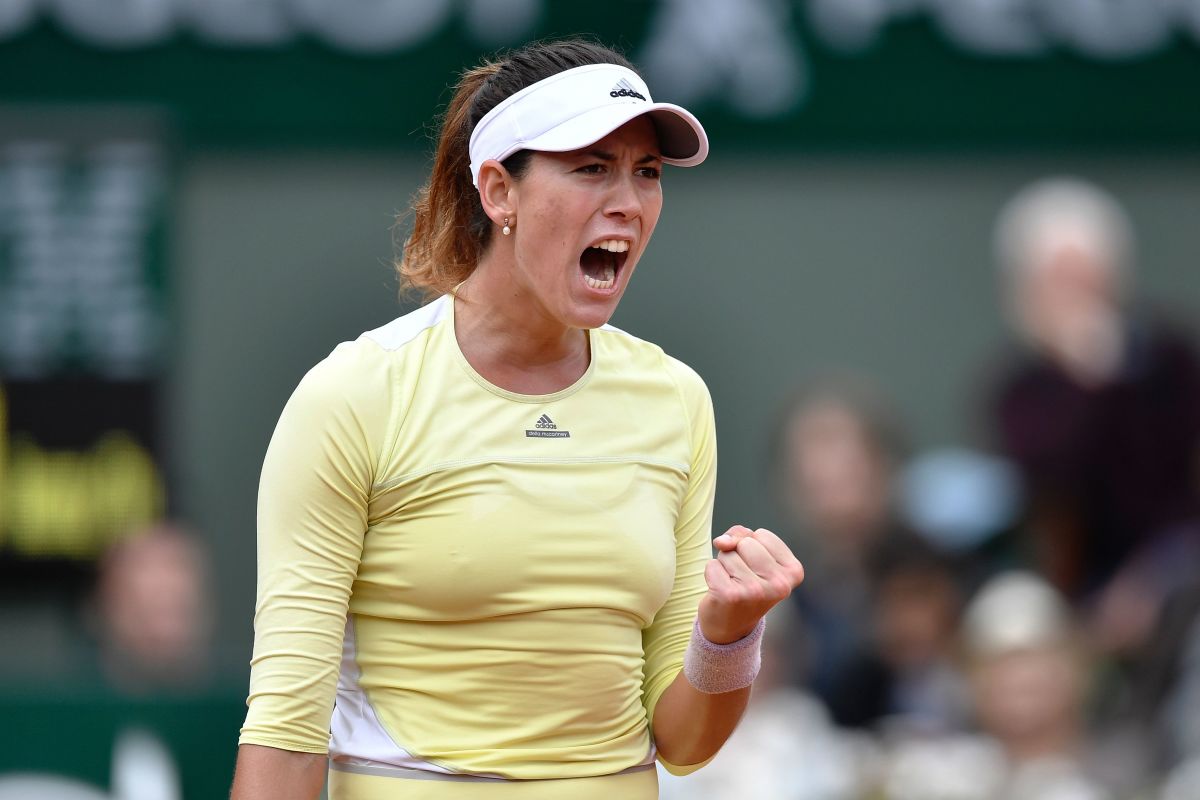
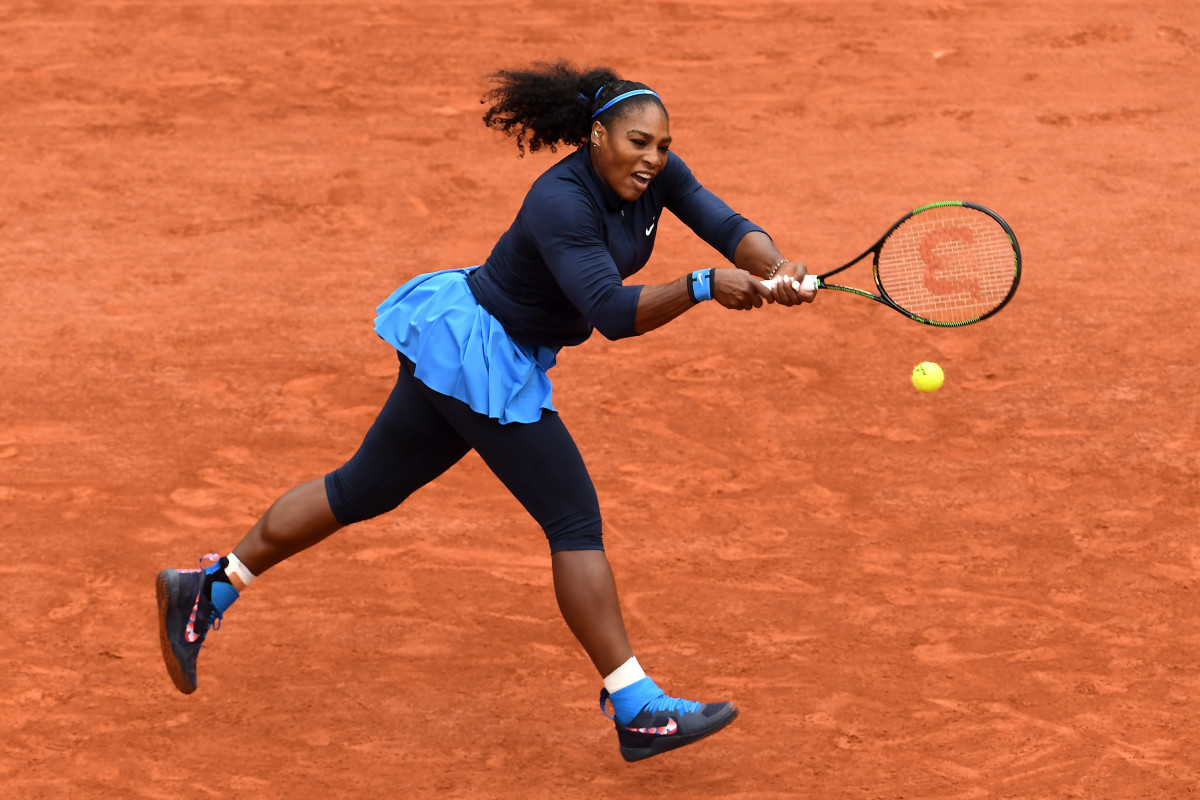
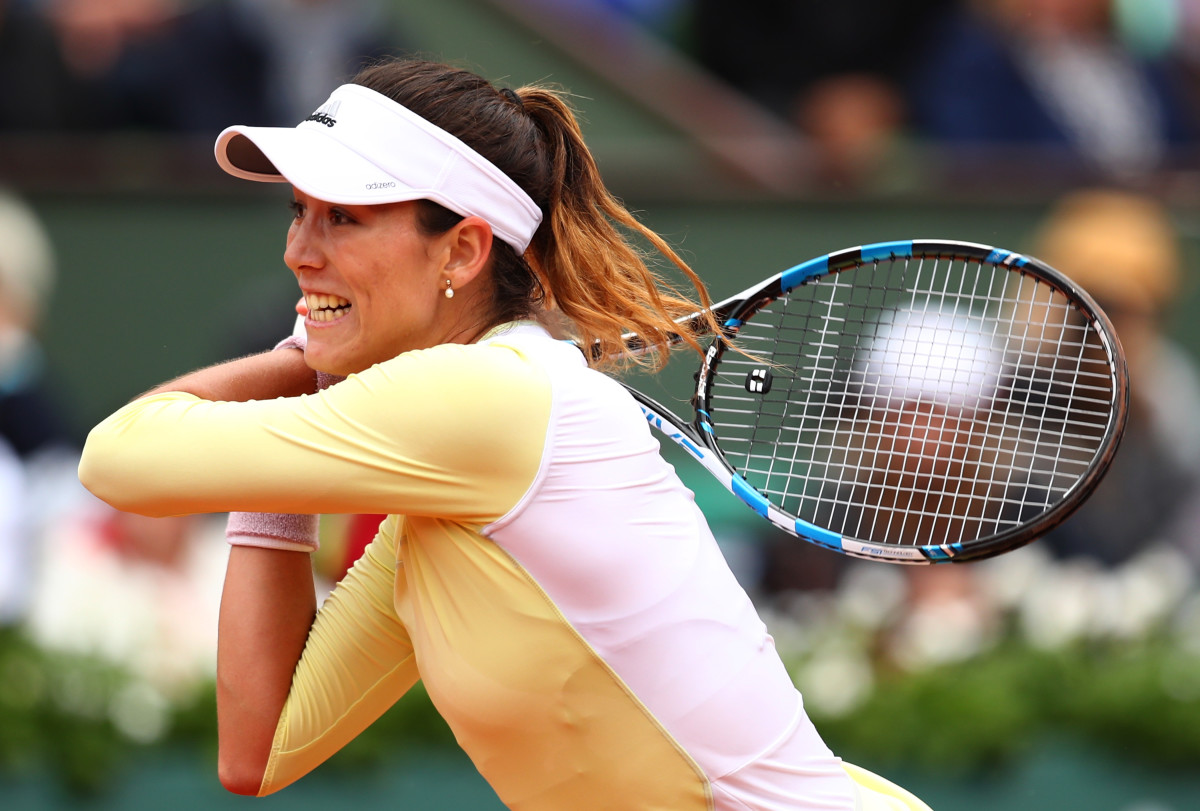
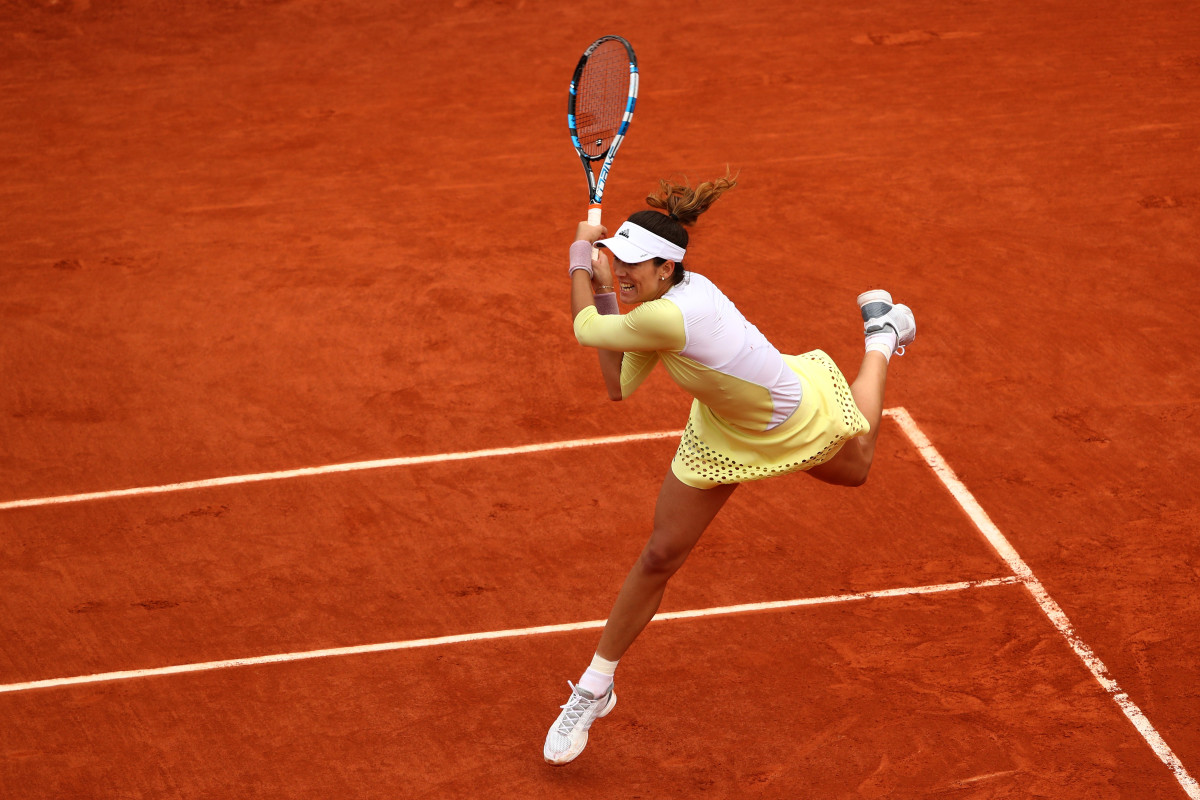
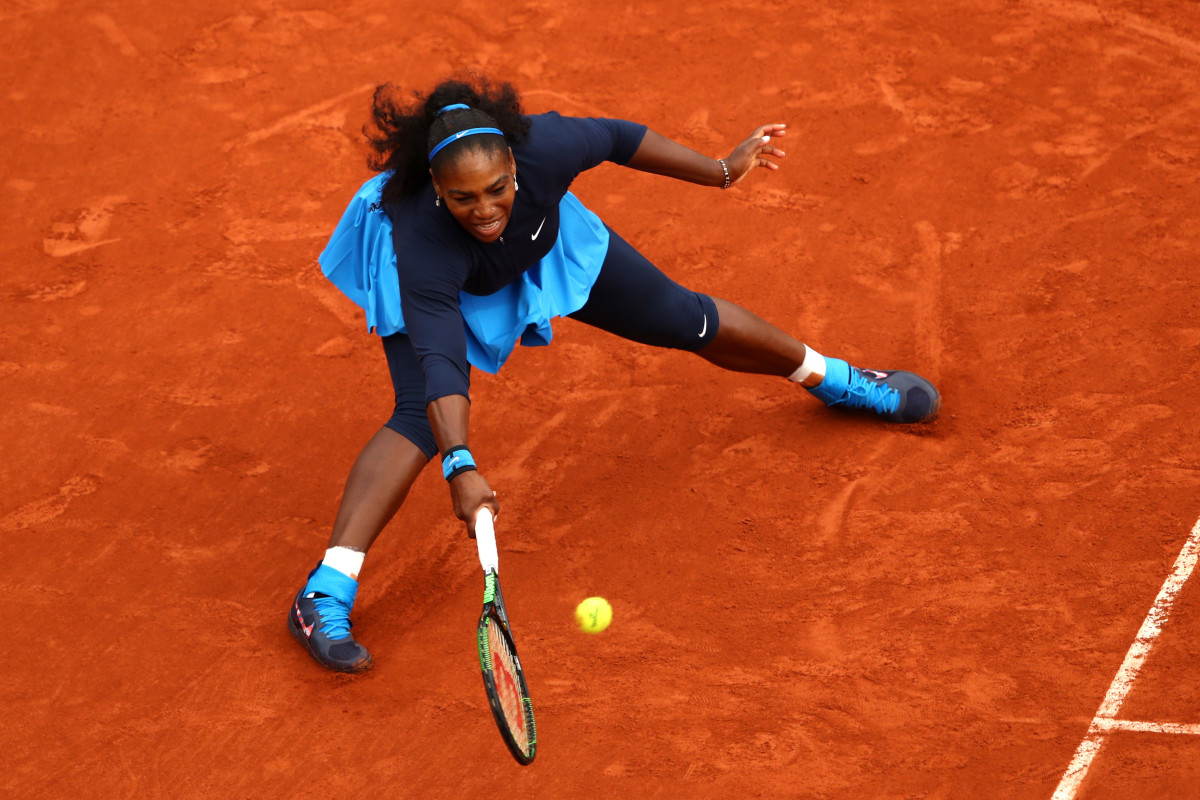
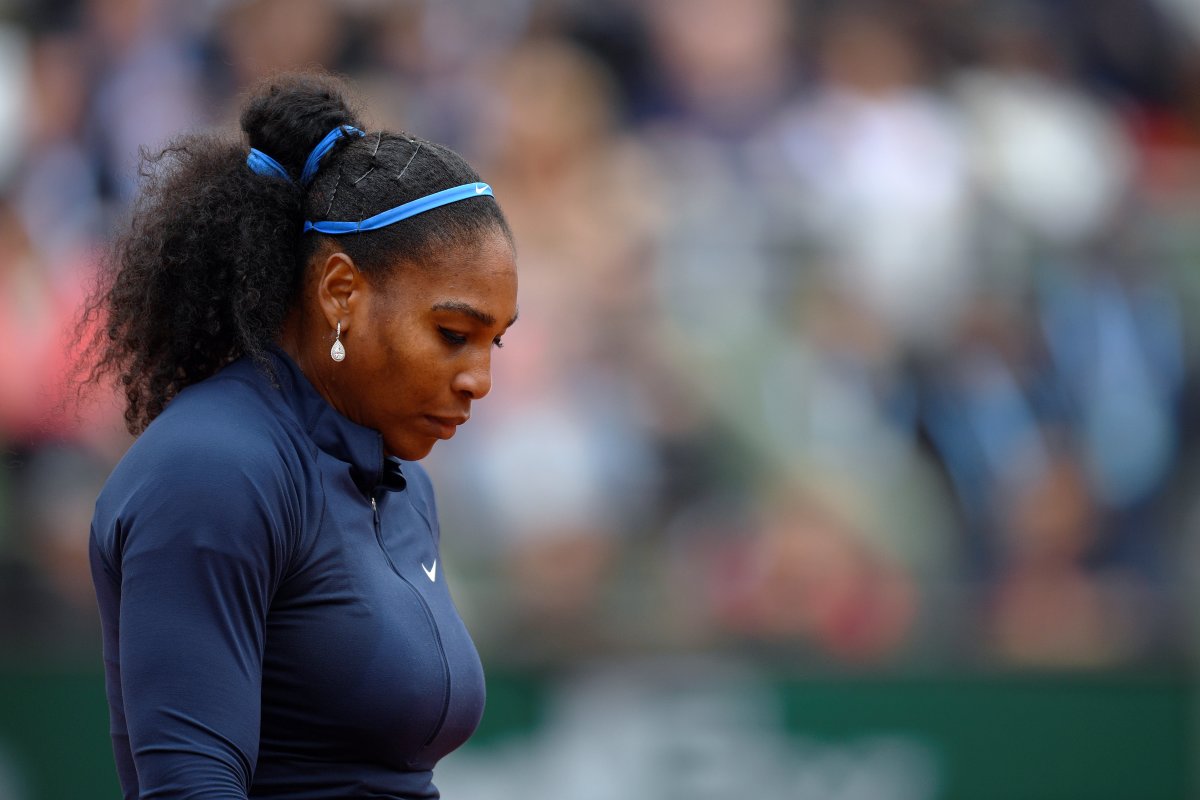
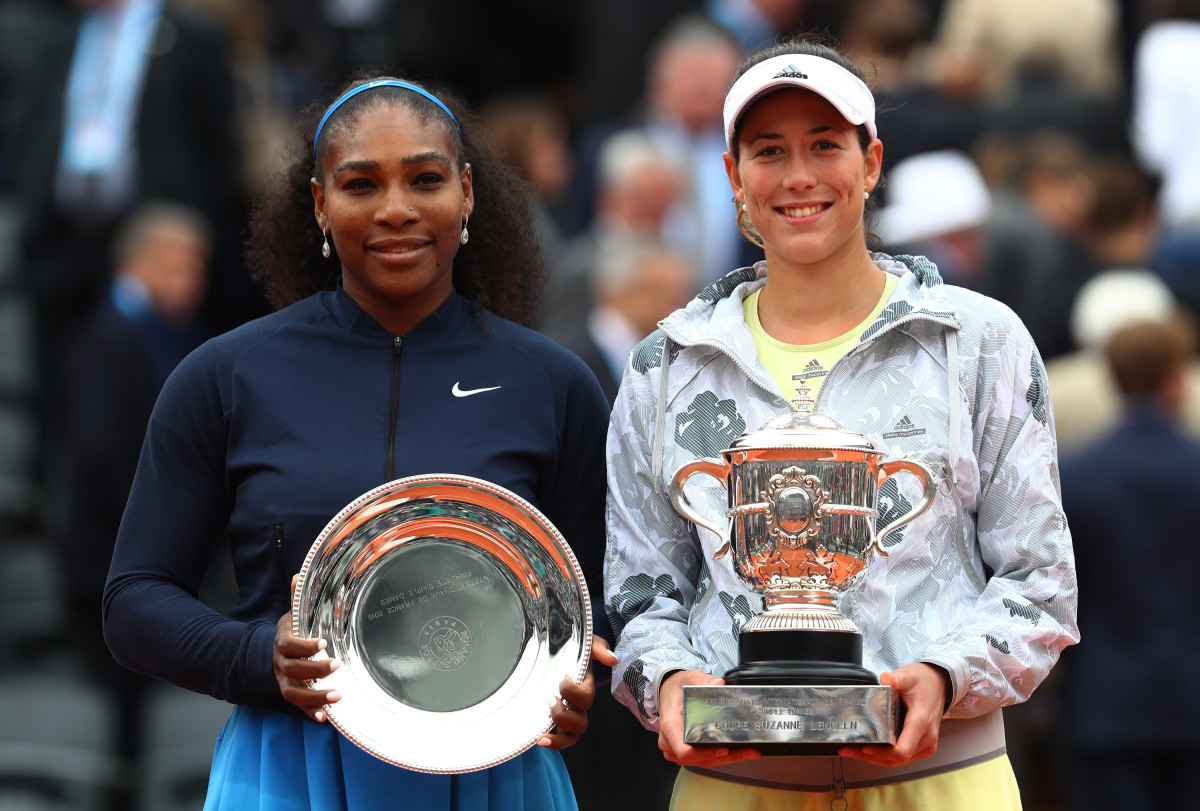
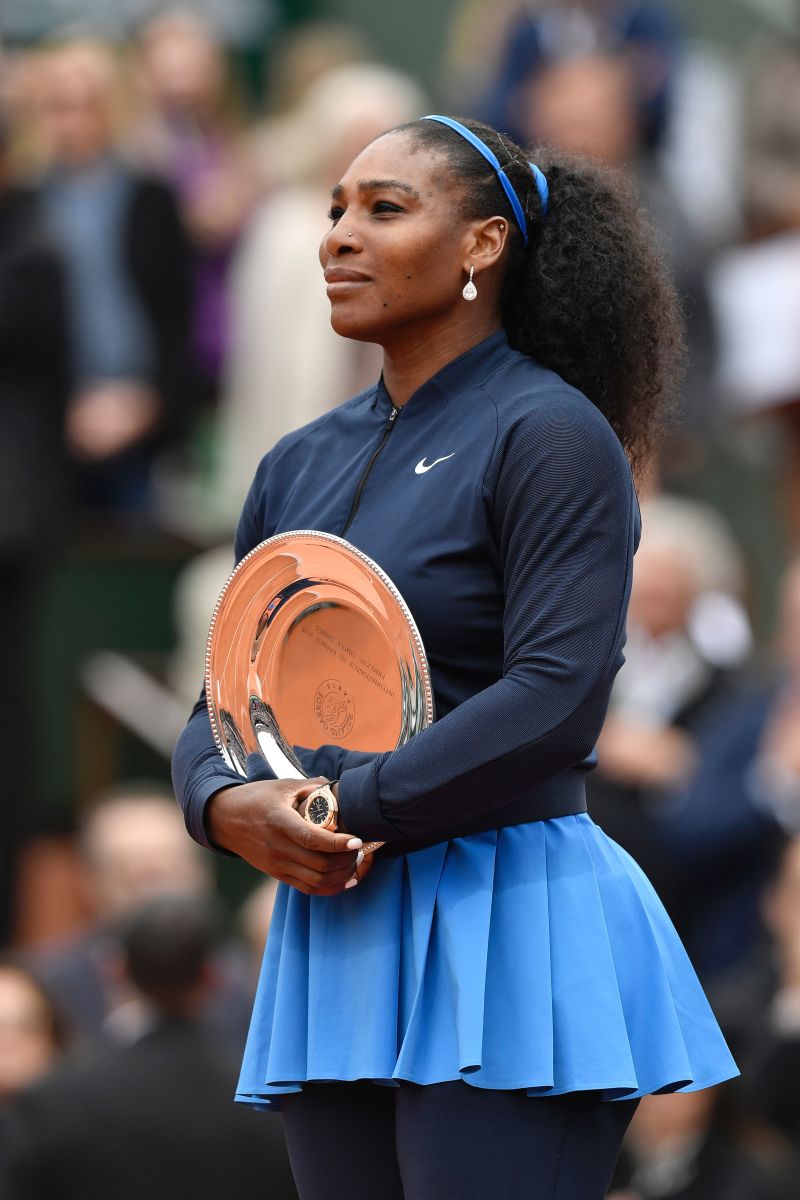
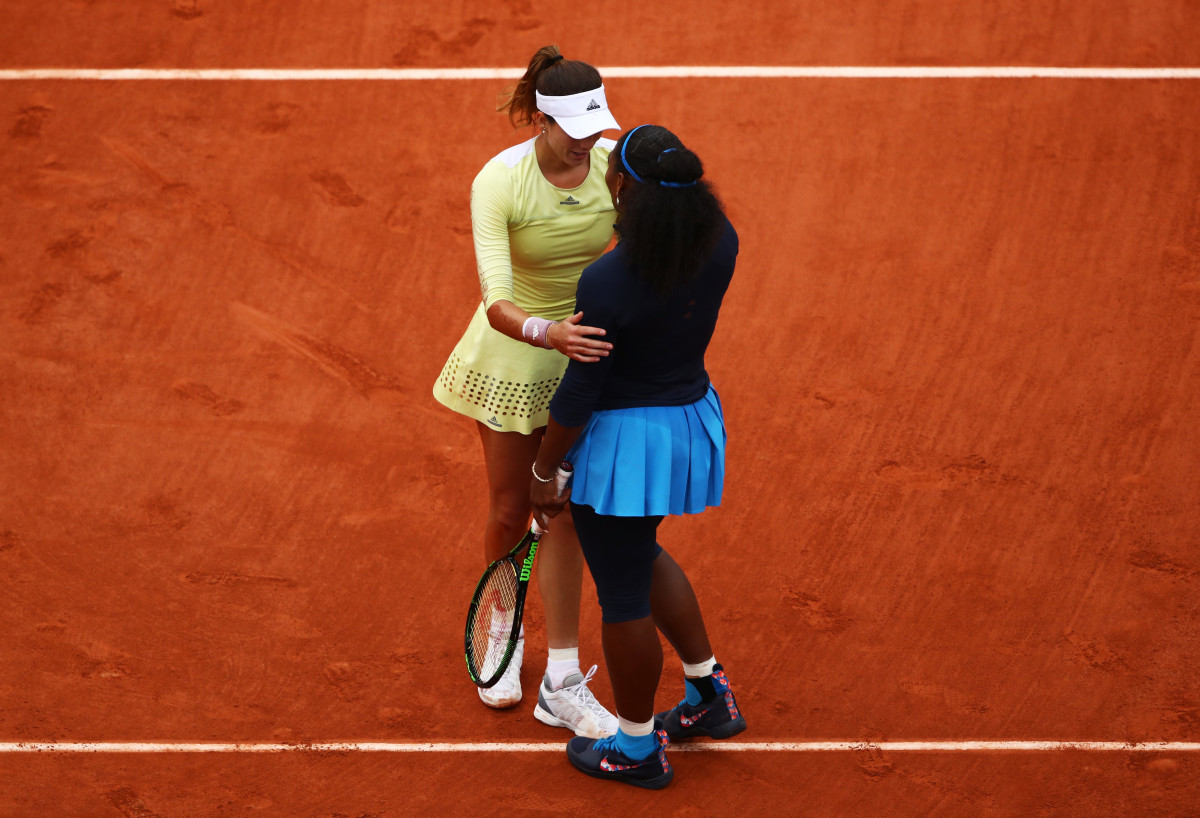
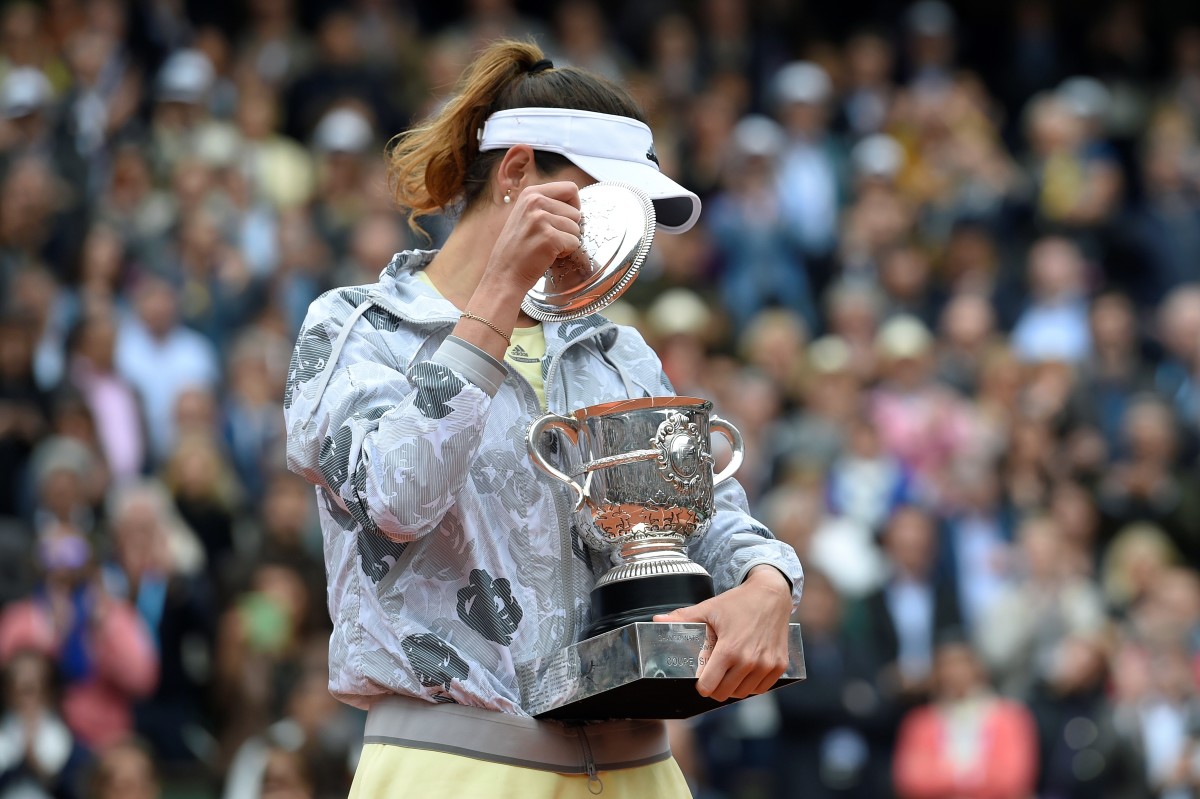
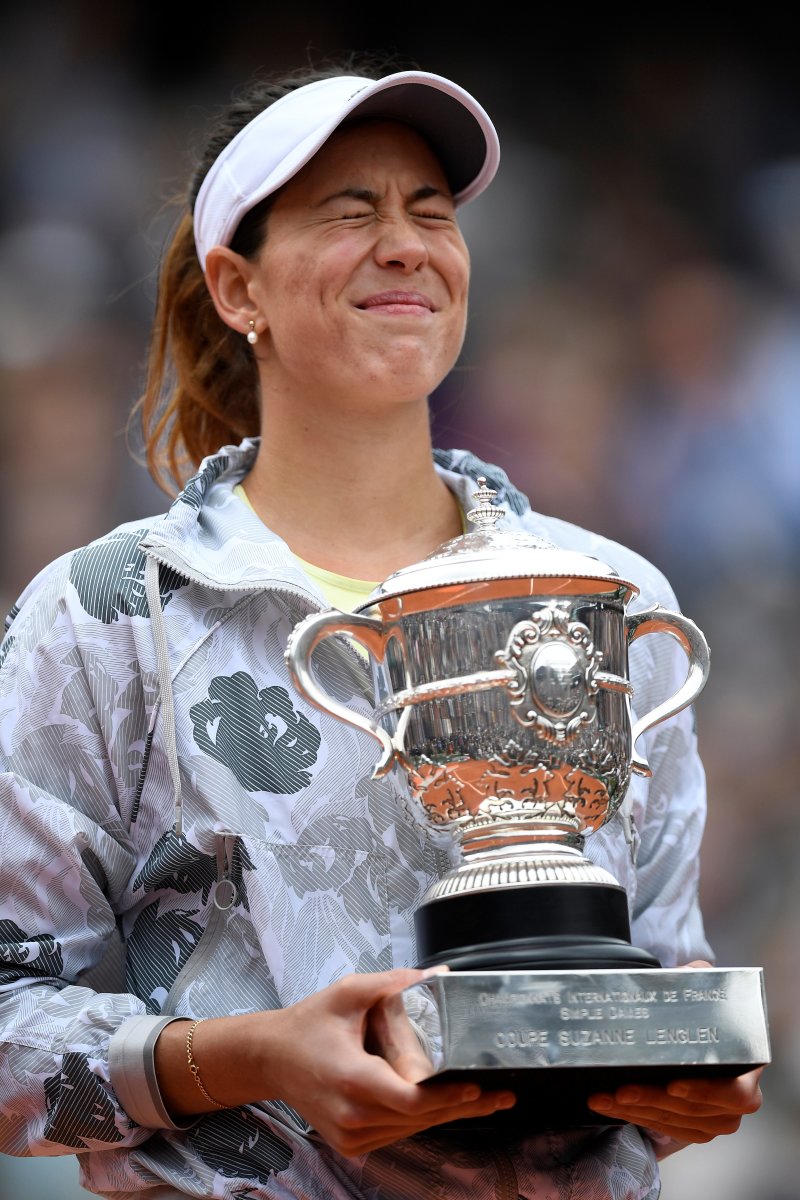
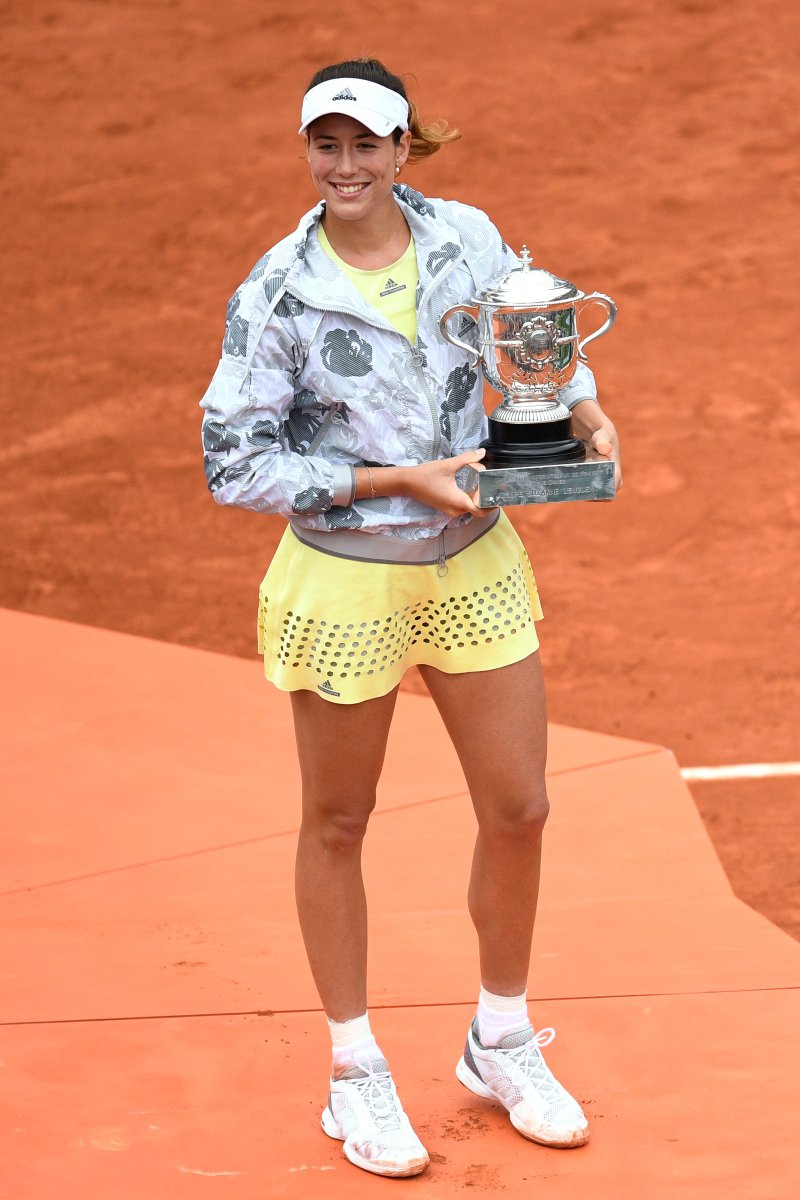
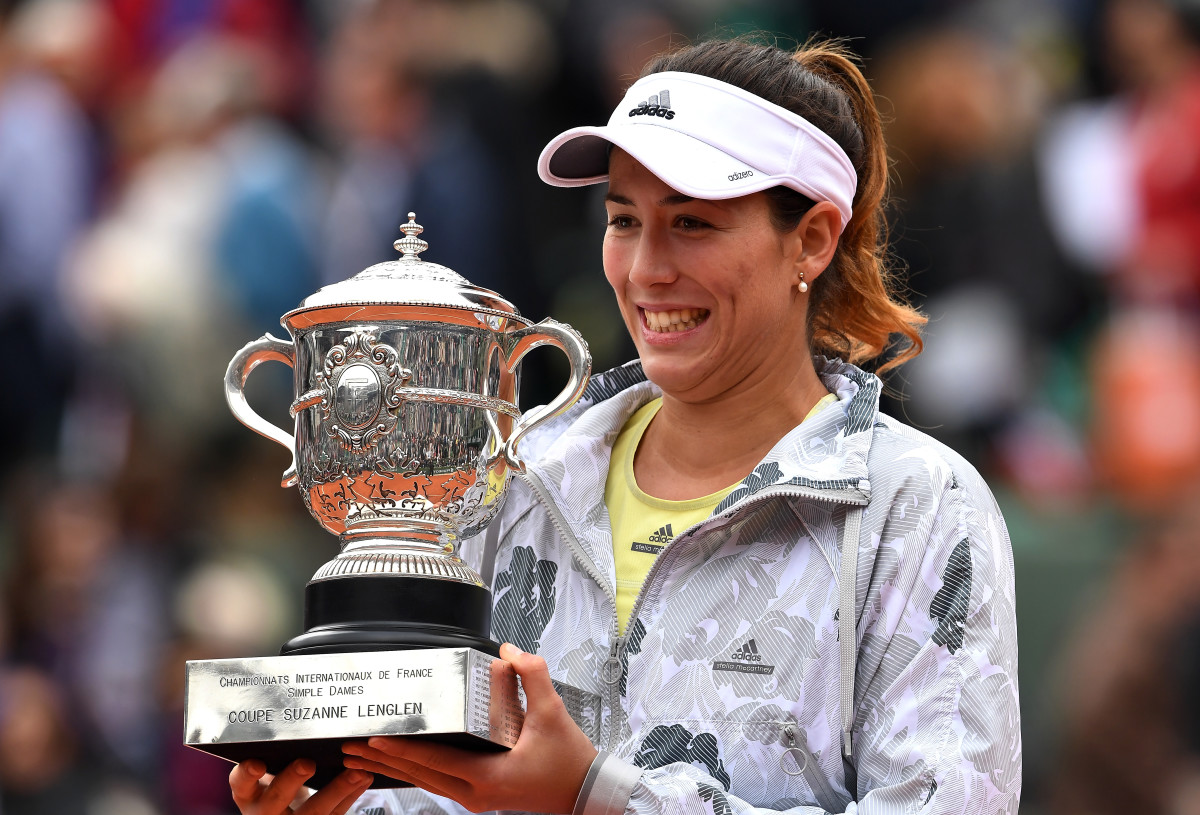
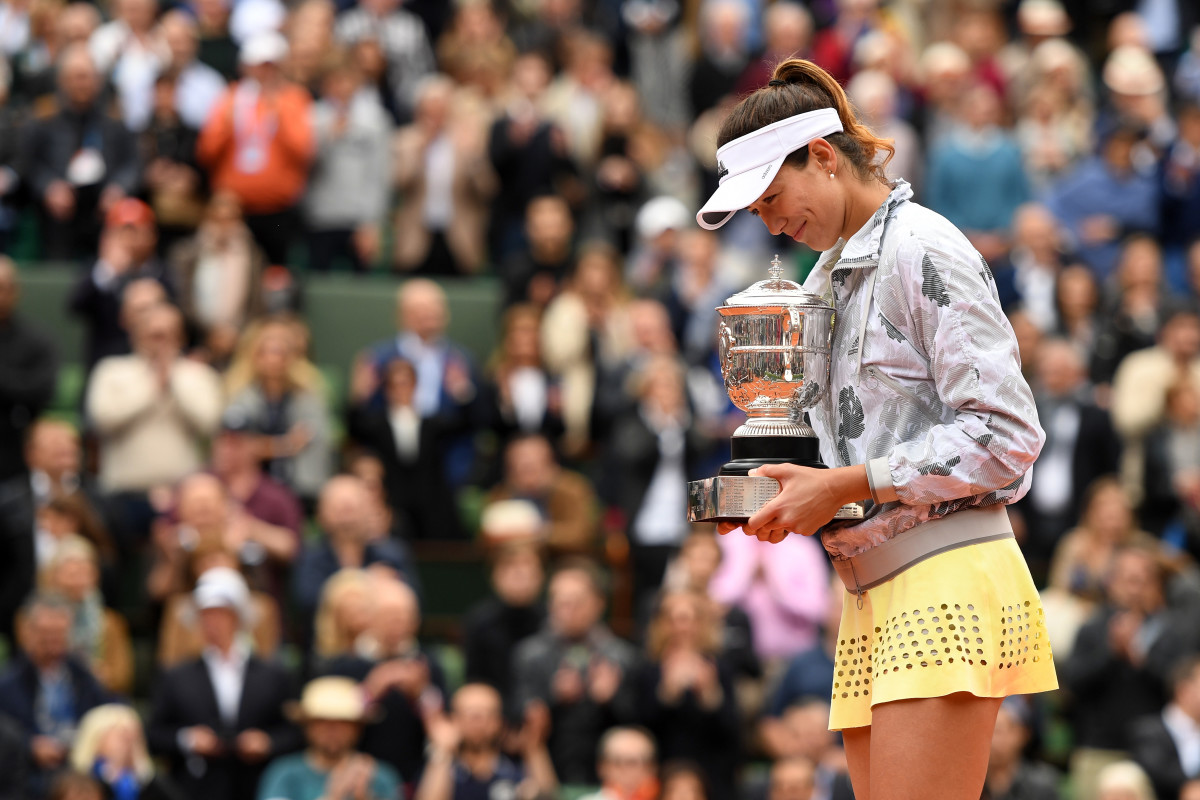
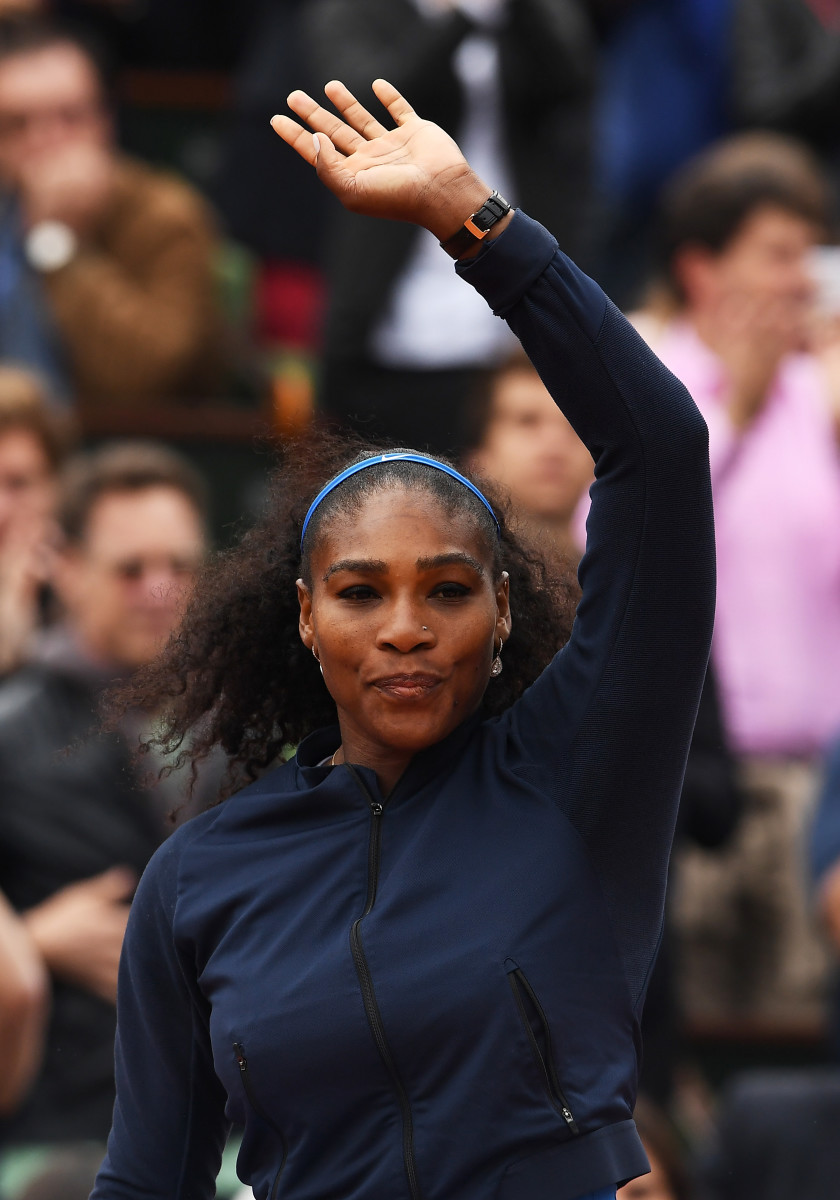
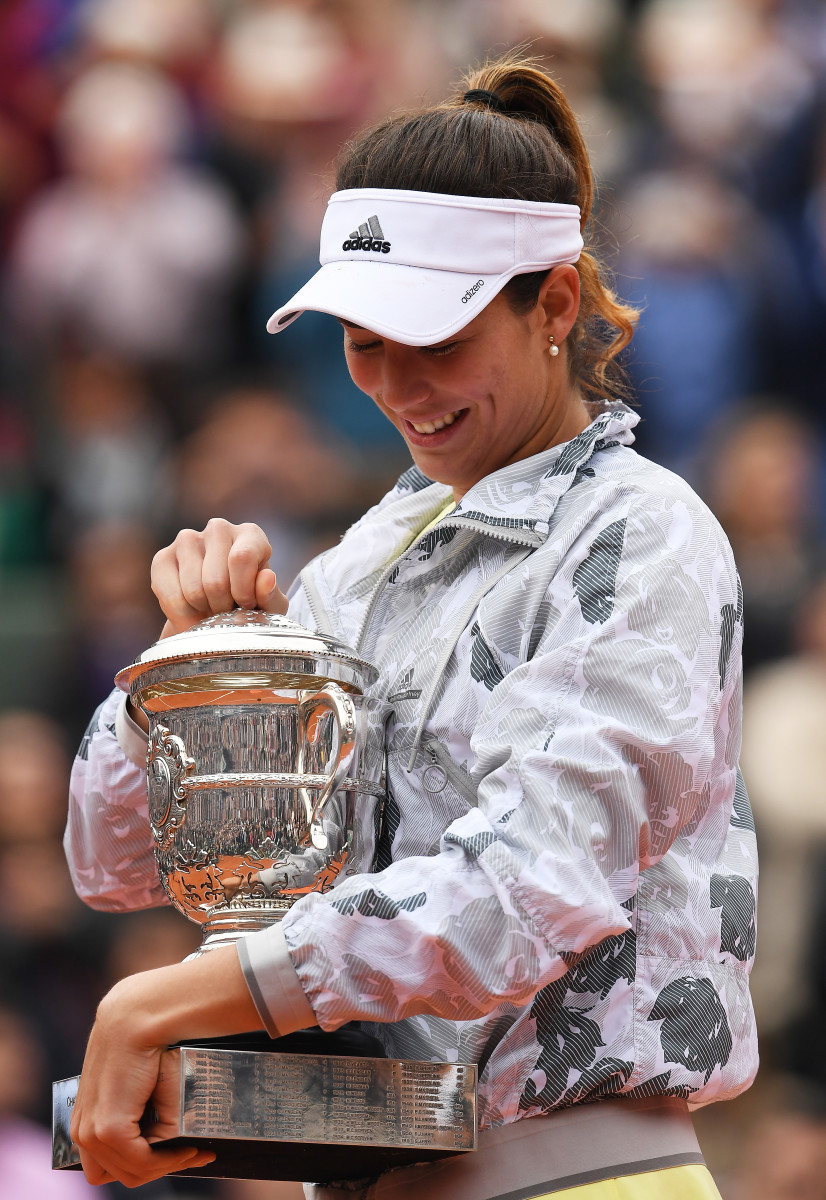
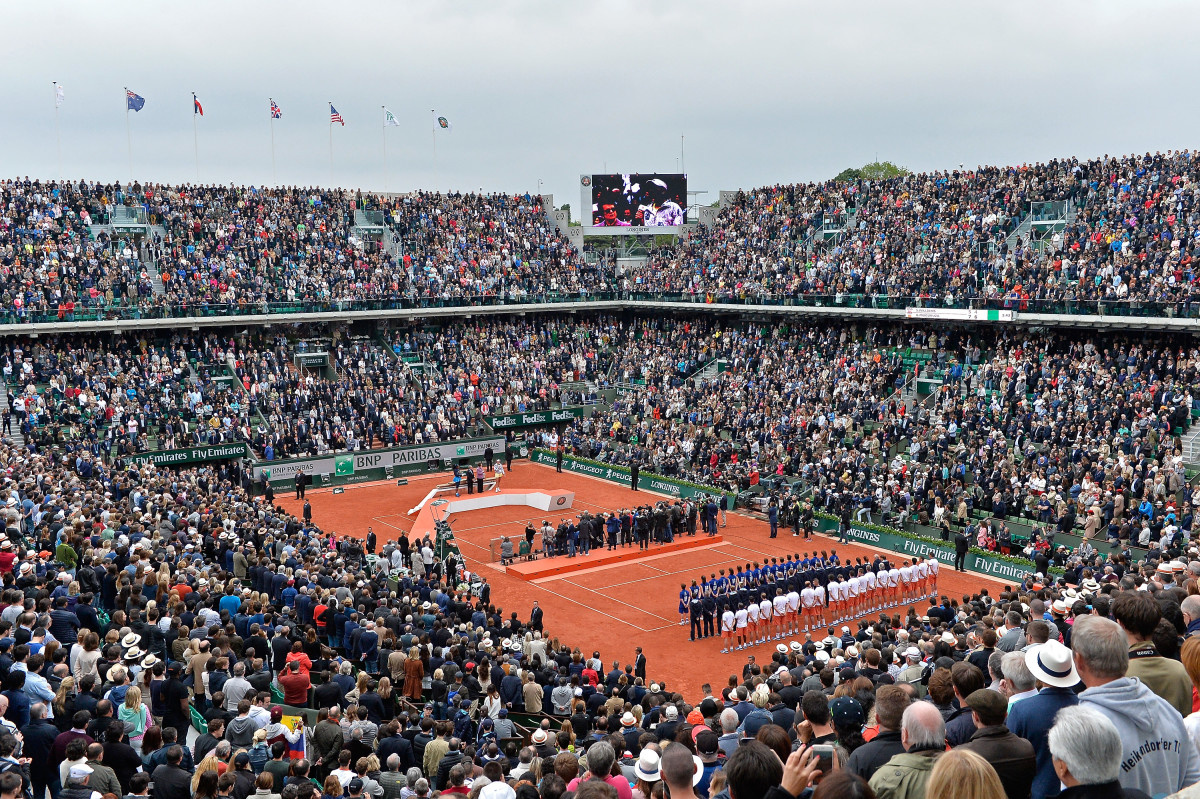
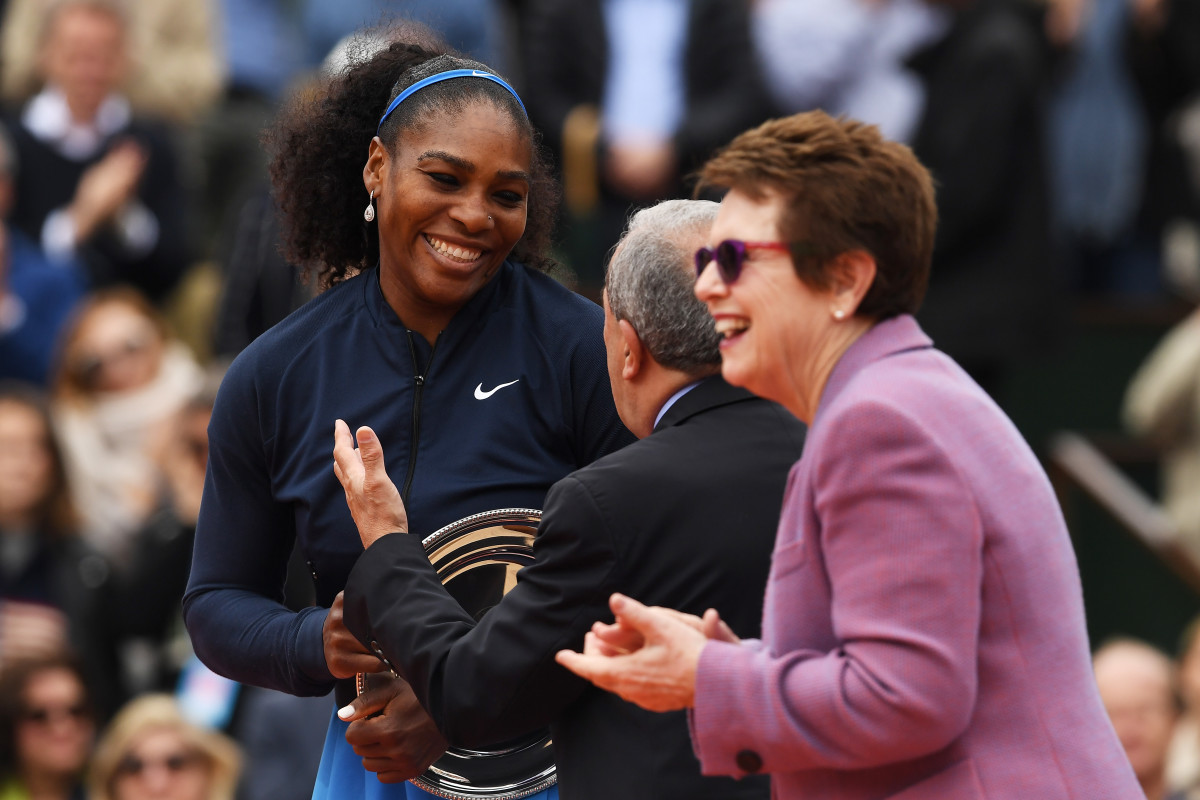
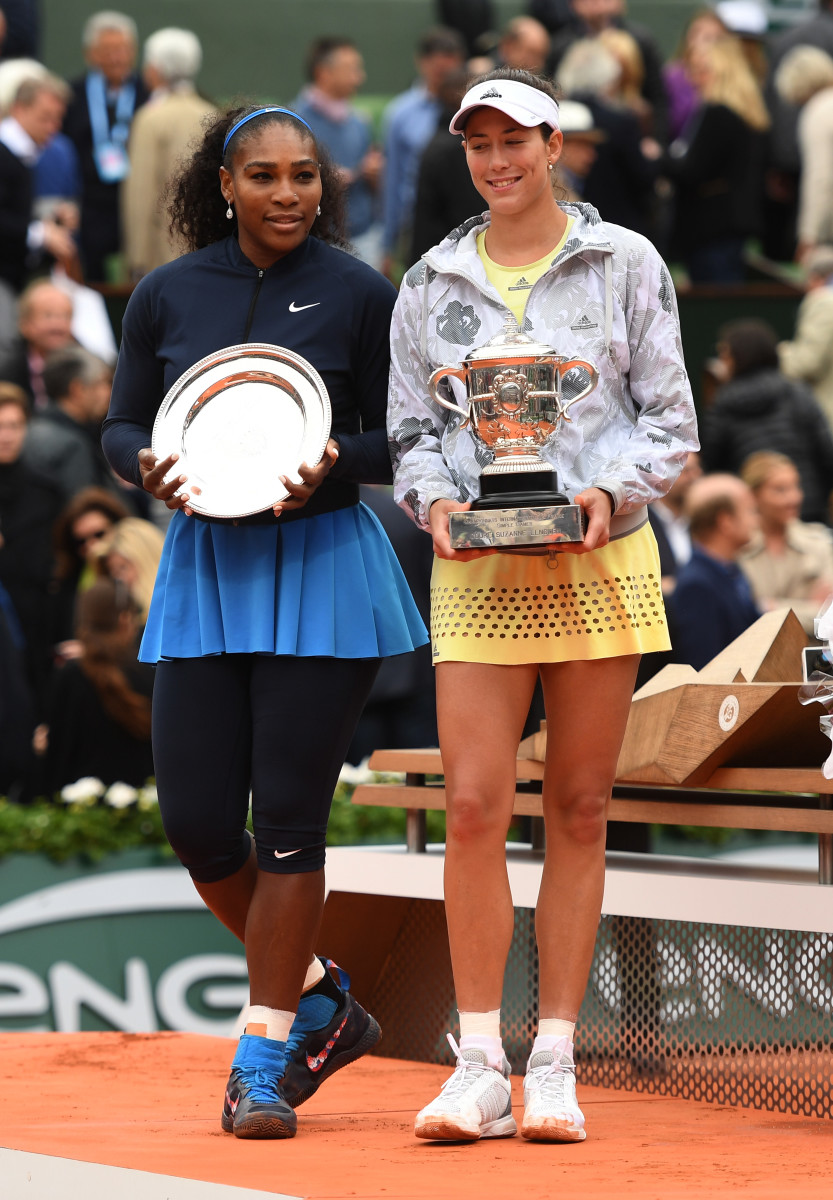
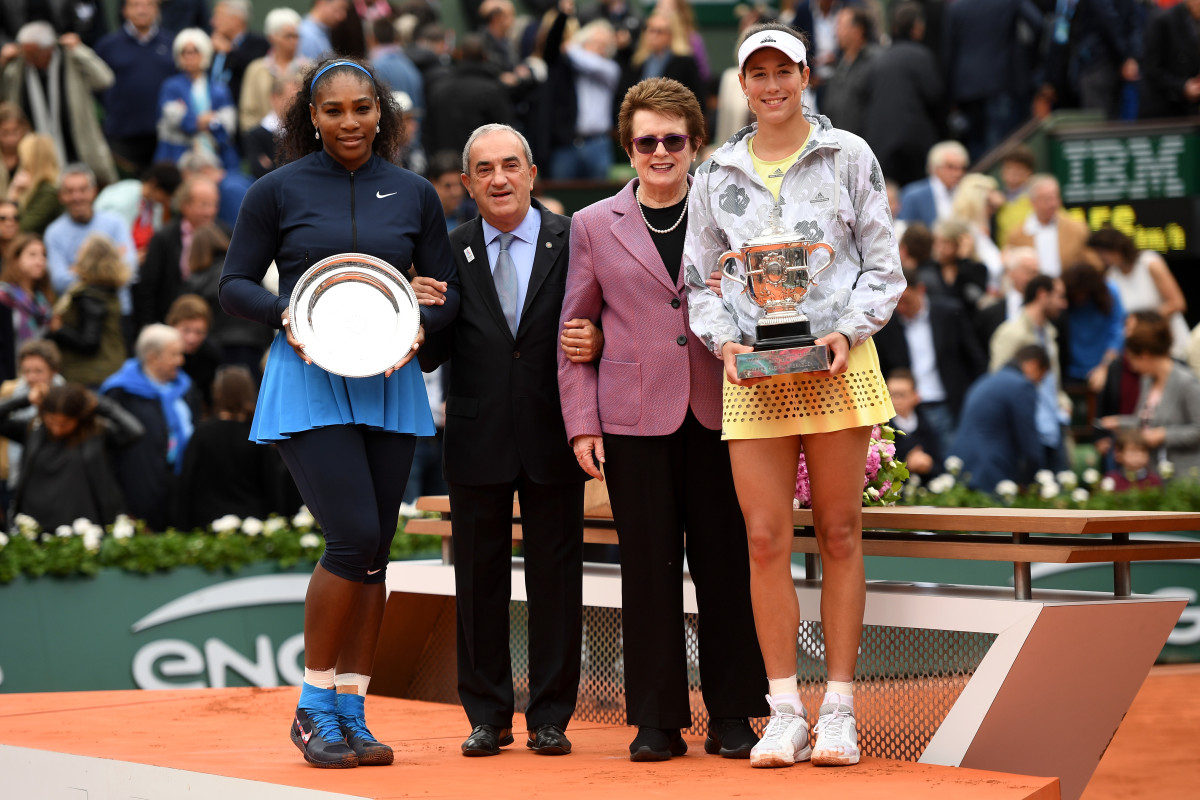
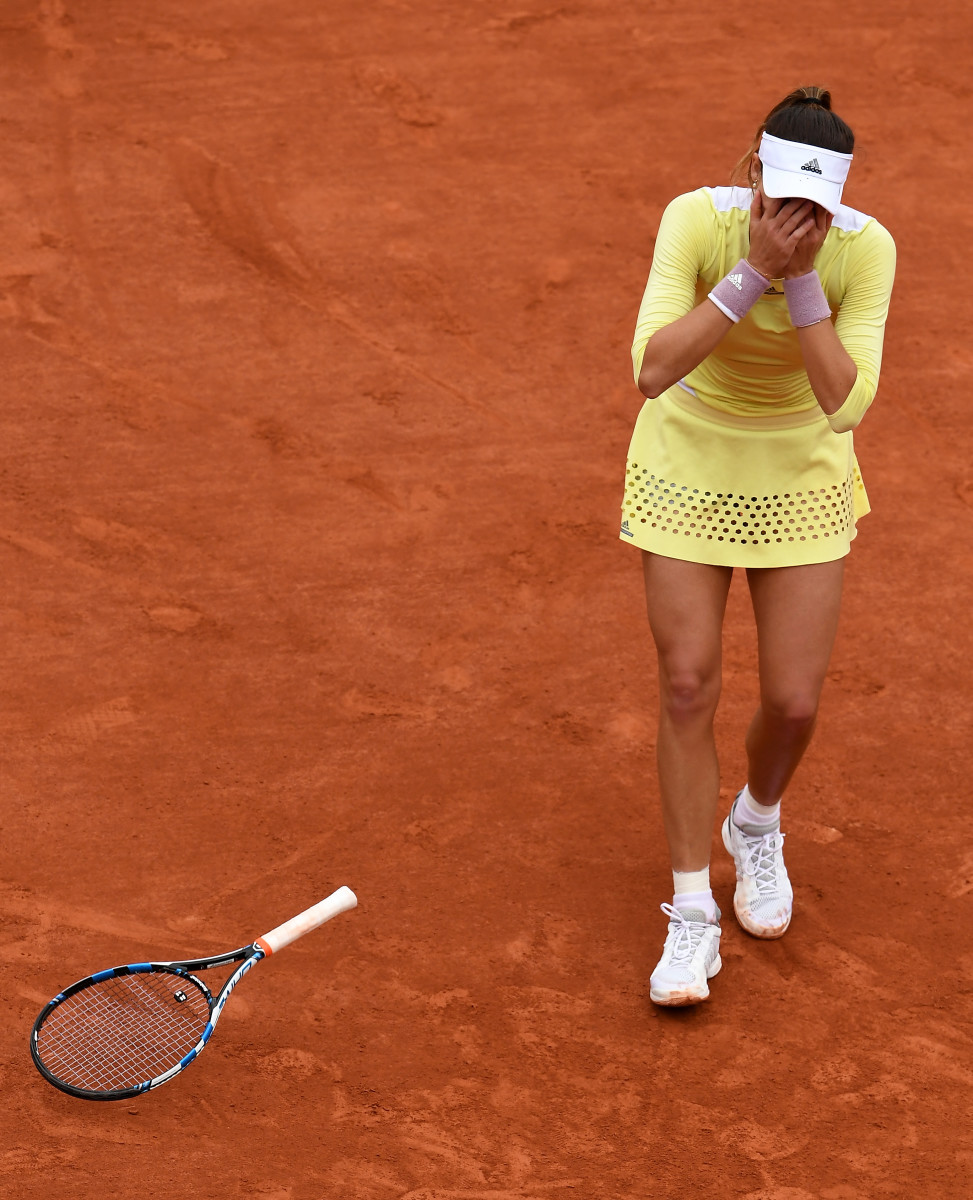
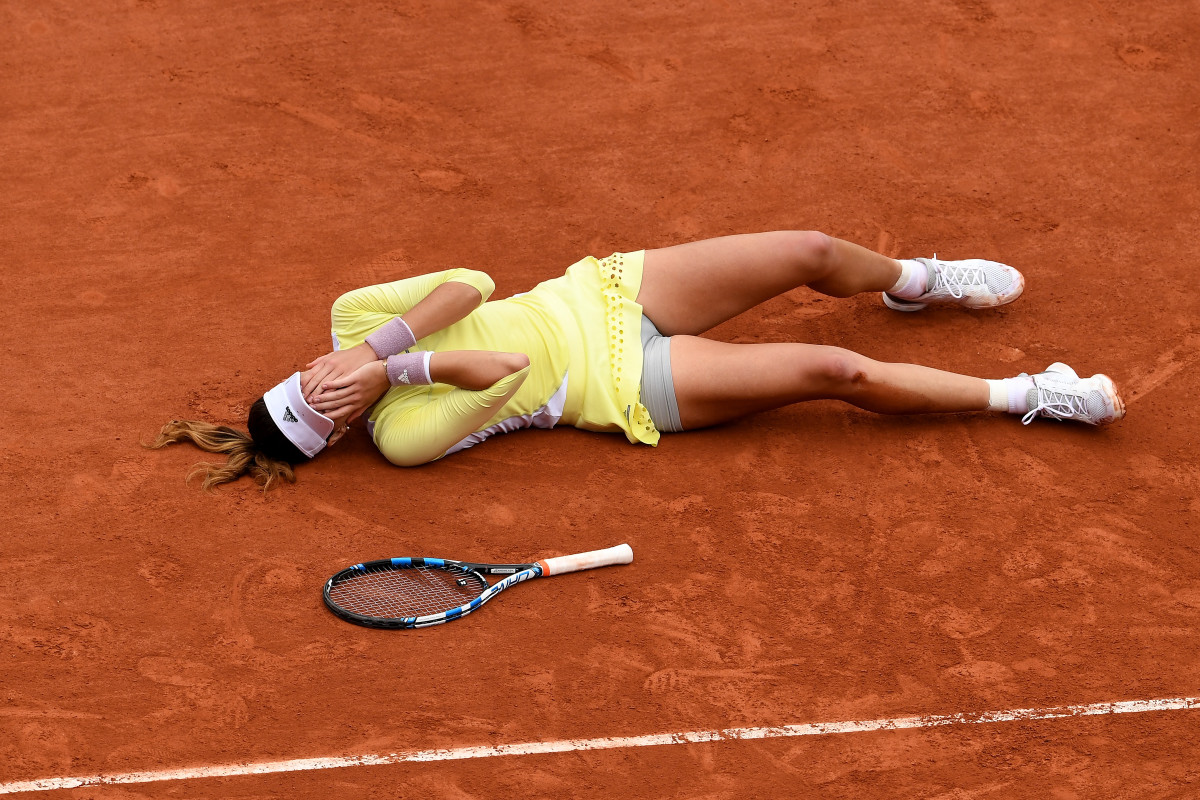
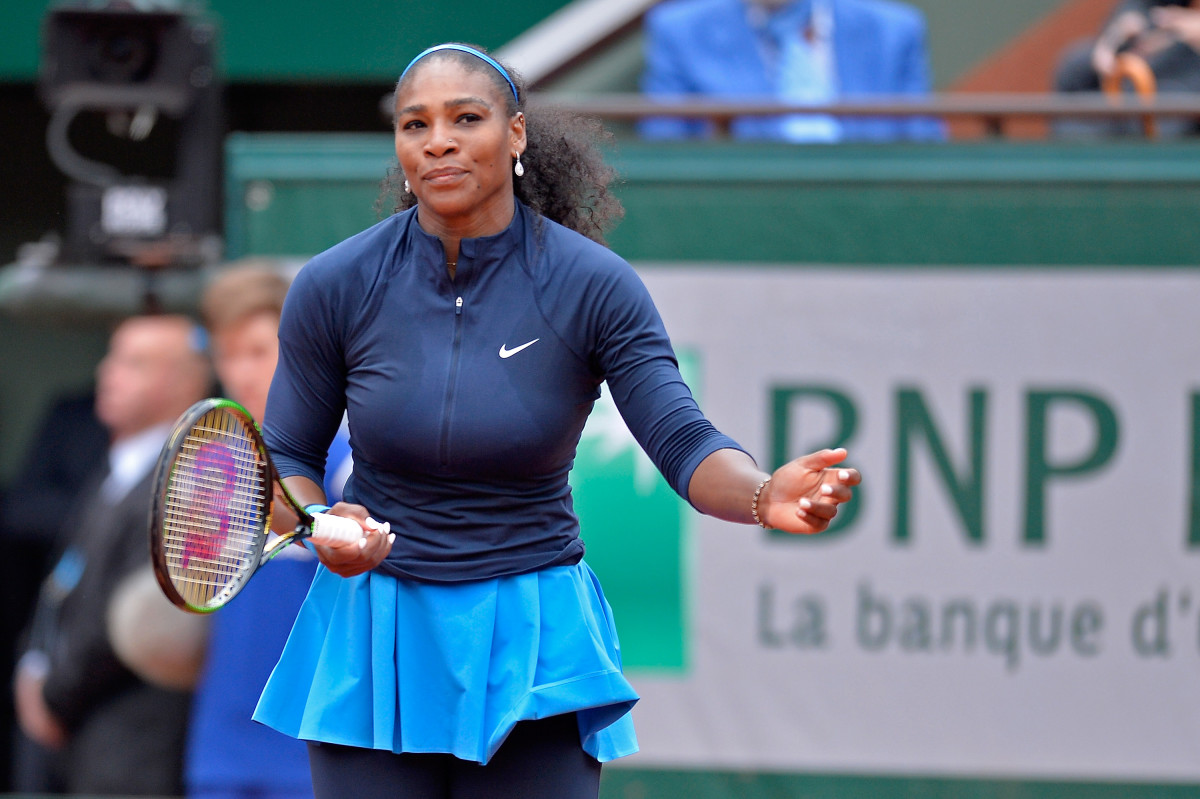
• More on injuries: the withdrawal list doesn’t tell the entire story. As always there are players in the draw who—not unreasonably—are clearly compromised and are there strictly for the $30,000 first round losers check. One example: Serena Williams beat her first-round opponent, Magda Rybarikova, in 42 minutes. Even as she was walking off the court, Serena acknowledged that it was less a matter of her dominance than of playing an opponent who was less than 100%.
• On the short list of French Open revelations: Naomi Osaka. Half Japanese, half Haitian, 100% promising, the 18-year-old won two rounds, and had Simona Halep on the ropes. She also had the fastest serve in the women’s draw.
Daily Data Viz: No. 1 Djokovic, No. 2 Murray face off in French Open final
• Speaking of coaching, whenever young players are coached by their parents, other non-familiar coaches get their antennae up. Sometimes these relationships persist (see: Donald Young) but more often than not the family reaches a realization that an outside voice is preferable. Alexander Zverev, 19, is currently coached by his father, Alexander Sr.—if and when a position opens, that’s one plum job. Speaking of Zverev, he received the biggest fine of the event, $6,000, for unsportsmanlike conduct. (Since you asked, Carla Suarez Navarro got the biggest fine in the women’s draw for coaching violations.)
• A lot of twitter chatter—which included former players weighing in—on Alize Cornet’s behavior in her three-set win over Tatjana Maria. It was never clear to us that, technically, she did anything wrong. Players are permitted treatment for cramping, so long as it occurs at a changeover. And a trainer can be called twice per injury. If the physio determines there has been a second injury, additional visits are permitted. That said, it was pretty clear that the spirit of the law was being violated here. And—as we have discussed with Kyrgios—reputation matters. Cornet is well known as a, um, theatrical player. That’s why the reaction was so dubious.
• Before the tournament, Europe1 requested a lengthy one-on-one with Roger Federer. As he wavered, the network enlisted everyone from Francois Hollande to Woody Allen to try to sway the decision.
Hingis, Paes complete career Grand Slam in mixed doubles
• Random stat: David Ferrer has now been to the quarterfinals of the French more times than Bjorn Borg. (Once there, Ferrer capitulated against Tomas Berdych.) Novak Djokovic has been to as many quarterfinals as Rafael Nadal (10) but both are still one short of Roger Federer.
• Yes, this marks another episode of “correlation doesn't equal causation.” But it was a bit disappointing that after the splashy news that John McEnroe would coach Milos Raonic for the next several events, Raonic played one of his worst matches of the year, falling (in cold, wet, heavy, adverse conditions) to 55th-ranked Albert Ramos Vinolas in straight sets.
• Though it was met with only a fraction of the coverage devoted to the initial allegation, let the record reflect that David Marrero was cleared of any match-fixing. Per the Tennis Integrity Unit, “no evidence of corrupt activity has been identified.” Without minimizing the gravity of match-fixing, this underscores the point we’ve raised many times: suspicious betting patterns ≠ match fixing. What likely happened? An insider likely knew that Marrero was physically compromised—playing the mixed doubles with no expectation of winning, only for the prize money—and bet accordingly. Not ideal circumstances, but something far less sinister than match-fixing.
French Open 2016 men's final
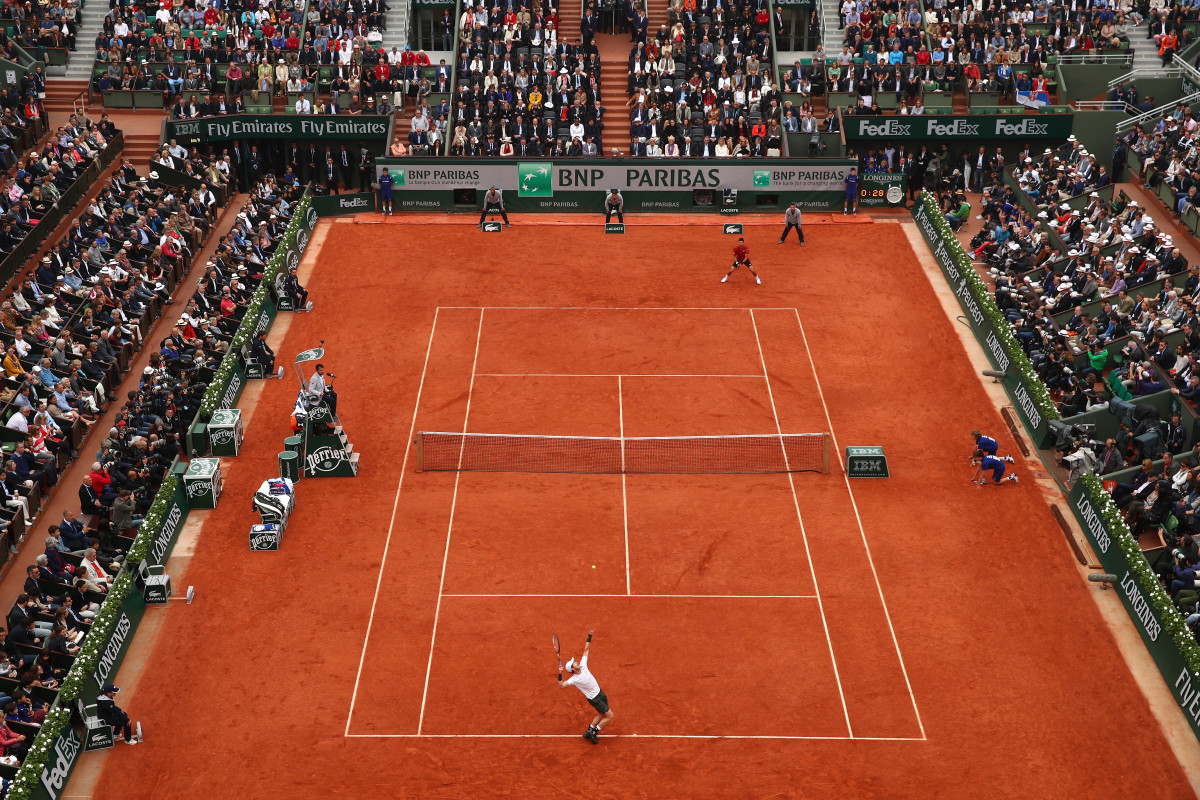
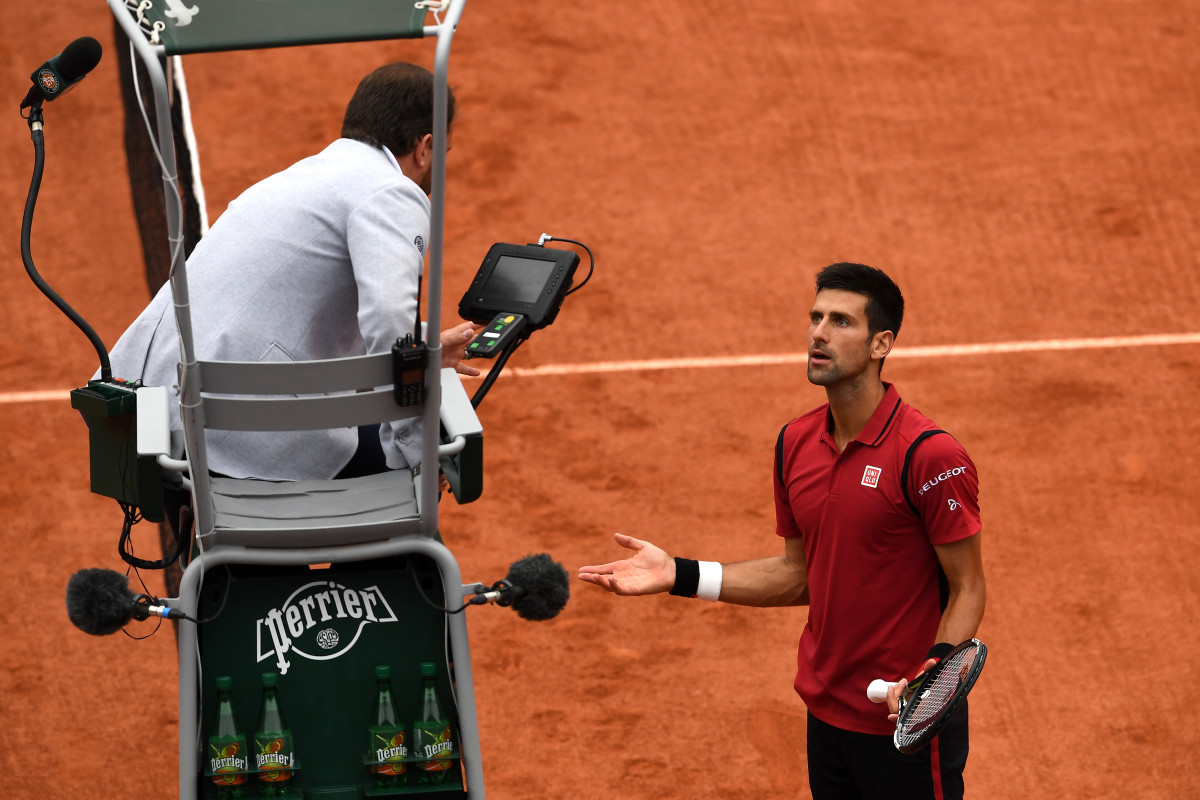
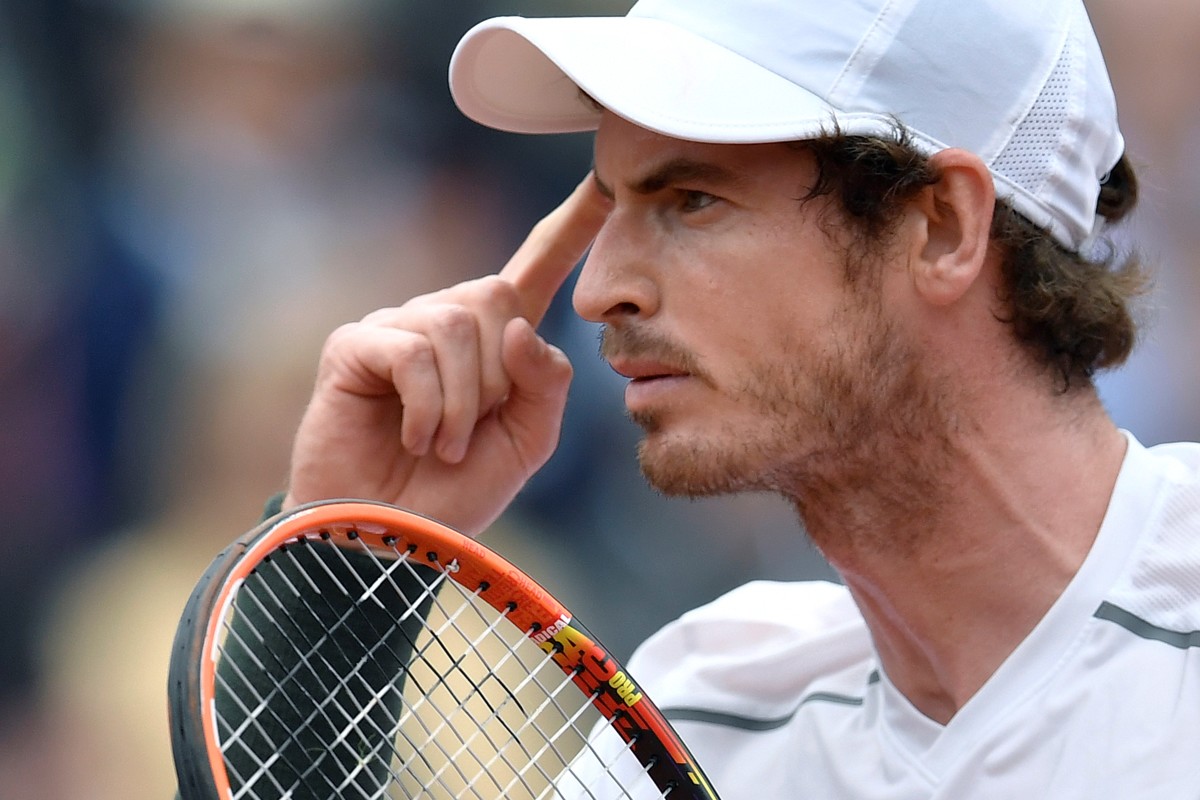
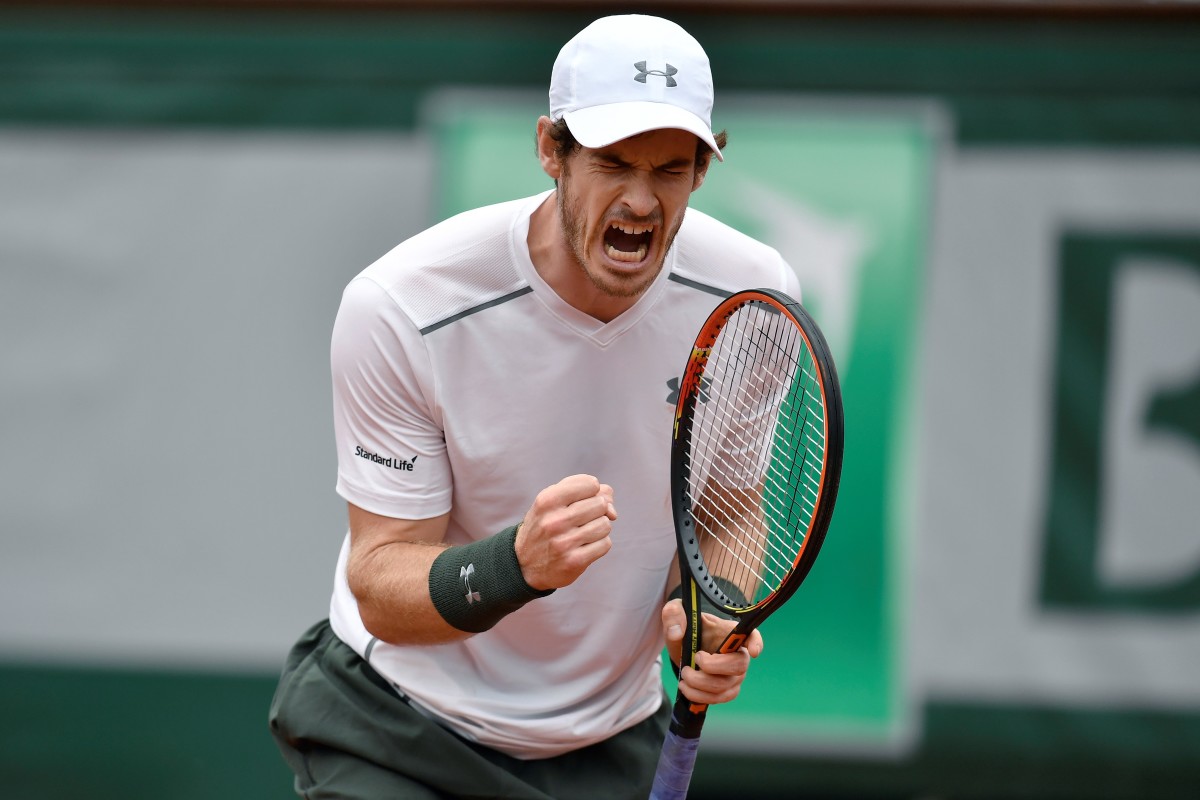
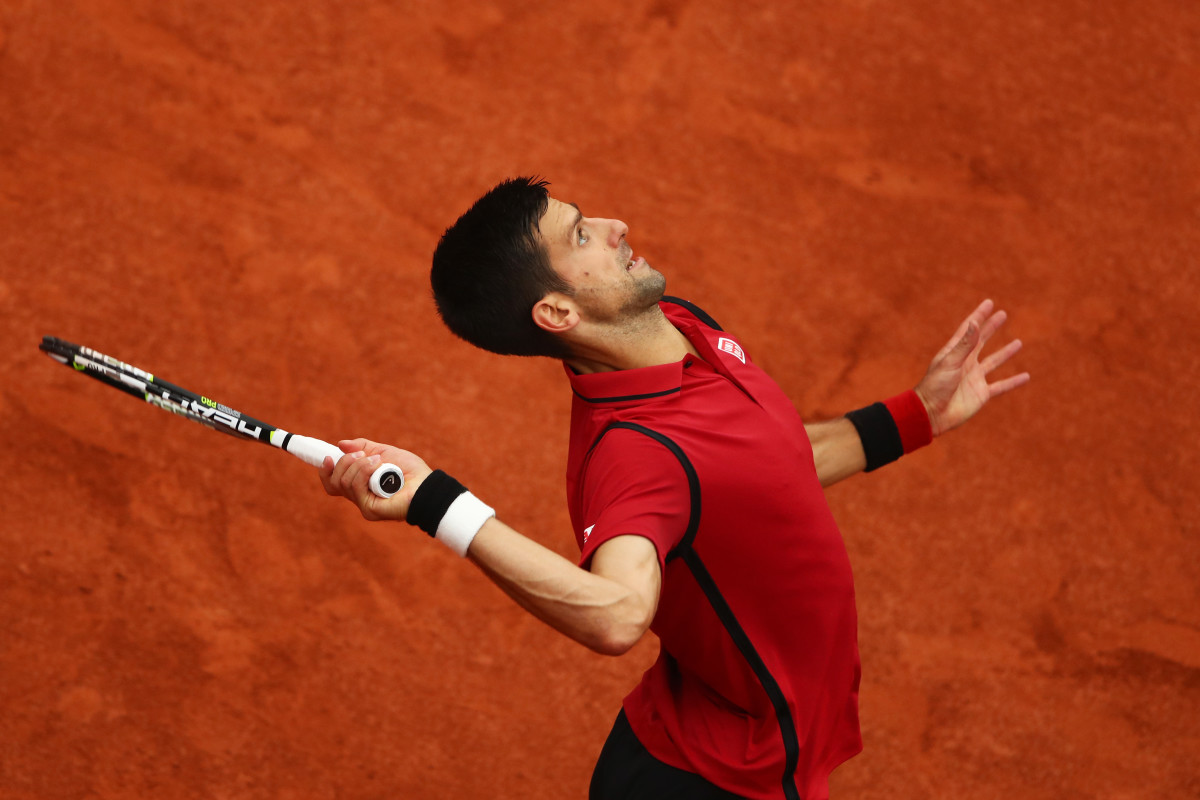
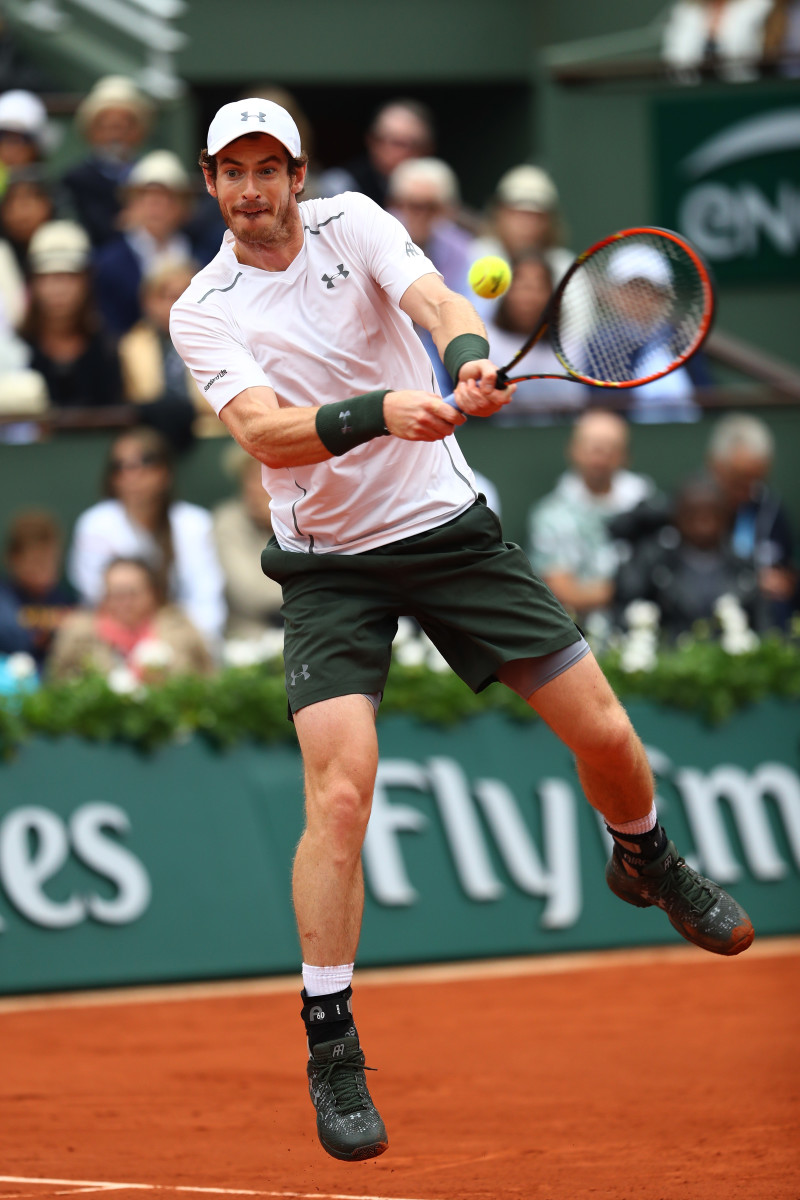
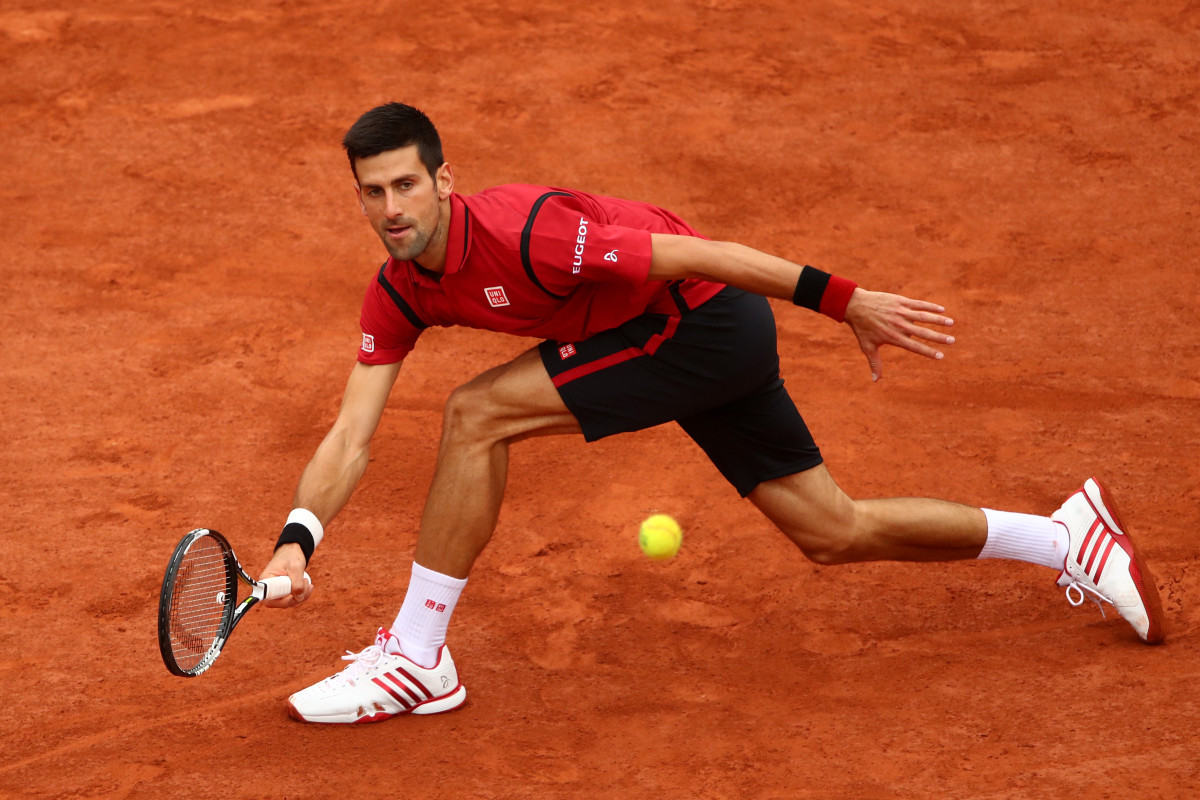
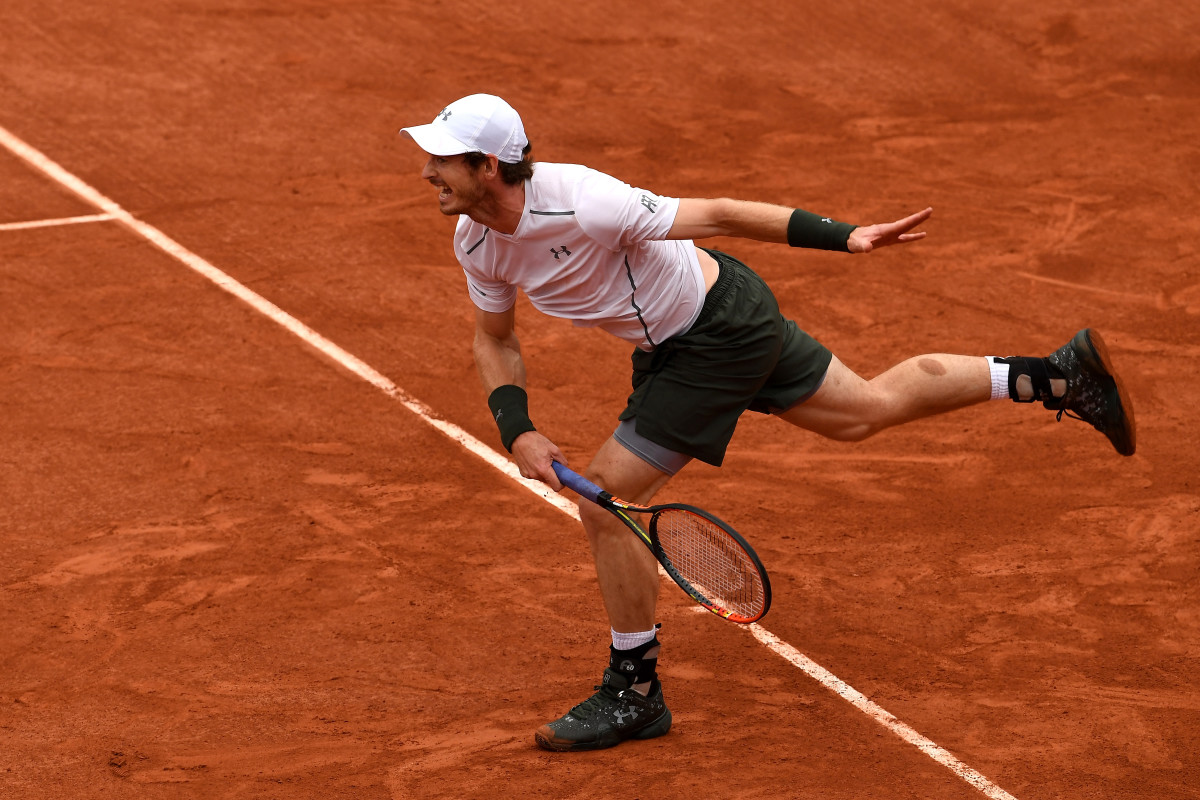
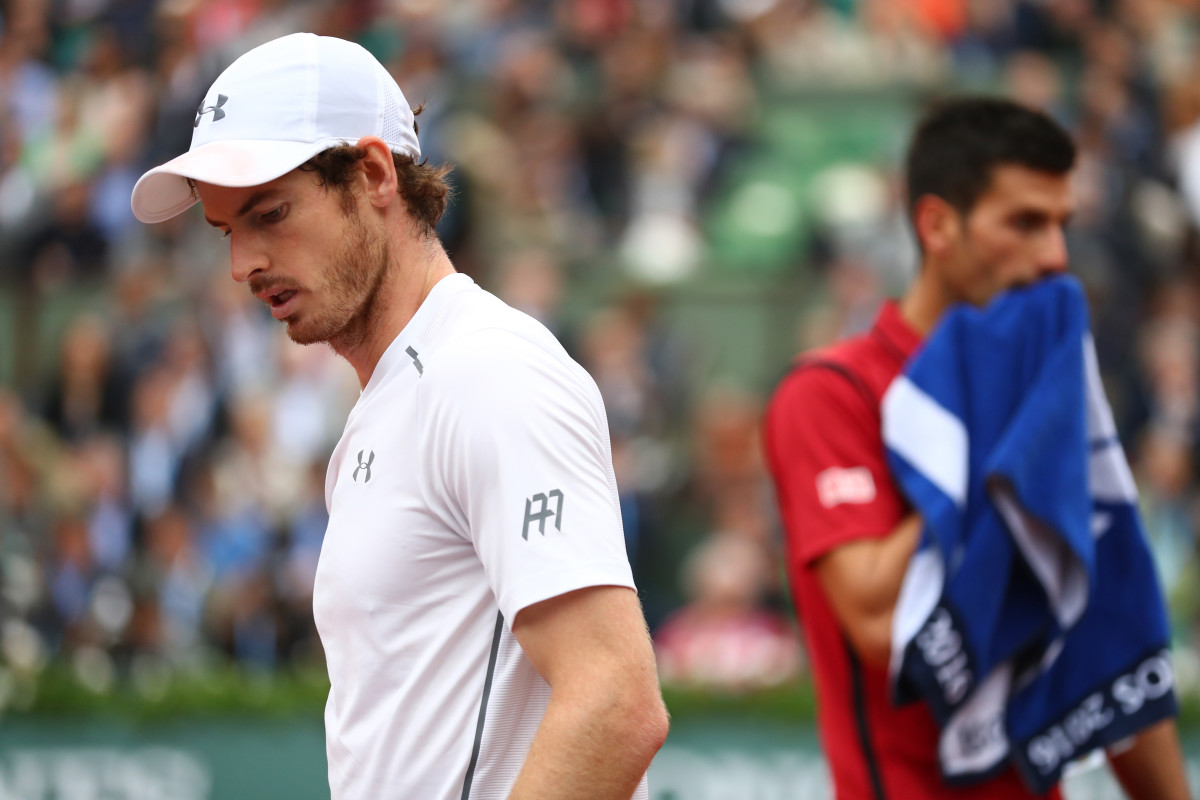
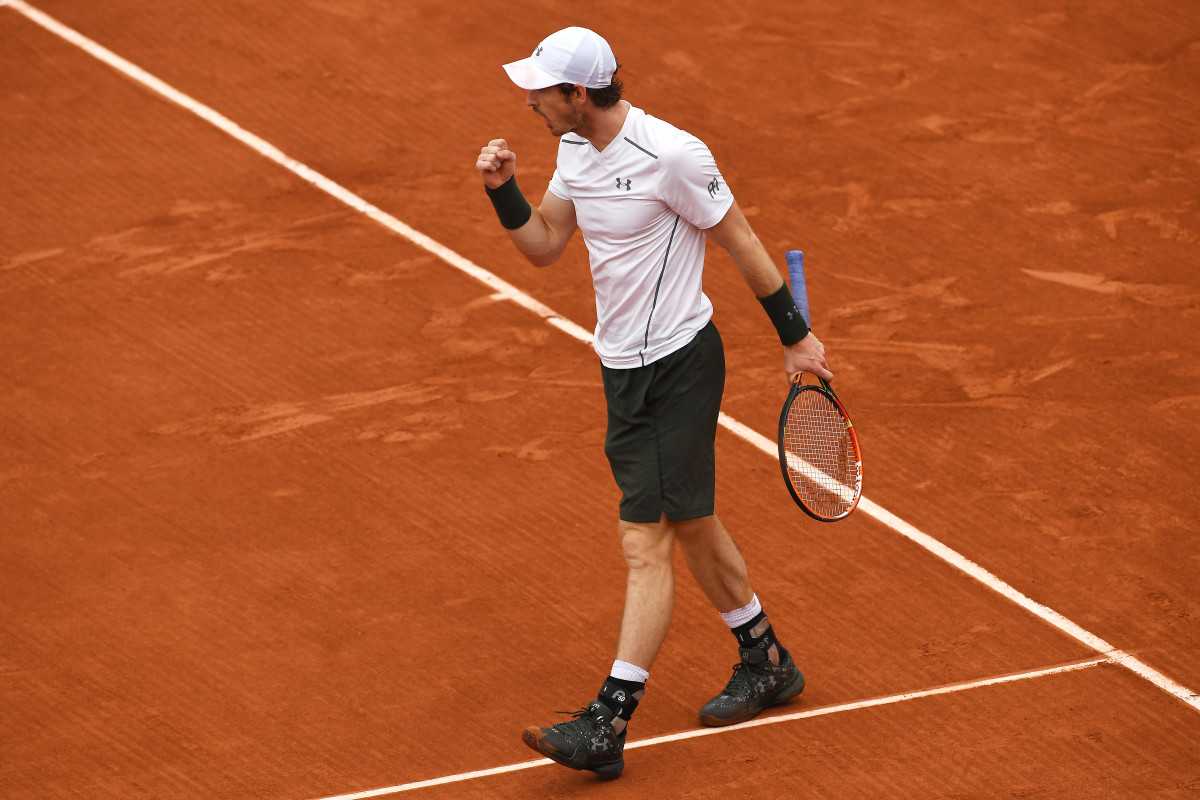
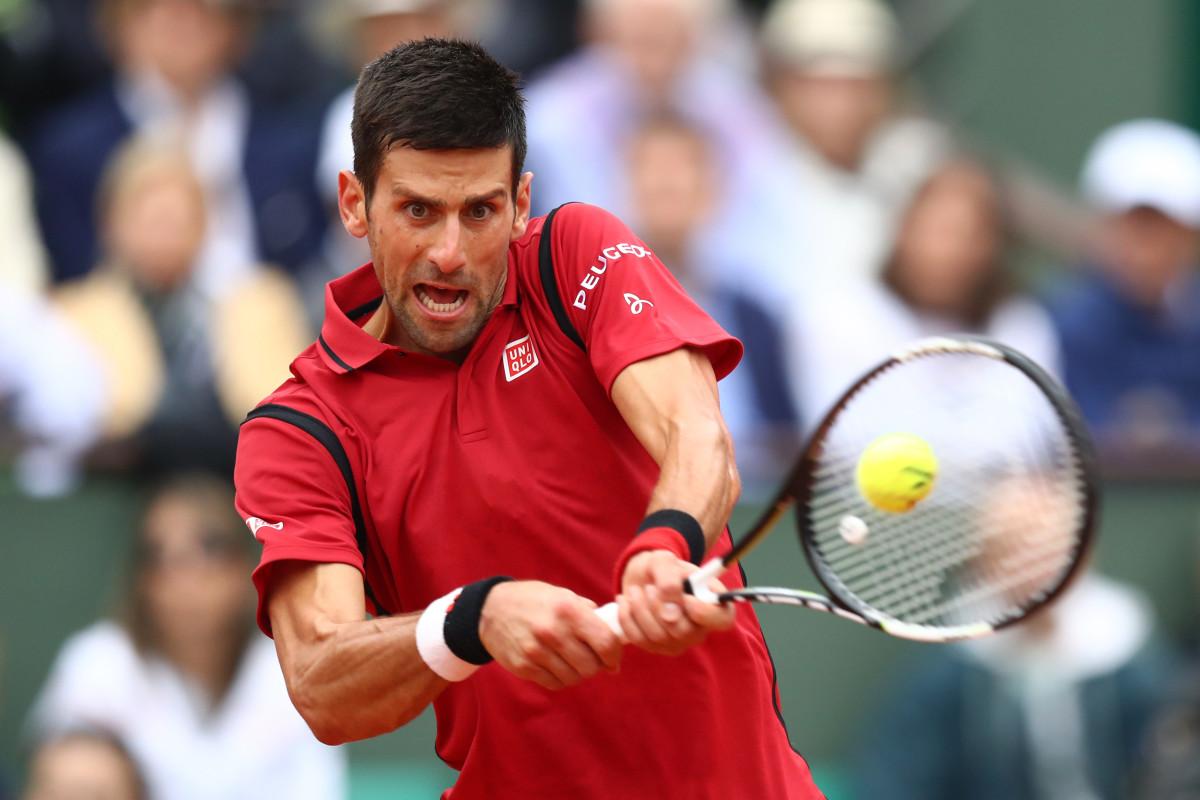
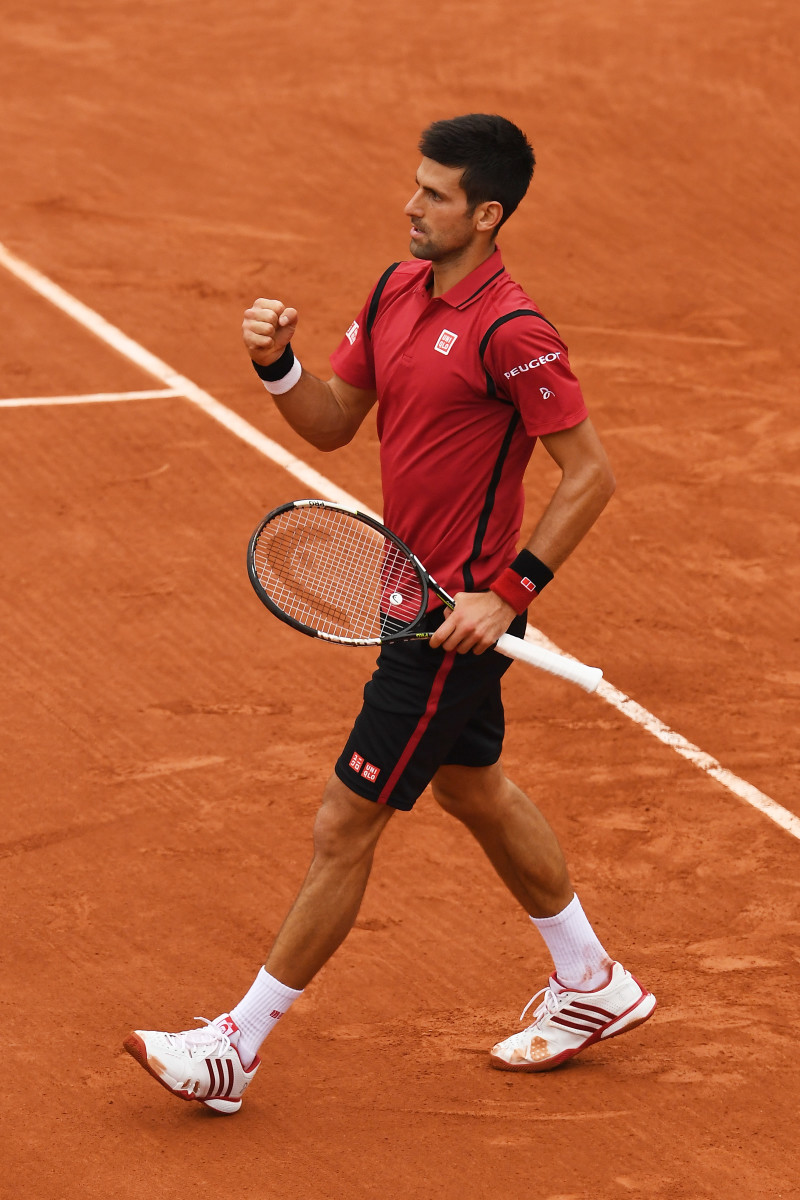
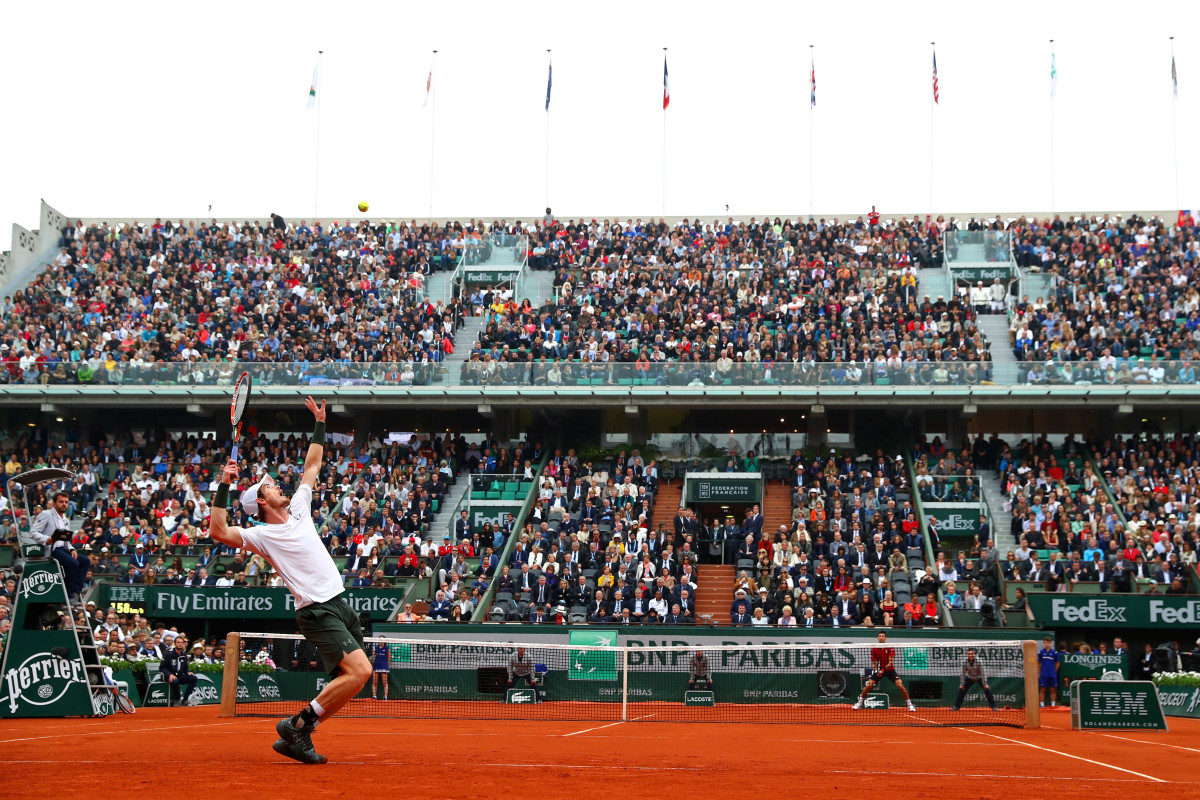
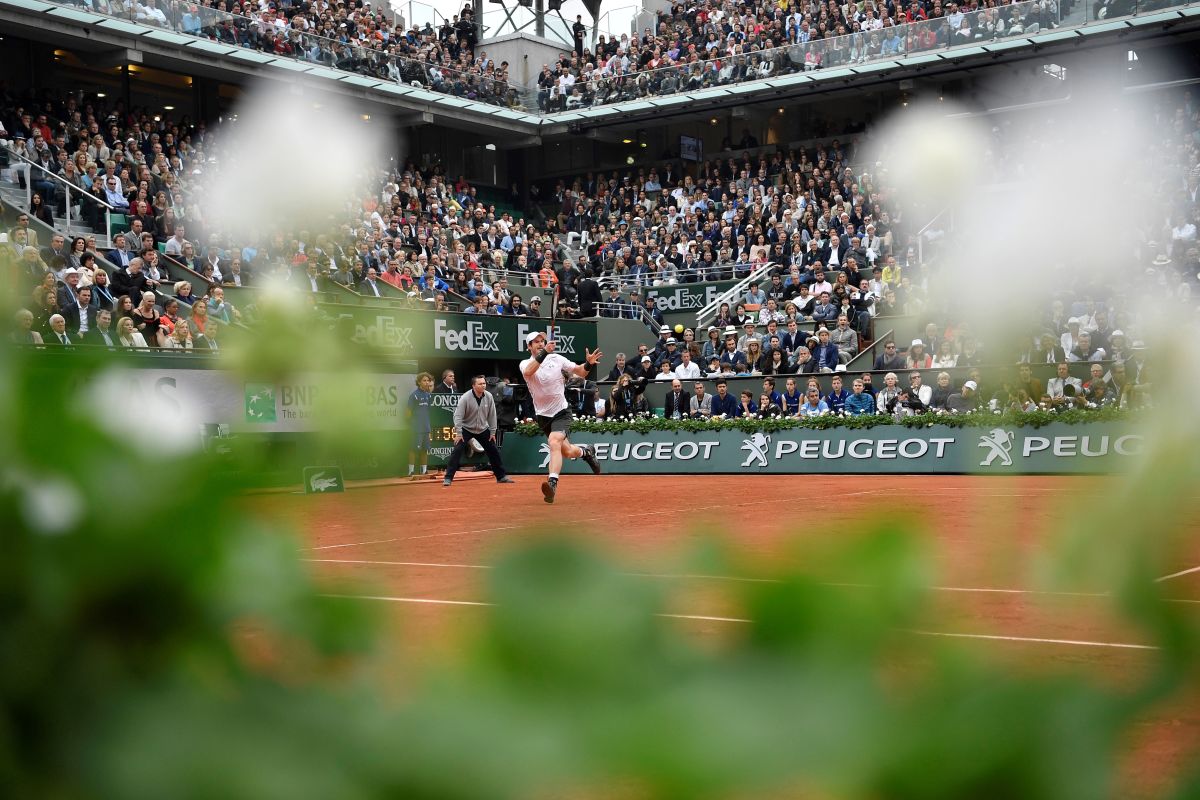
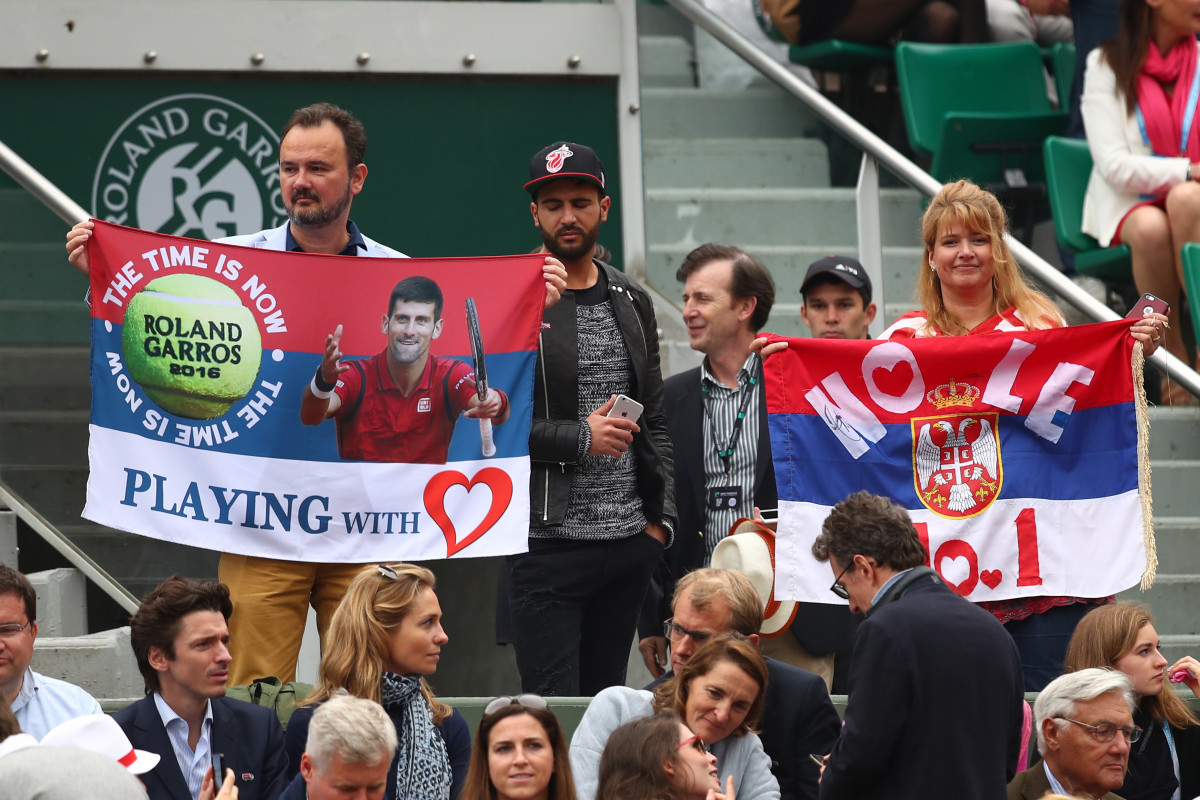
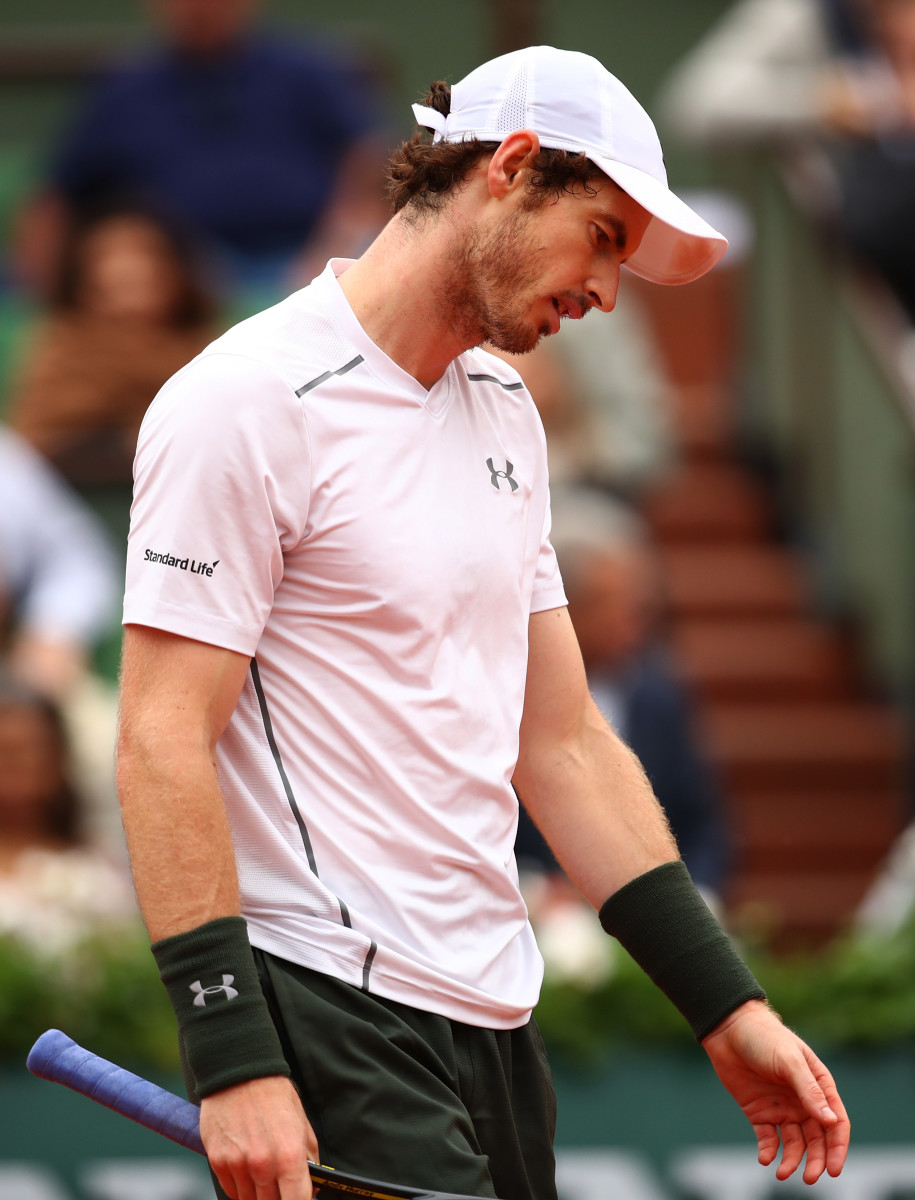
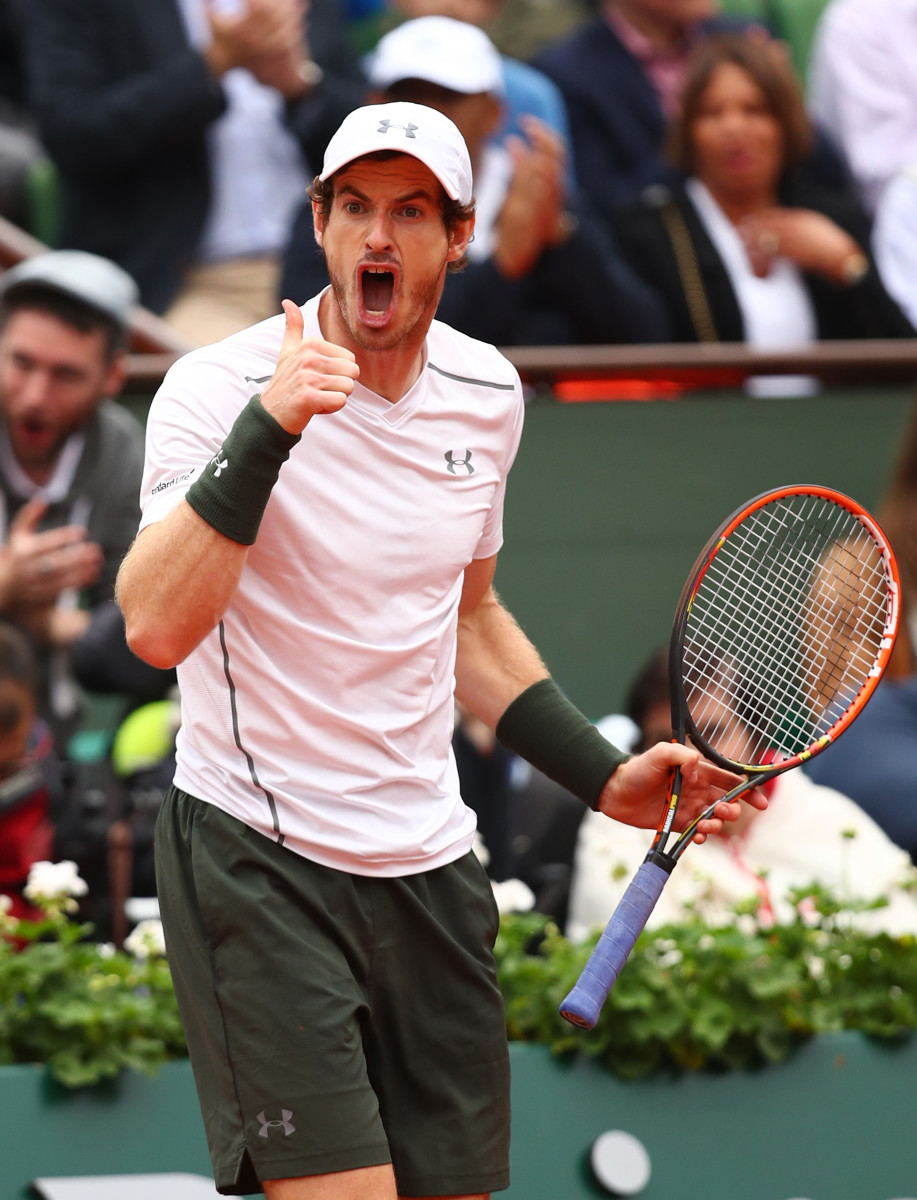
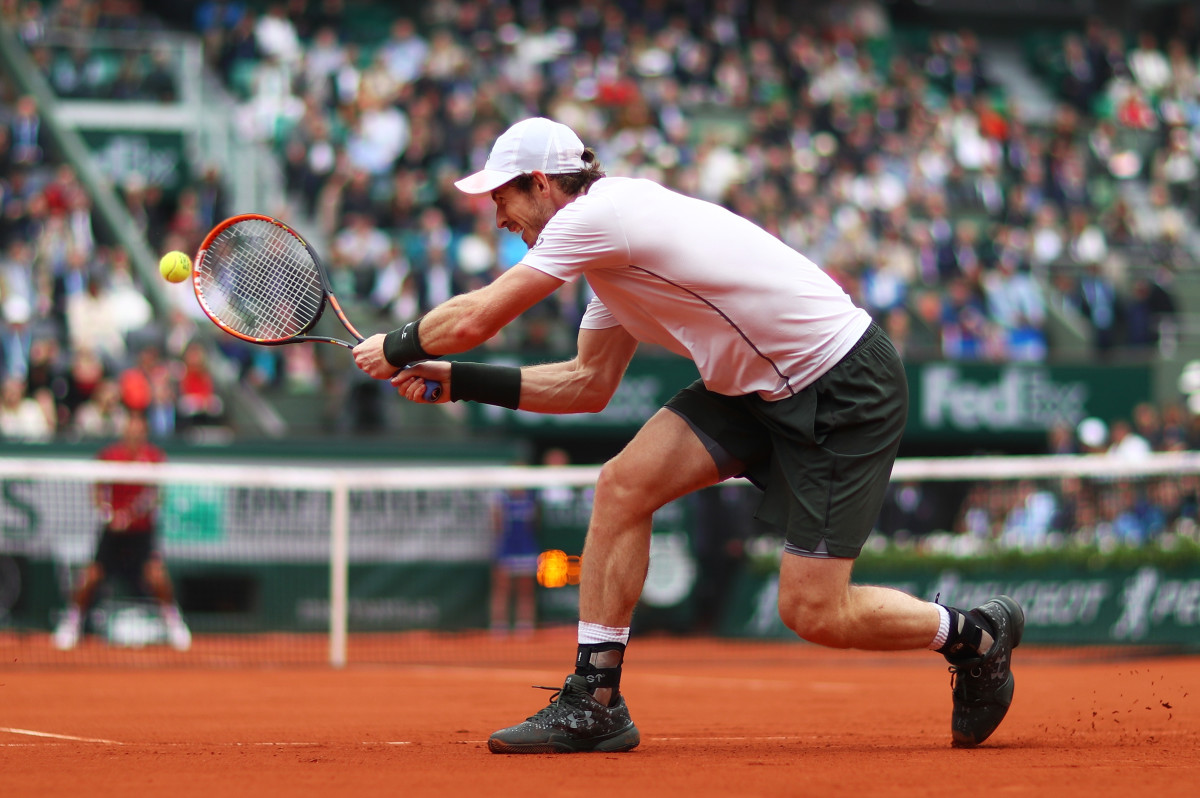
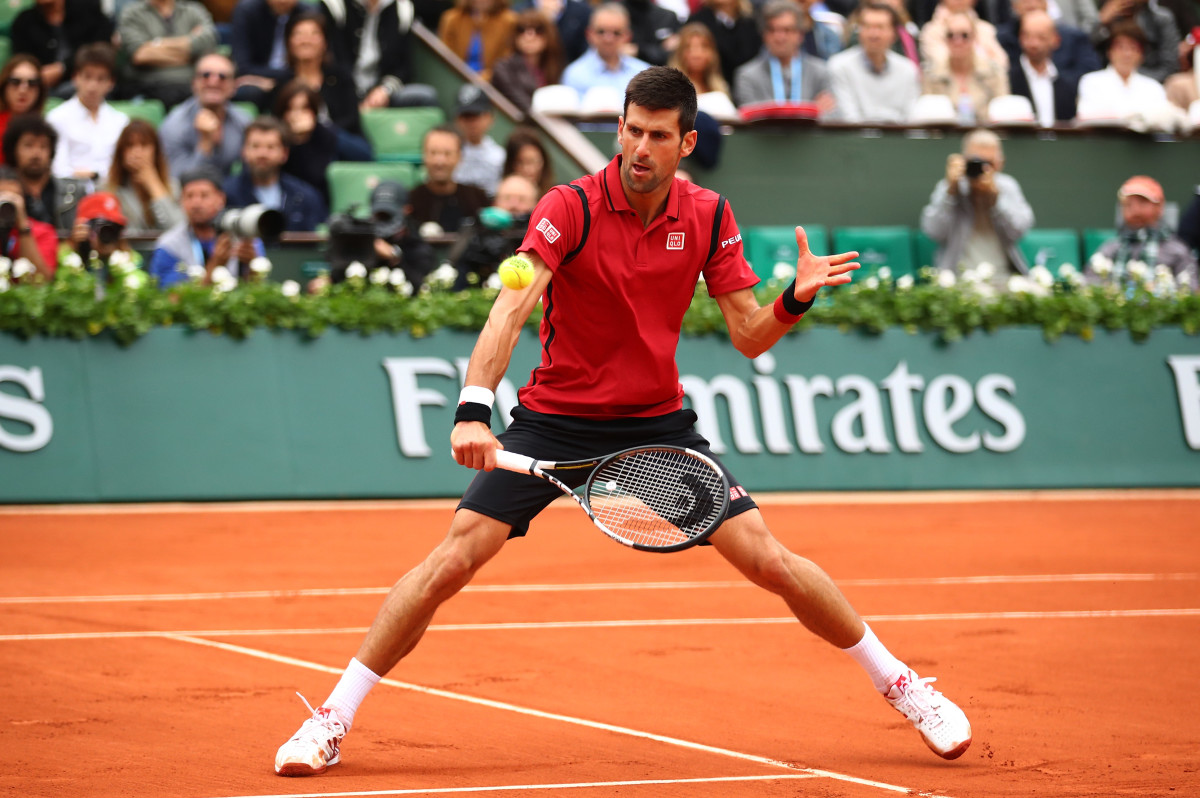
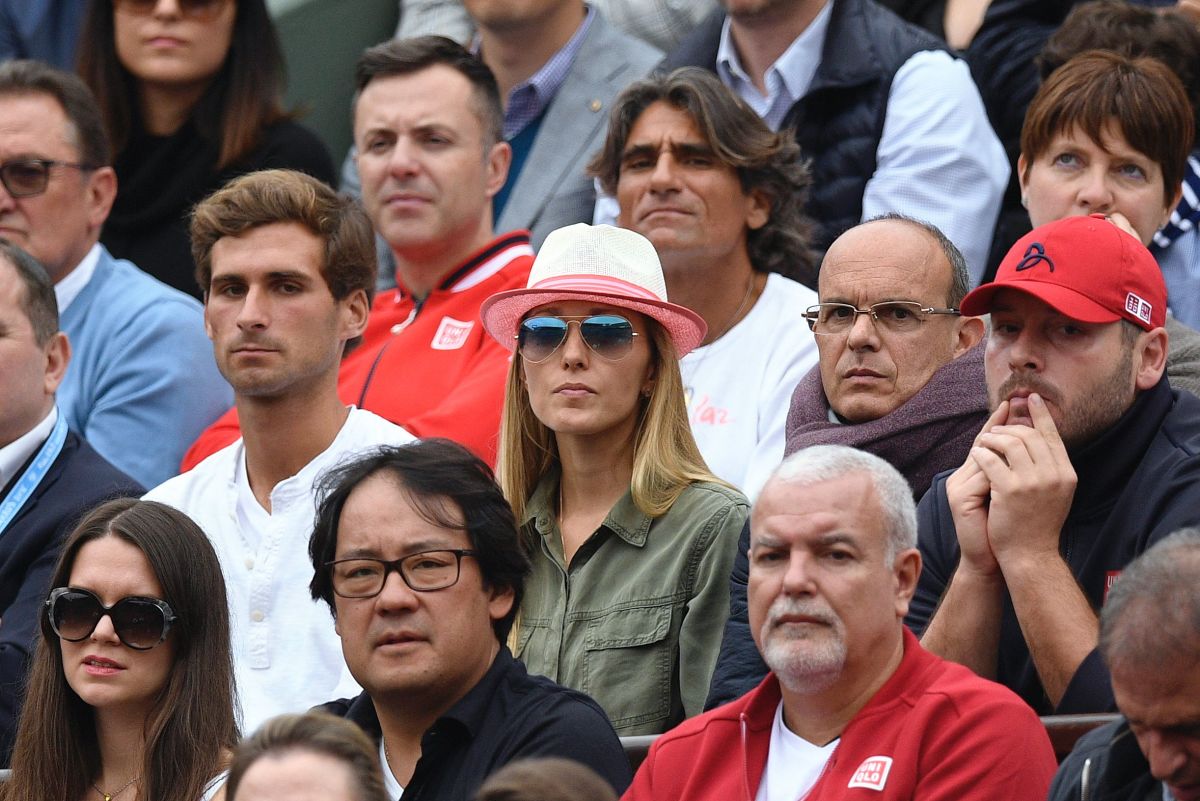
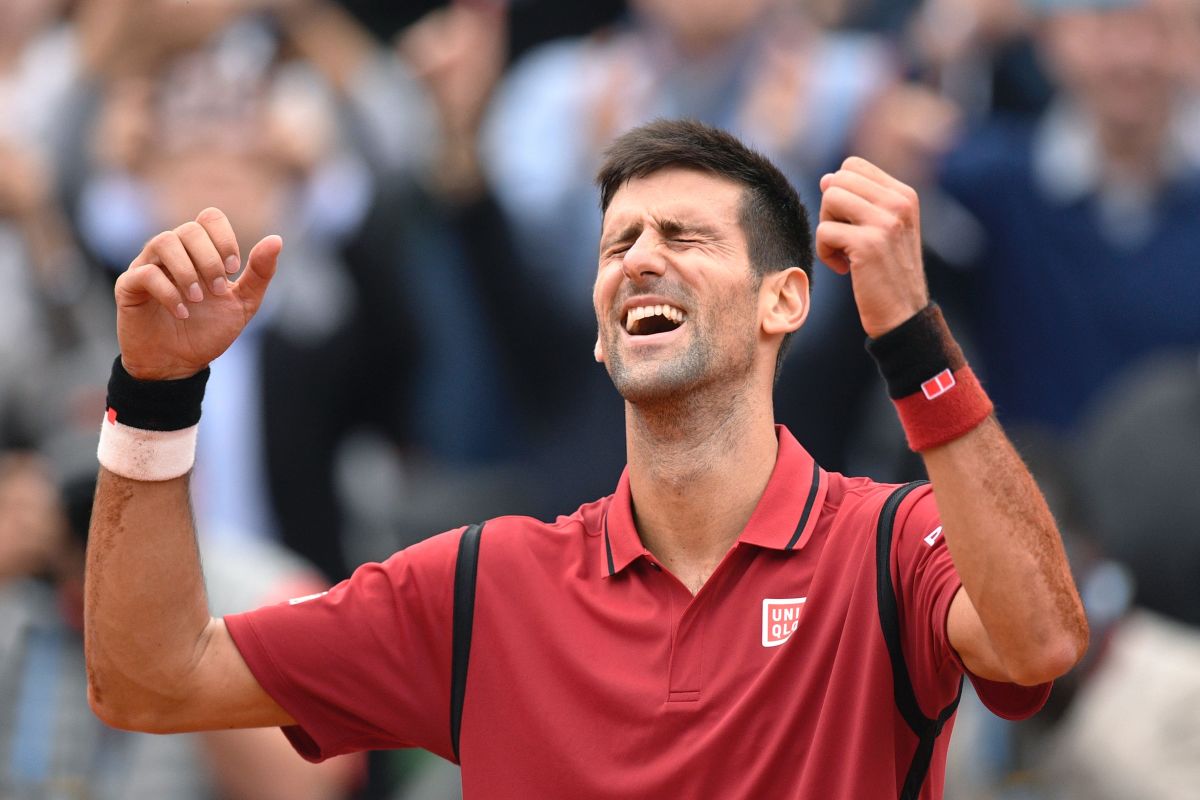
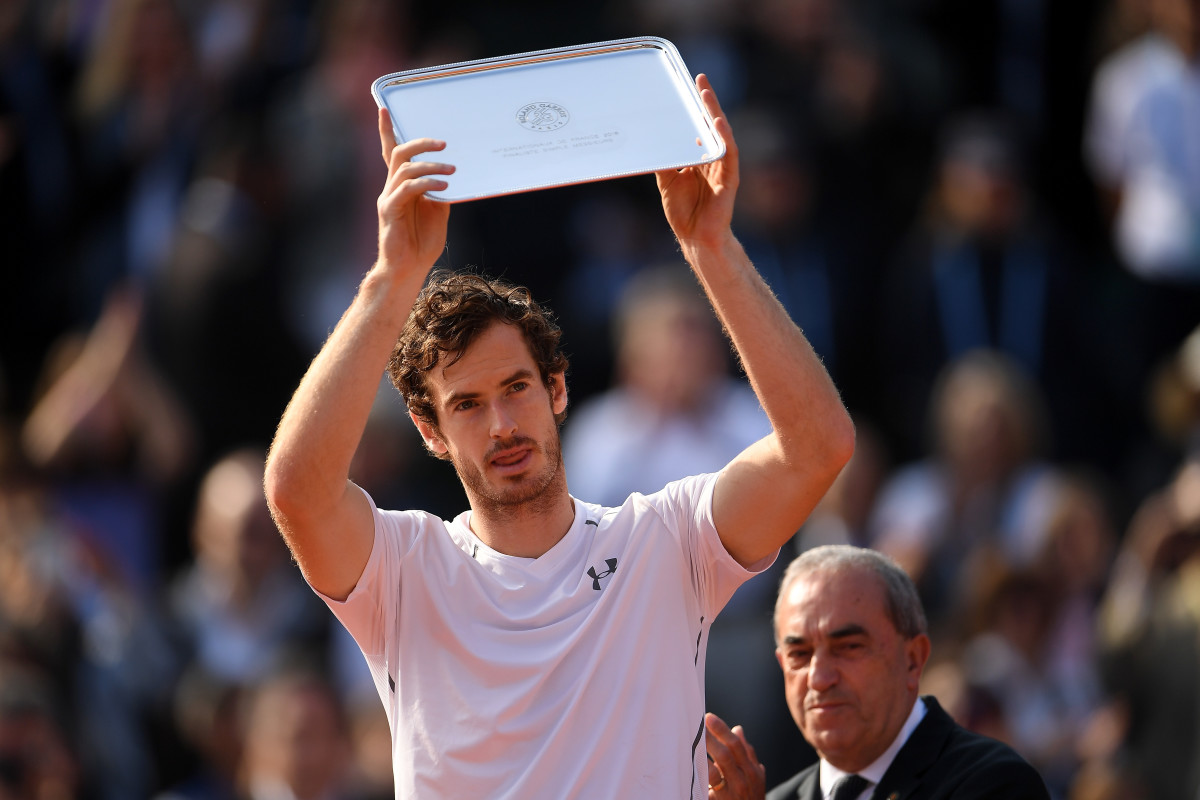
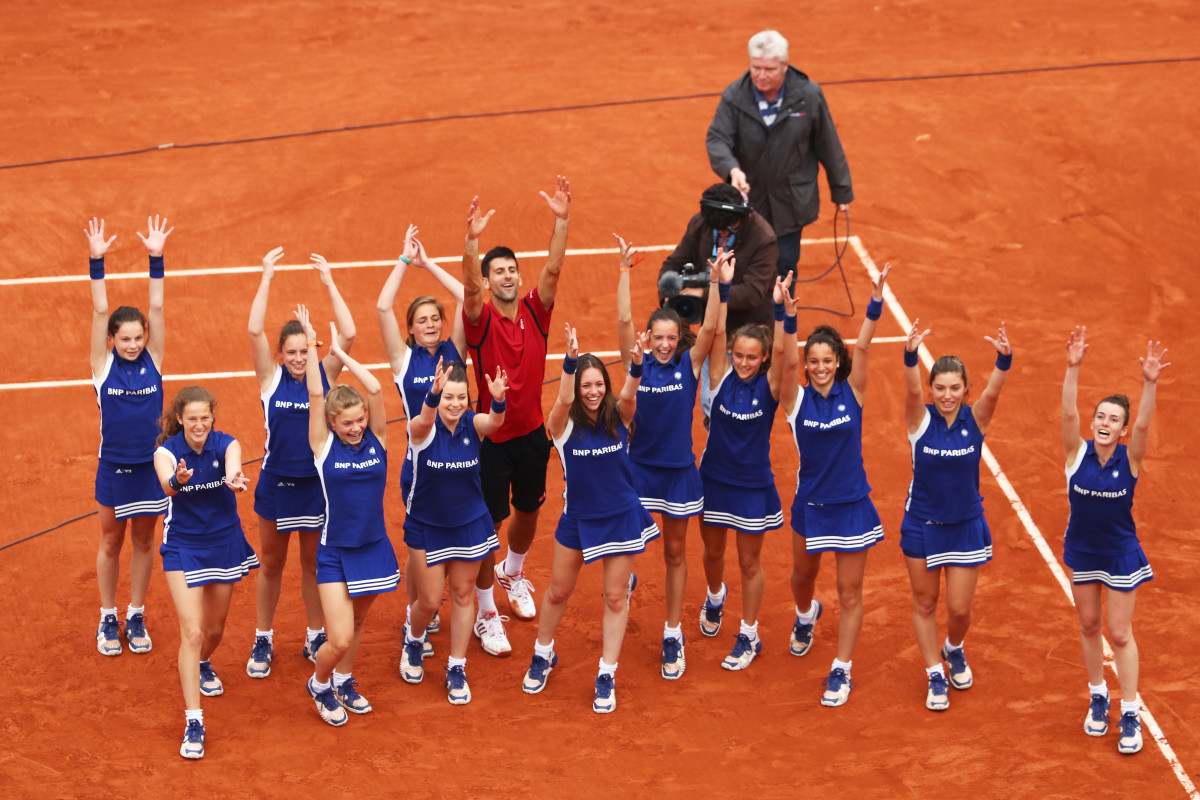
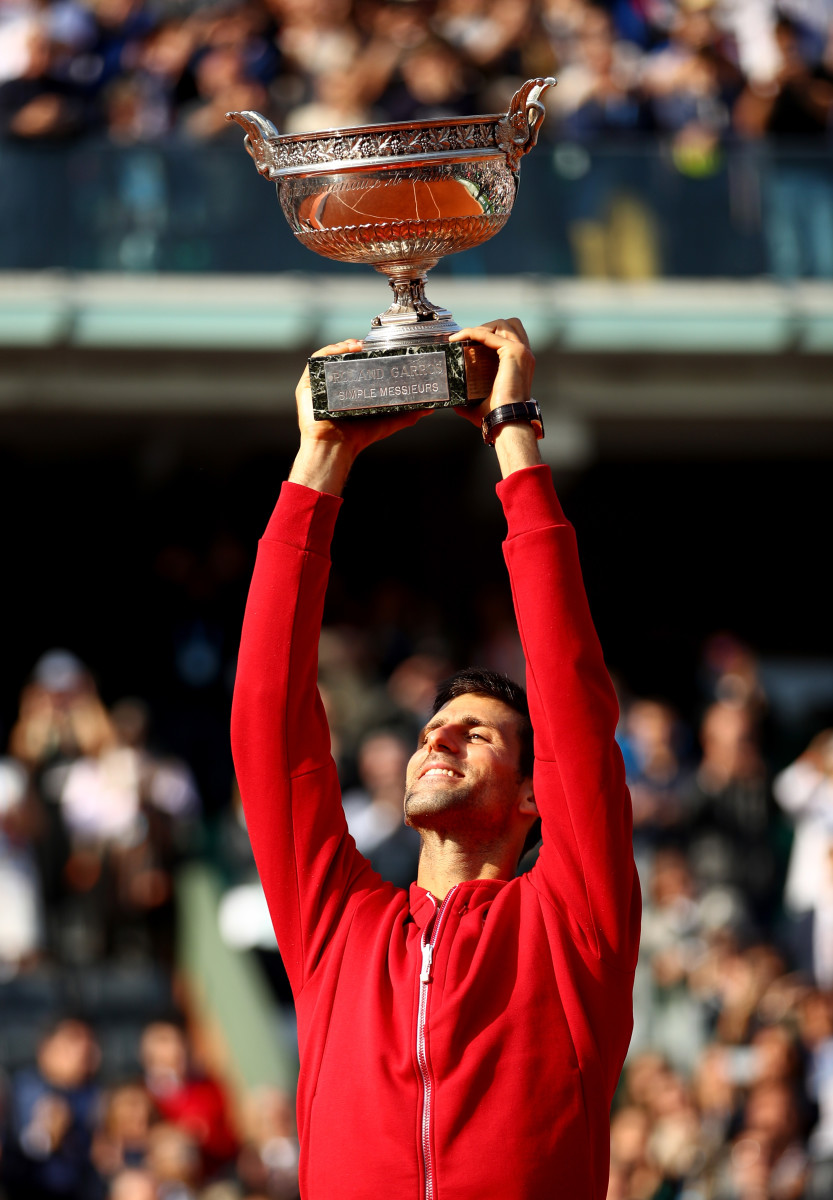
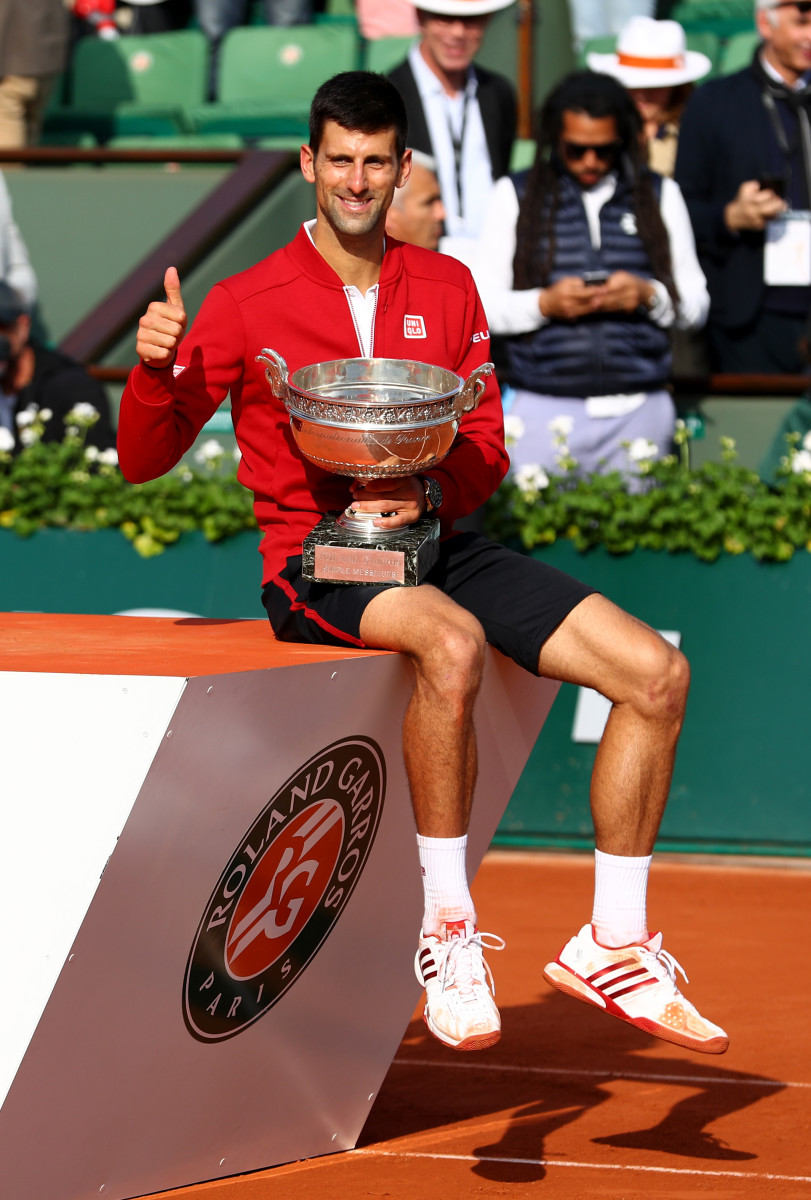
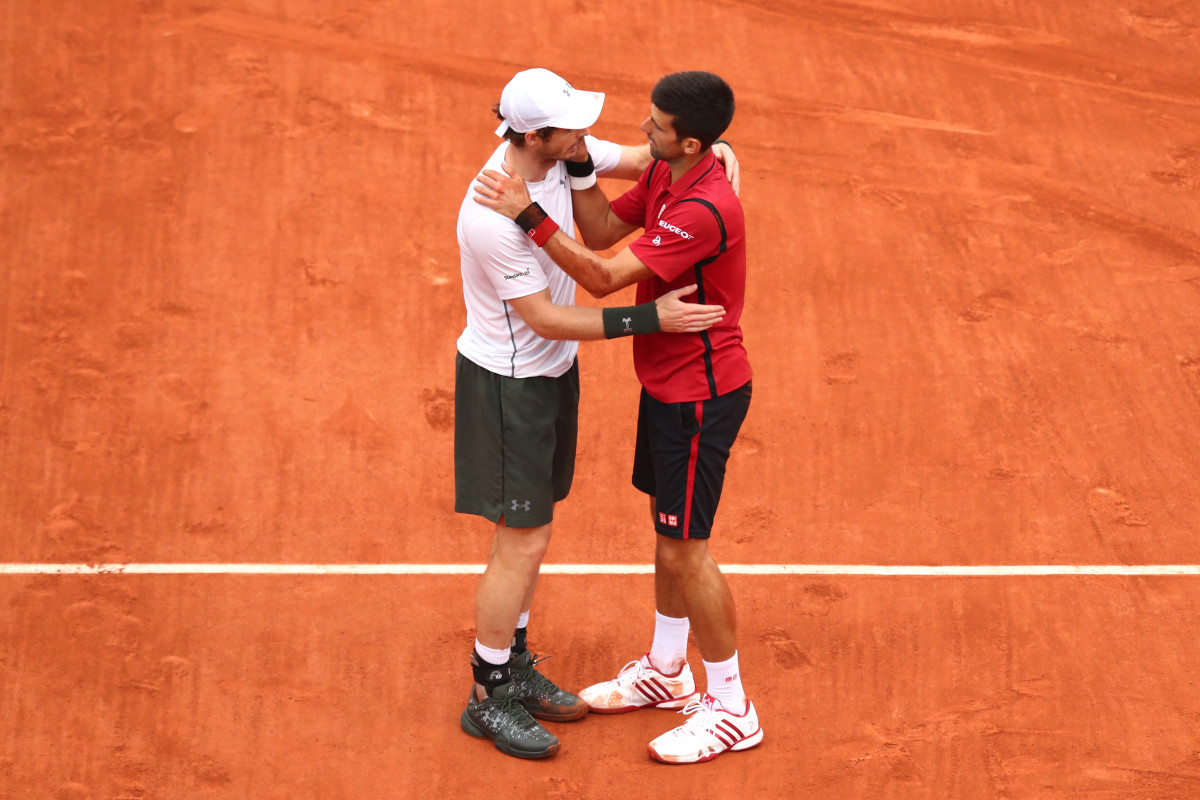
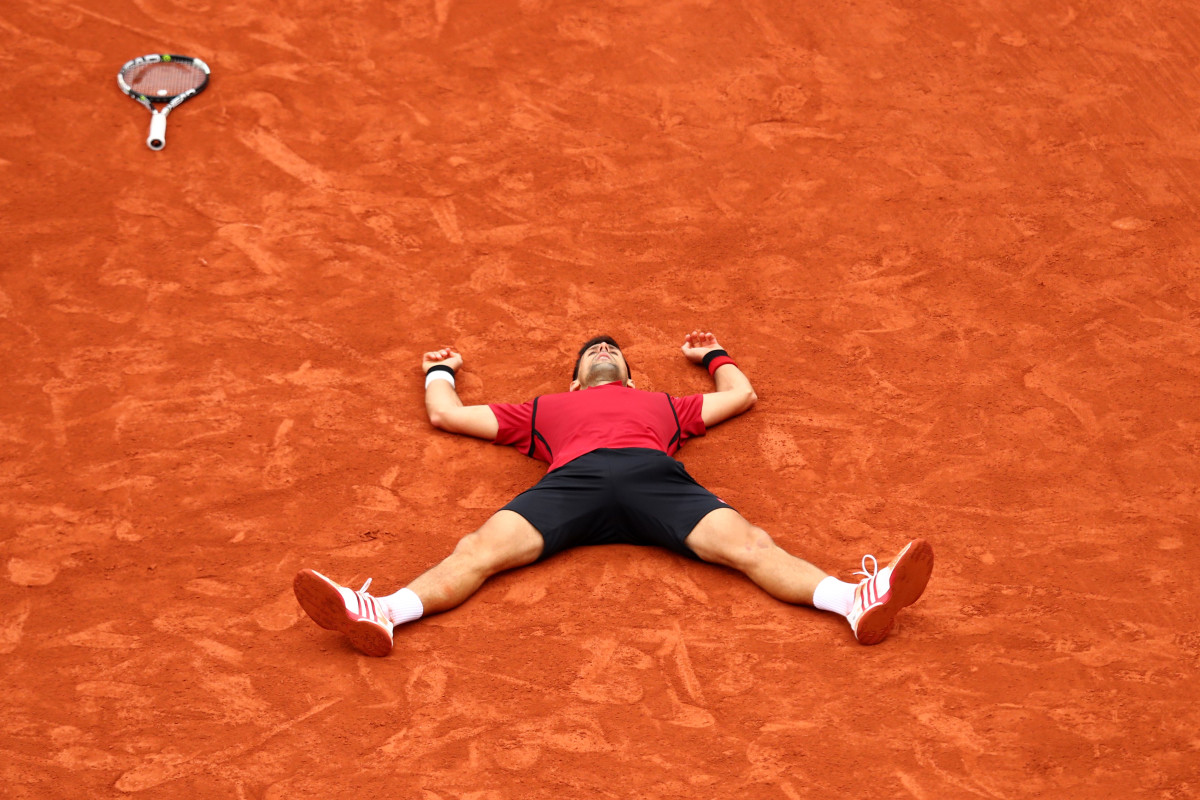
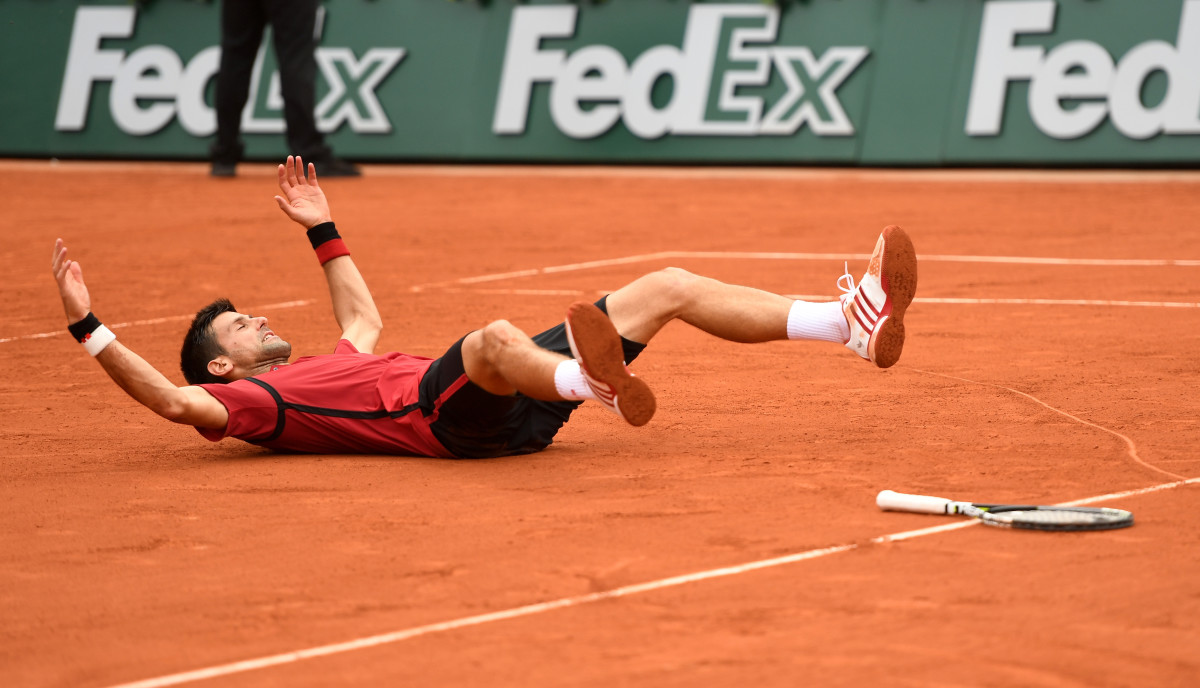
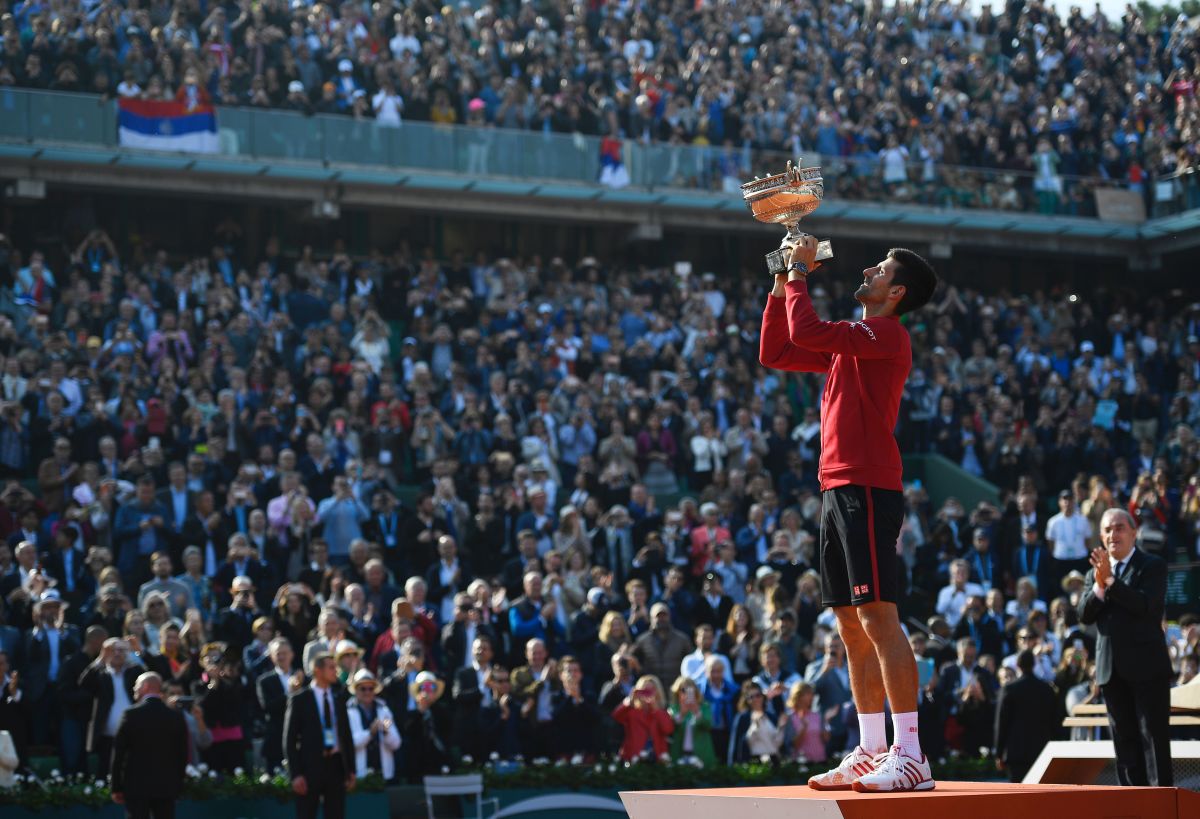
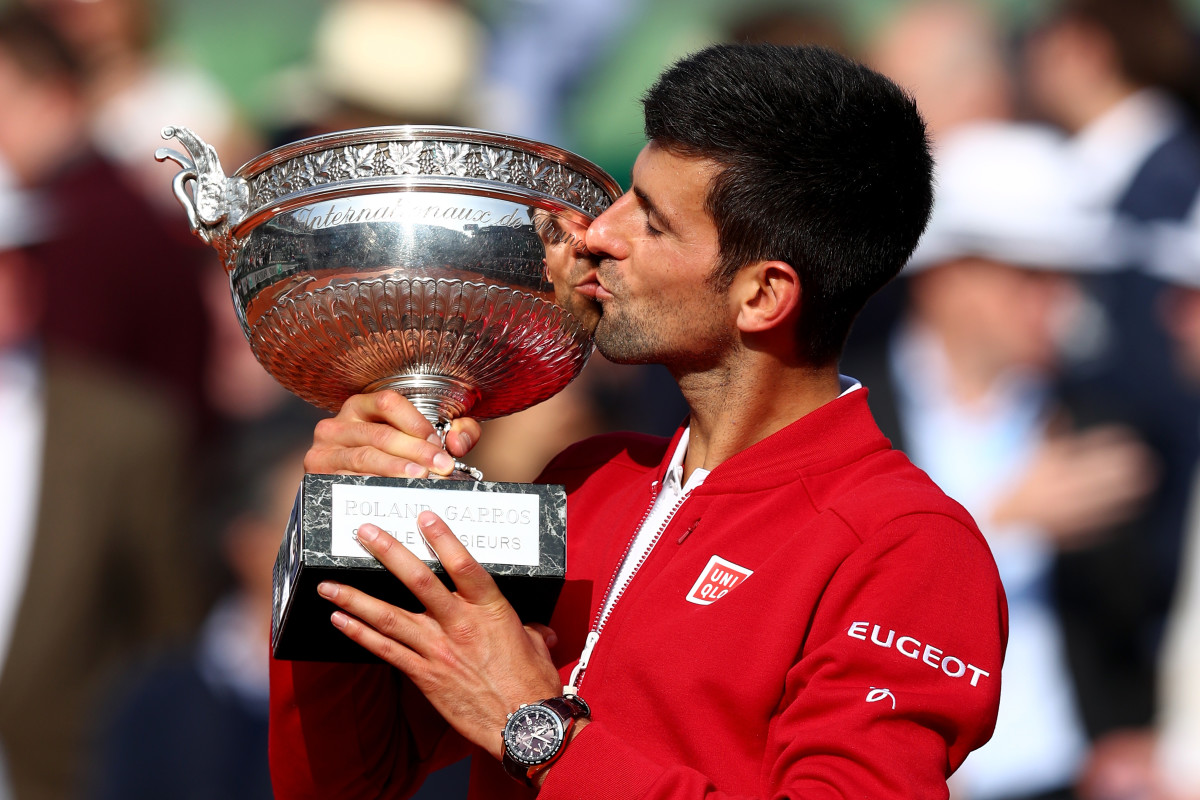
• When Robin Haase’s coach was arrested in connection with a murder, it—quite reasonably—made for big news. But it’s interesting to note how Haase filled the vacancy. By hiring former WTA player Kristie Boogert. Calling it the Murray. But good for Haase for noting that what the Dutch call a fallus (h/t, Google translate!) is not a prereq for tennis insight. And good on Haase for this:
• Unpredictable as this sport can be, here’s a safe bet: for the foreseeable future, each major will set a new record for the oldest field. In Paris, 50 men in the main draw—nearly half—were 30 and older. There are all sorts of causes, but let’s spend a moment on the effect. A) Fans can forge real attachments with players over the course of careers of unprecedented length. B) The earning potential—and financial inducement to take up tennis as a kid—increase greatly when the average career is so expanded. C) Maturity in years often equals emotional maturity. Tennis still has its issues, from match-fixing to doping allegations. But the era of “teenage burnout” seems like a long time ago.
Compressed schedule can help Djokovic win French Open title
• One of the best deals in sports: the qualifying rounds at tournaments. Often, for no admission fee, fans can watch world-class athletes compete in sanctioned competition. But, along with your sunscreen, bring copious supplies of empathy. There’s Alejandro Falla, who nearly beat Roger Federer on Centre Court—out in round one. There’s Tim Smyczek, just a few rankings slots from having made the main draw—out in round one, too. Ryan Harrison, once a bright American prospect—out, heartbreakingly, with a three-set loss. Ditto for Melanie Oudin. Kaia Kanepi, a top 20 player not long ago—out as well. To paraphrase Rodney Dangerfield: tough sport, tough sport.
• Never mind Federer and Nadal. You know who could really benefit from a successful Wimbledon campaign? Grigor Dimitrov. Athletes possess—and this is almost an occupational necessity—tremendous powers of denial. When you characterize your struggles as “scary” and openly concede, “I’ve lost a lot of confidence in myself,” that says a great deal.
• One of our favorite press conference exchanges…
Q. Kiki Bertens from The Netherlands is moving like a fast train here at Roland Garros. Are you afraid?
TIMEA BACSINSZKY: Well, well done. I didn't know I was playing her. Oh, no, that's not true. Somebody told me already…. Talking about trains, I don't know. Switzerland is quite famous for trains, too, you know.
2016 French Open Daily Data Visualizations
• At Wimbledon, Venus Williams will make her 71st appearance at a major, tying Amy Frazier for the WTA record in the Open Era. Serena is expected to make her 64th major showing, putting her fourth. Among active players, Venus and Serena are the leaders. And here people —including, in all fairness, their own father—predicted they would be through with tennis by age 25.
• Cagla Buyukakcay became the first Turkish woman to play in the main draw of the French Open. A day later, İpek Soylu became the second.
• I’m squarely with Jim Courier: the majors are tennis’ flagship events and it only makes sense to wrap them around three weekends, as the Olympics now do. This maximizes sessions and weekend television windows and enables more fans—who can't escape M-F—a chance to watch. But the French Open’s Sunday start is an awkward compromise. It’s a quasi-session that seldom features the top players and makes for a low-energy kick-off to the event.
• In one of the better matches of the tournament, Richard Gasquet beat Kei Nishikori in a four-set fourth-rounder. For a variety of reasons—not least the build-up to the 2020 Olympics in Tokyo—tennis is fortunate to have Nishikori in the cast. But the Slam results just aren't there. He’s 26 years old and has been beyond the quarters of a major only once. This is not a knock, but I think we need to look at him more as a David Ferrer undersized overachiever and less as a Grand Slam contender.
French Open Mailbag: Rogers is the surprise story of the tournament
• One contender for biggest upset of the tournament: Top seeds (by far) Martina Hingis and Sania Mirza—aiming for their fourth straight Slam—fell meekly 6–3, 6–2 to the Czech team of Barbora Krejcikova and Katerina Siniakova. Stranger still, Hingis-Mirza had beaten that same team, 6–1, 6–3 on clay in April.
• There was something amusing about Marion Bartoli working for French TV—playing the role of the seen-it-all retired Grand Slam champion—interviewing the Williams sisters. Bartoli is 31. Venus turns 36 in a few weeks, Serena turns 35 in September. Same when Justine Henin, age 34, serves as the “consultant” for Elina Svitolina, Serena’s fourth round opponent. (A match Serena, by the way, won 6–1, 6–1.)
• Spare a Thought for Martin Klizan. In his first event since Indian Wells, he was up two sets and 4–1 but eventually had to retire from his first rounder against Taro Daniel due to a neck injury.
• On the first Thursday, Genie Bouchard was up 4–1 against Timea Bacsinszky, the No. 8 seed. A long way to go, but a blazing start. Bouchard then lost 10 straight games and was trailing 4–6, 0–5. She got on the board only to lose 6–4, 6–4 but the scoreline didn’t exactly capture the plot migrations. Then again, maybe it was Bacsinszky. She trailed Venus in the fourth round 0–2; then she reeled off nine of the next 10 games.
FASHION AT THE 2016 FRENCH OPEN
Fashion at the 2016 French Open
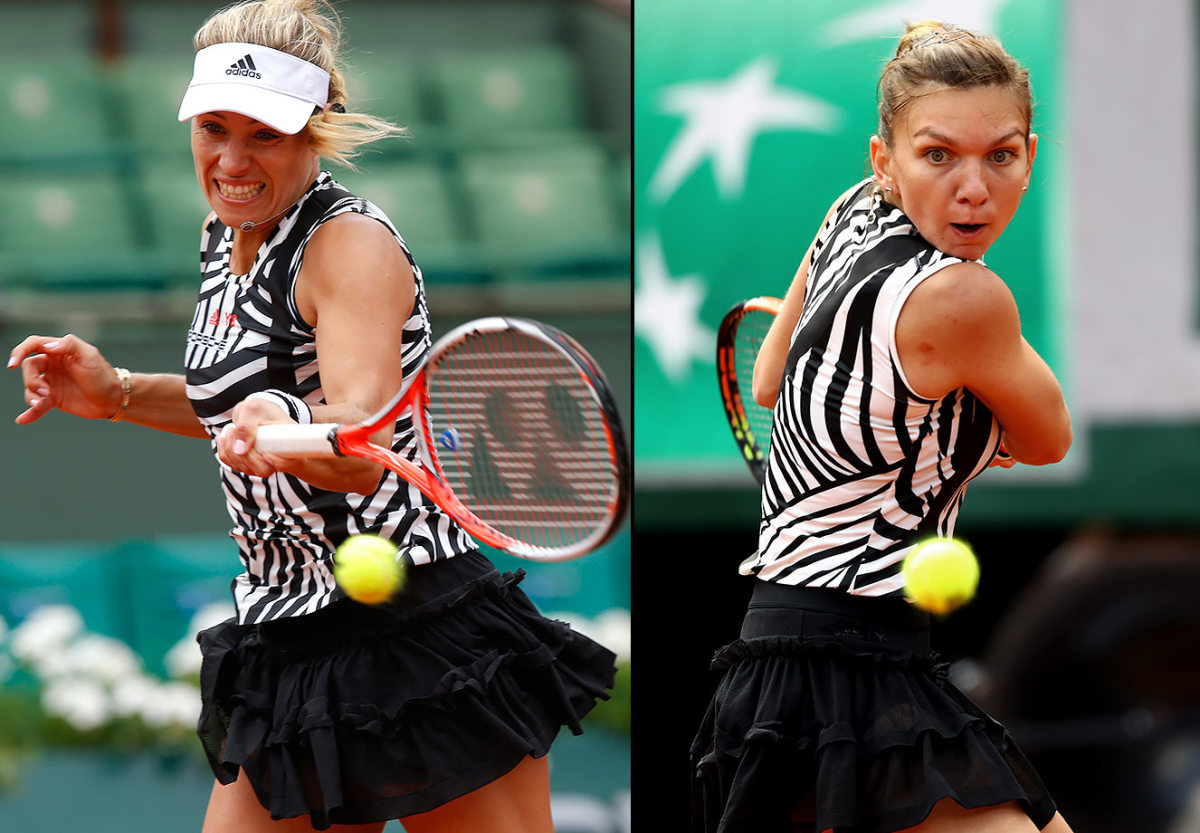
Angelique Kerber and Simona Halep
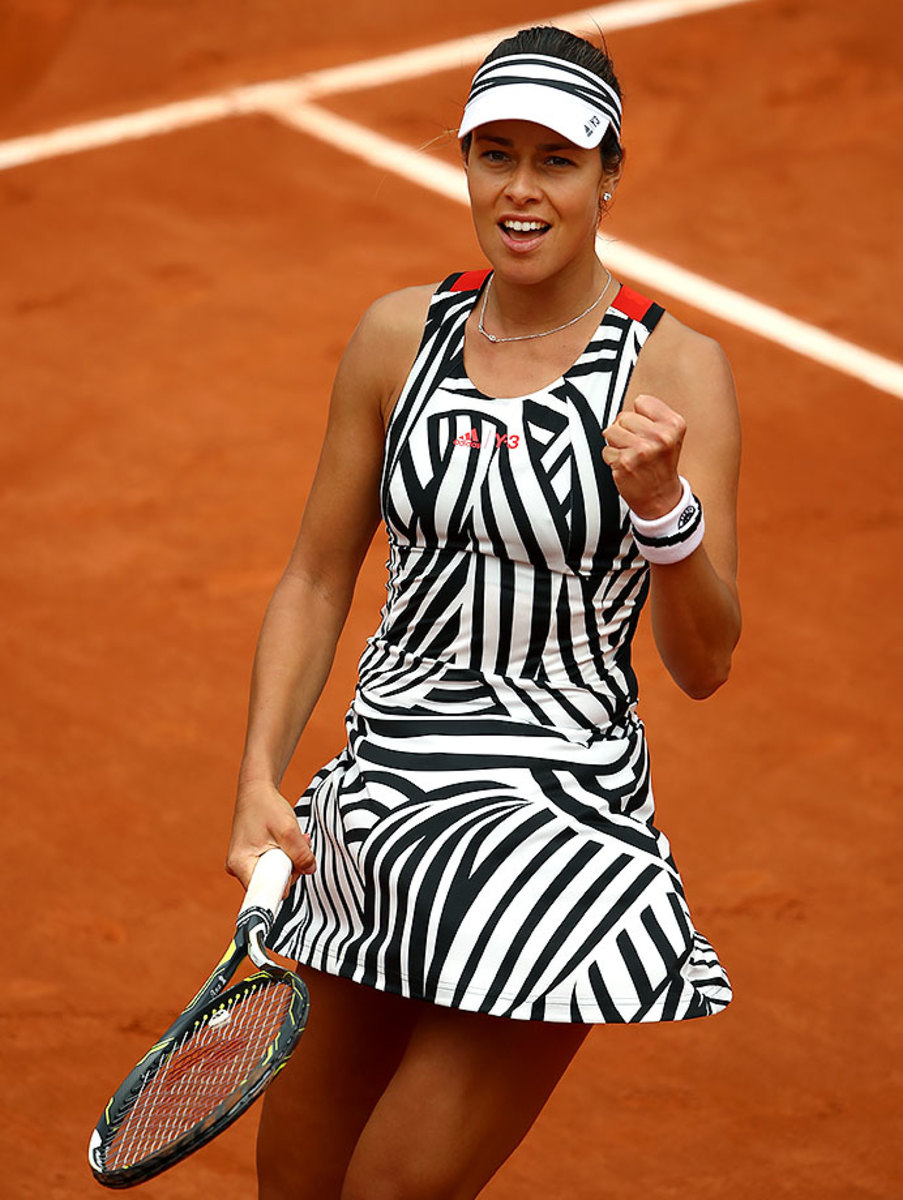
Ana Ivanovic
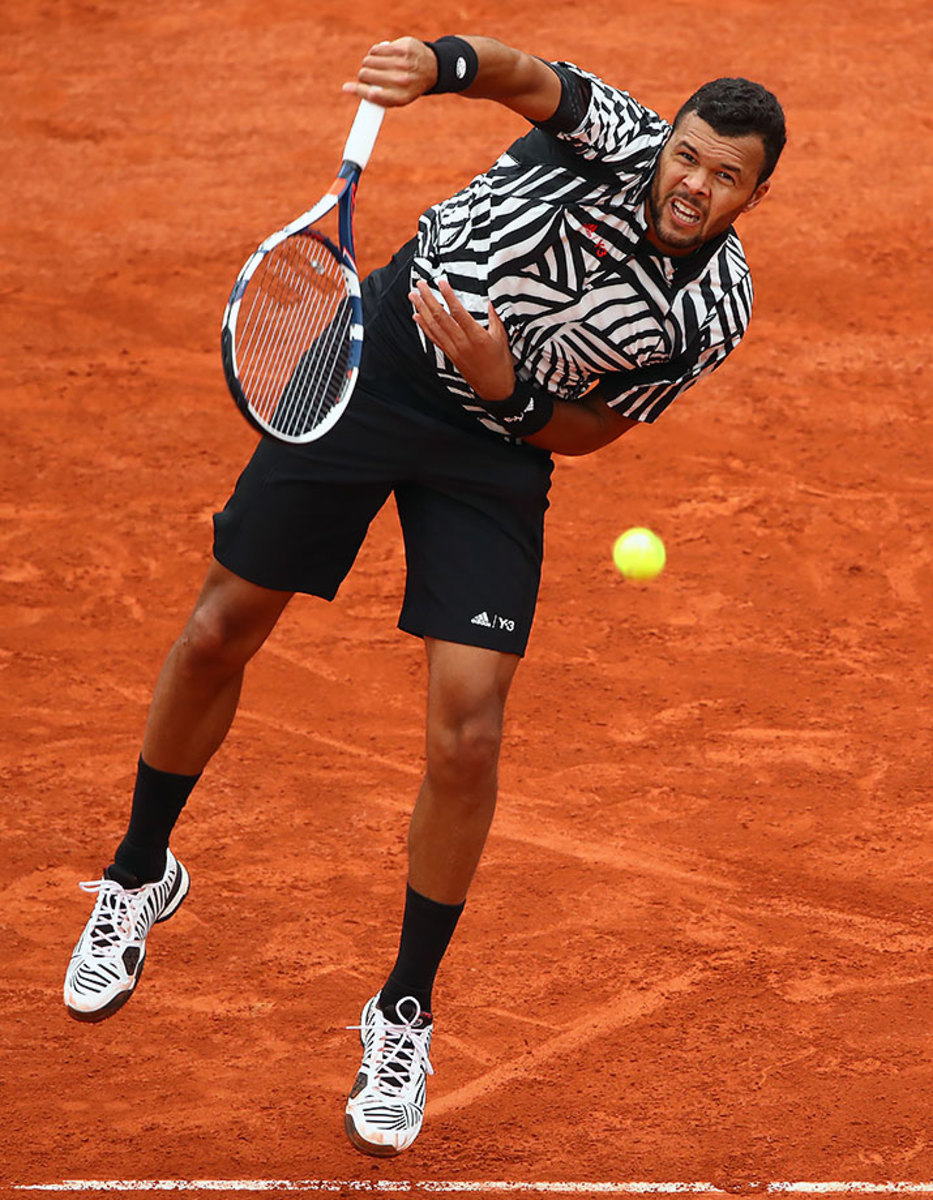
Jo-Wilfried Tsonga
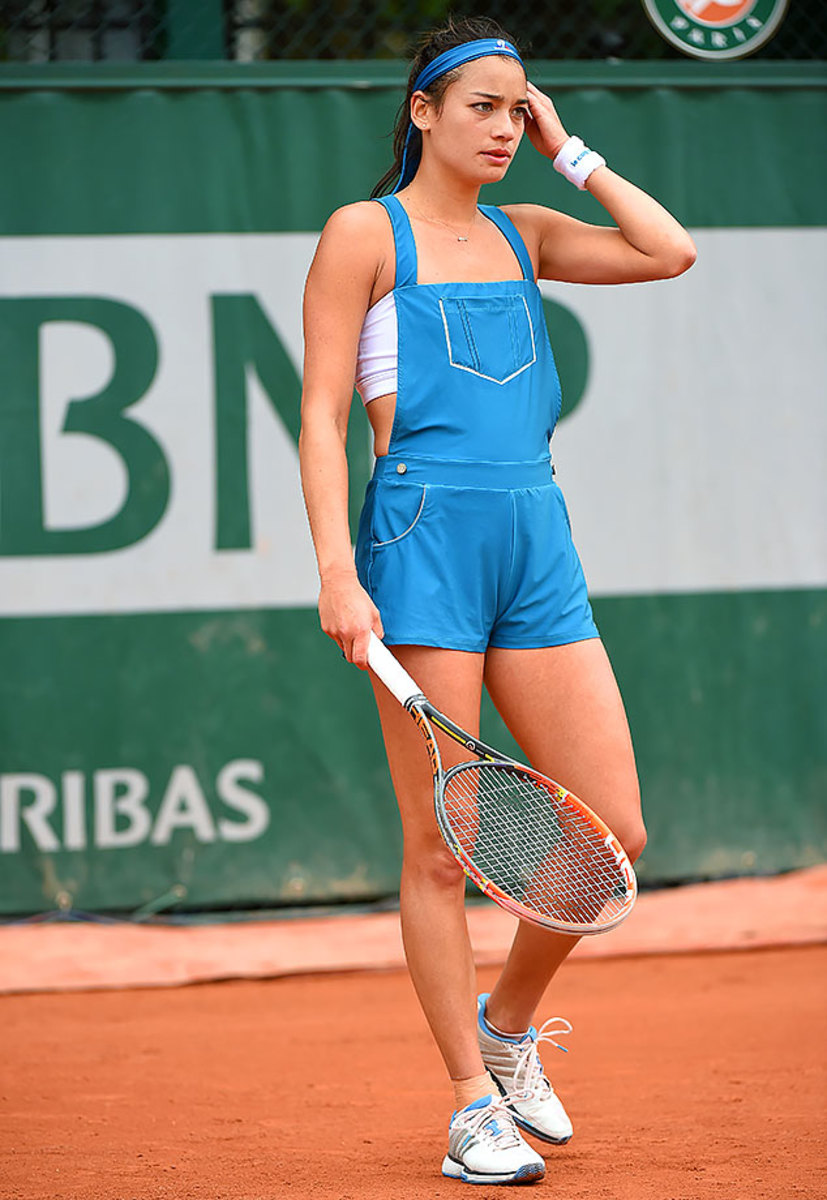
Alize Lim
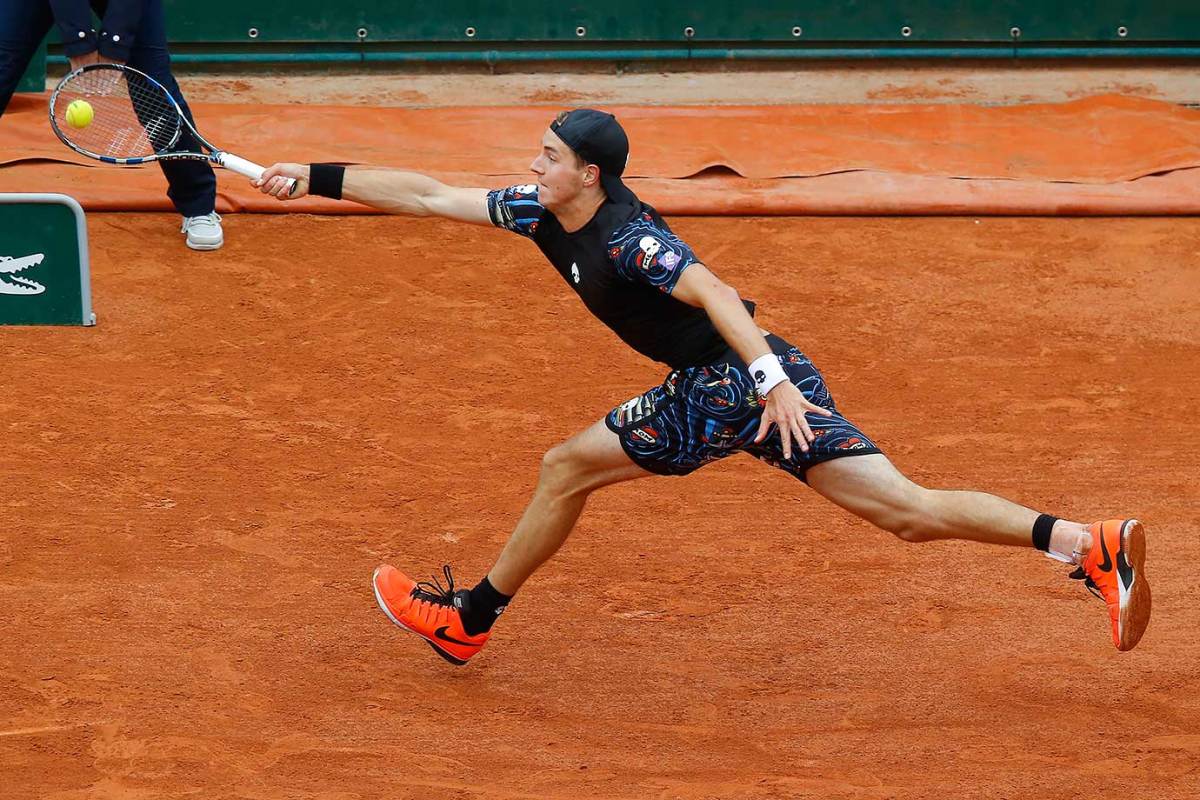
Jan-Lennard Struff
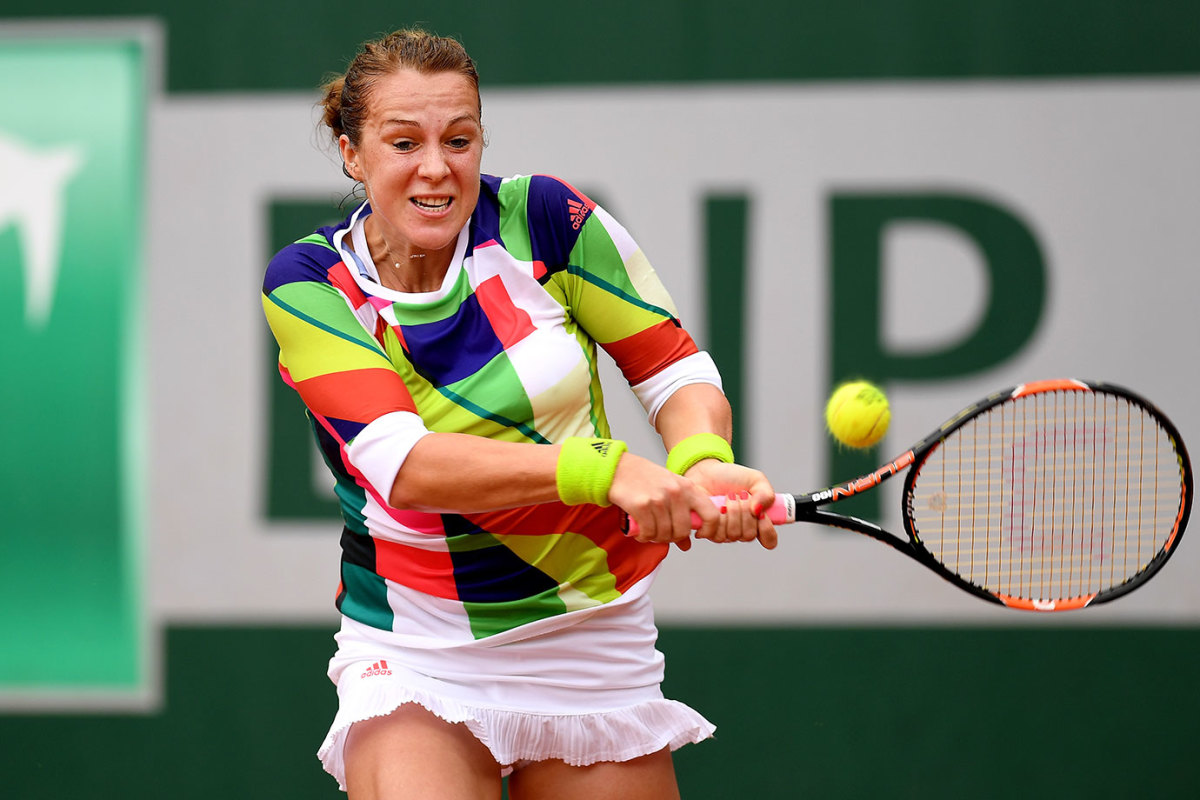
Anastasia Pavlyuchenkova
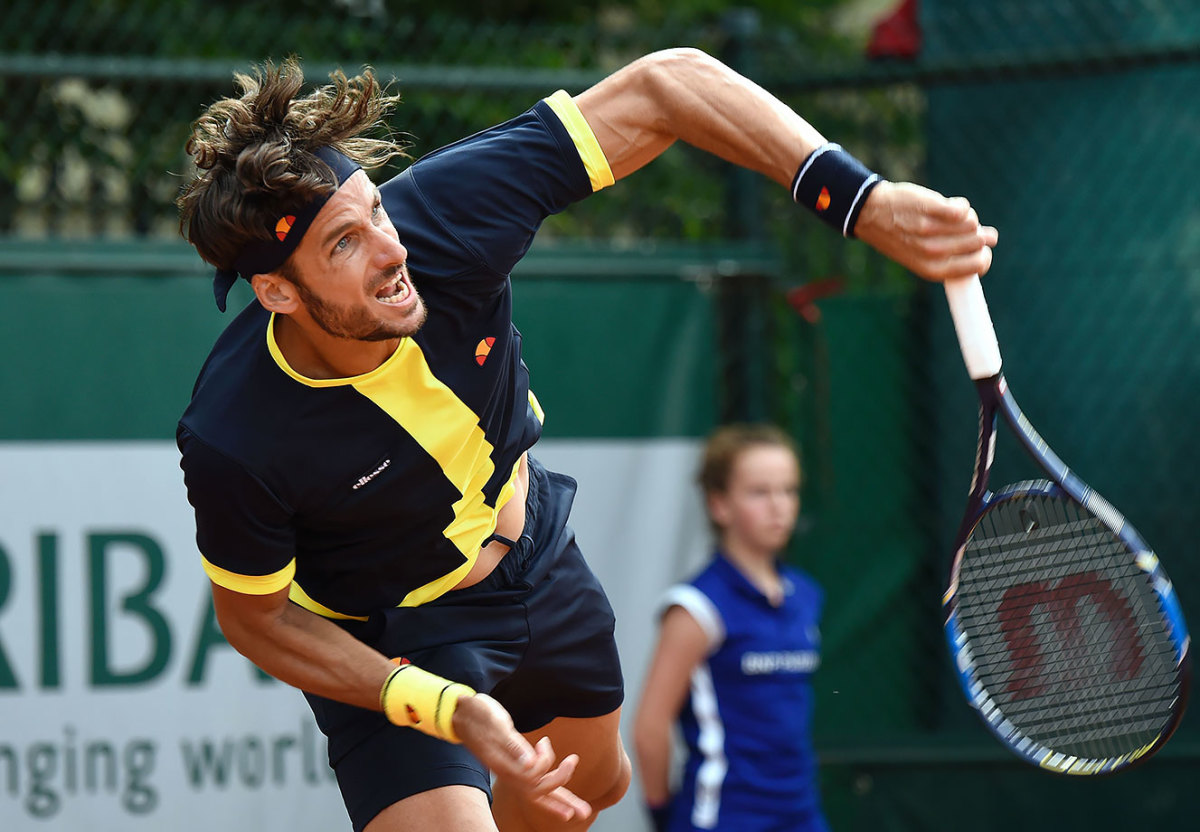
Feliciano Lopez
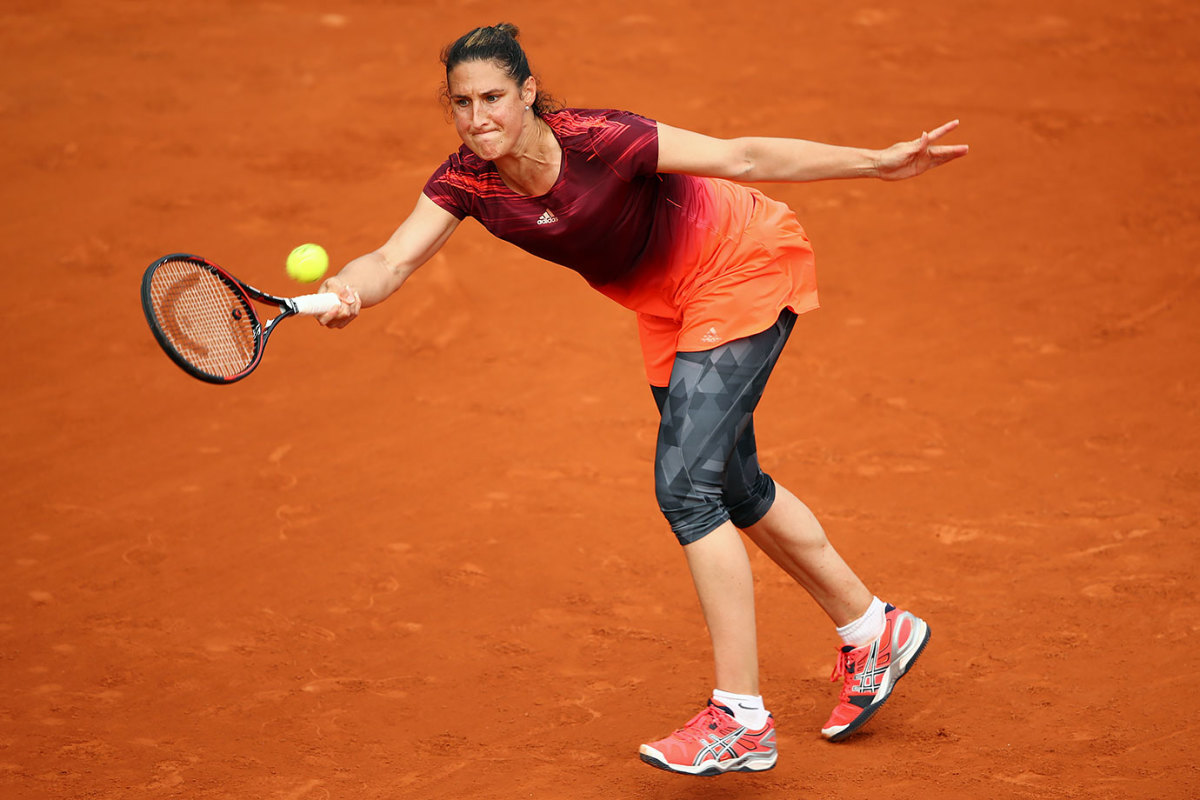
Virginie Razzaro
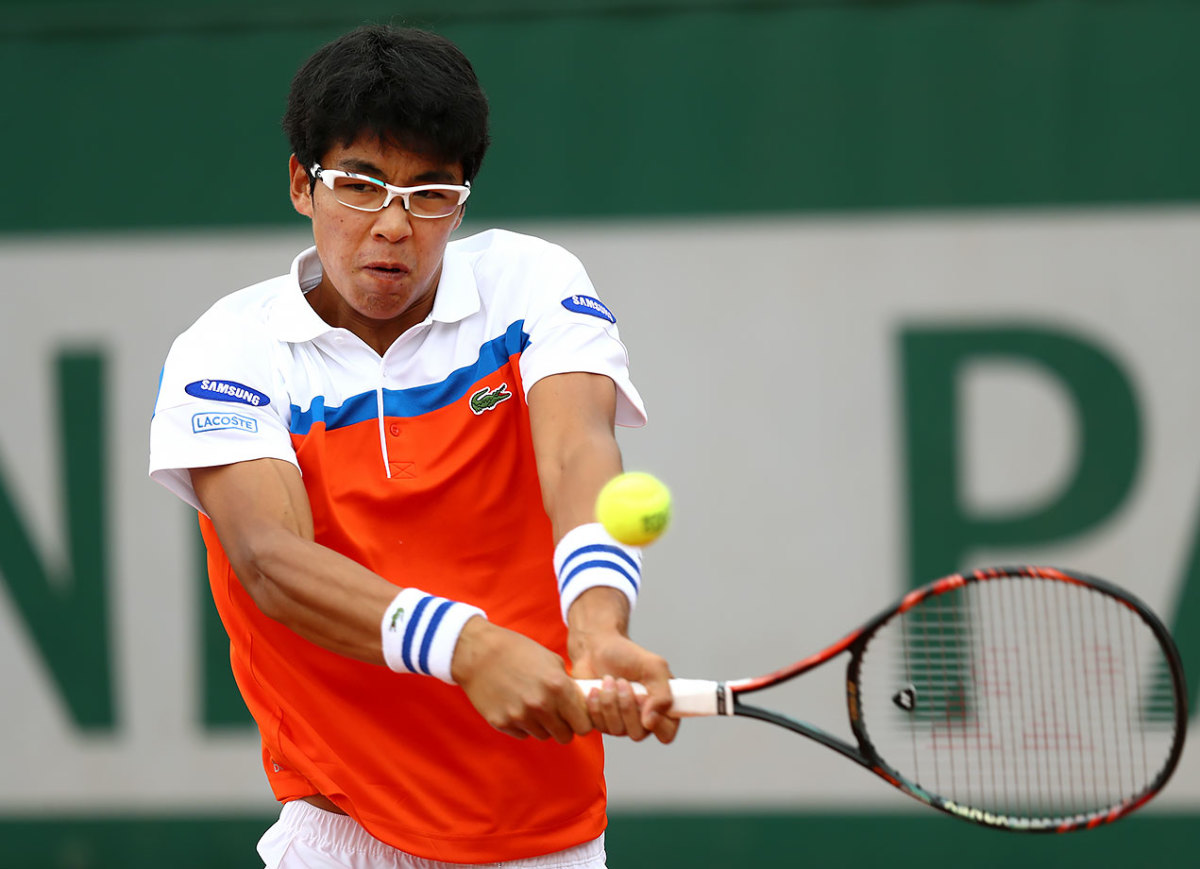
Hyeon Chung
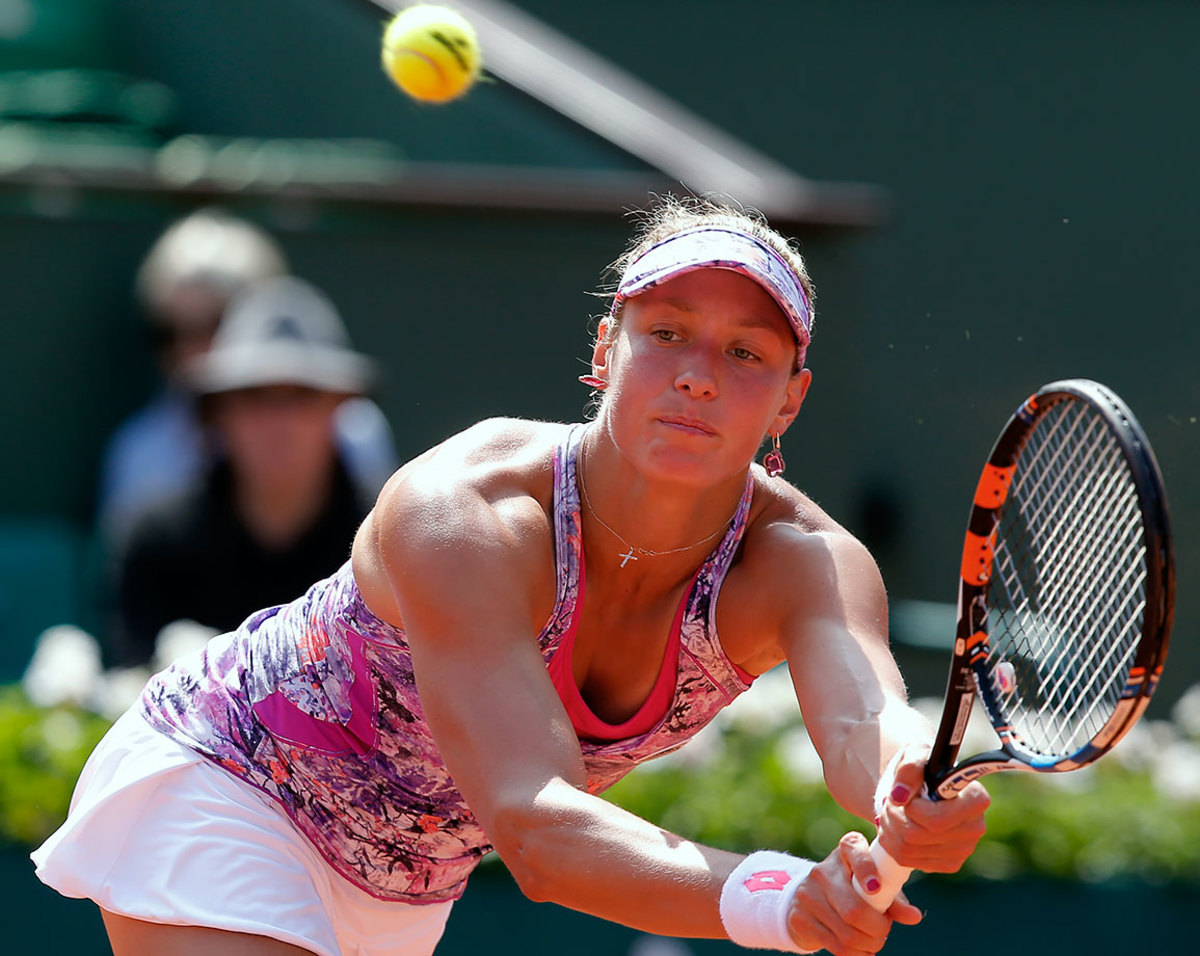
Yanina Wickmayer
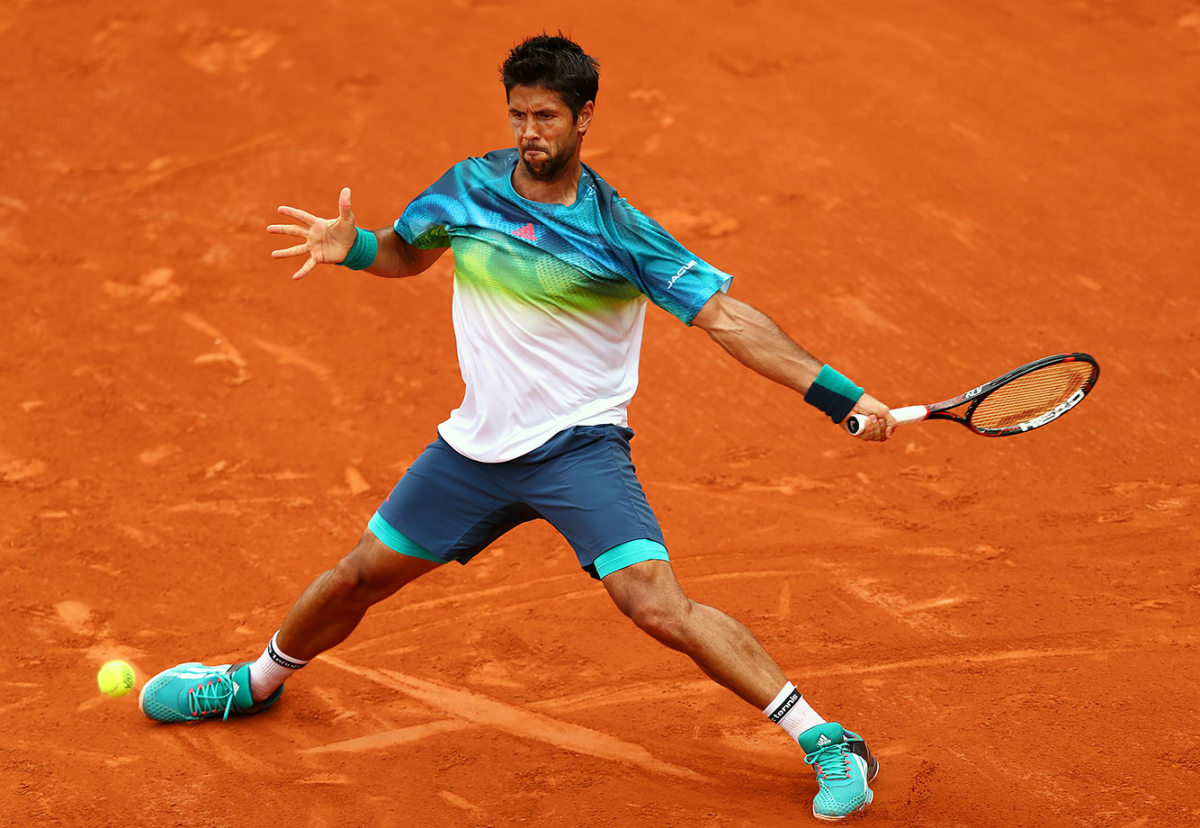
Fernando Verdasco
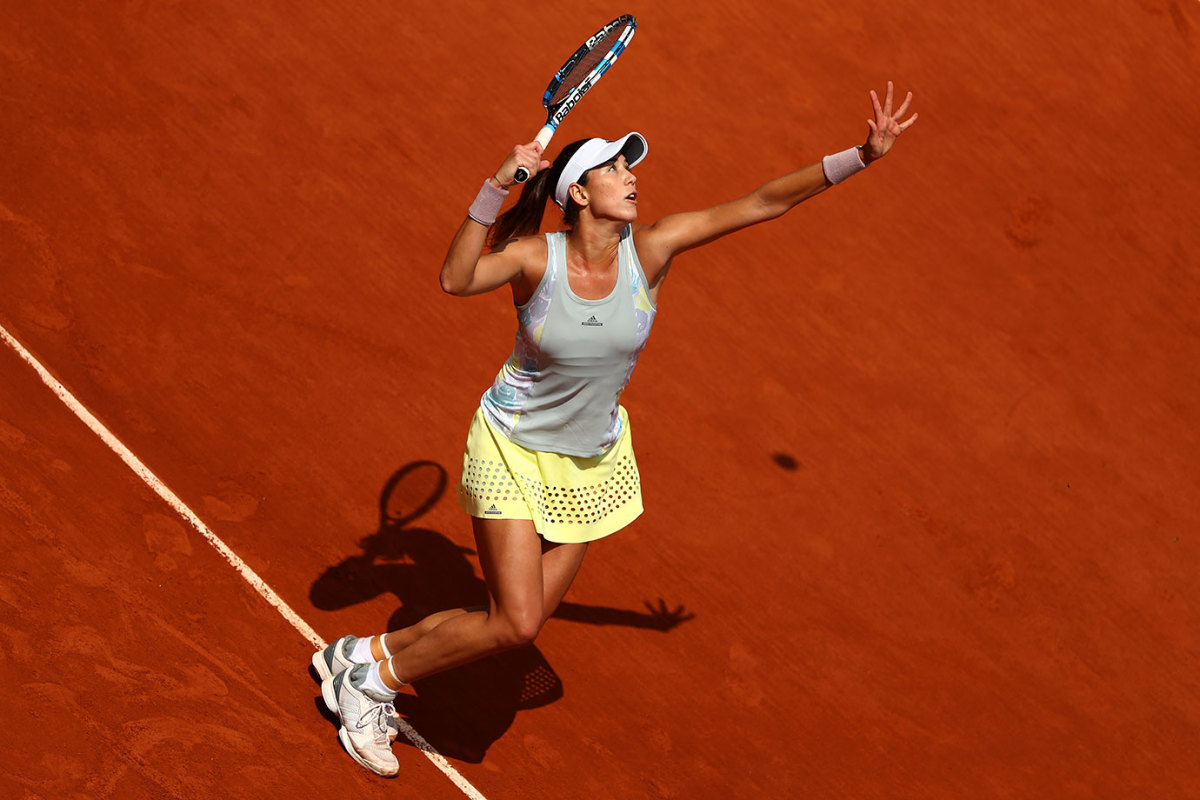
Garbine Muguruza
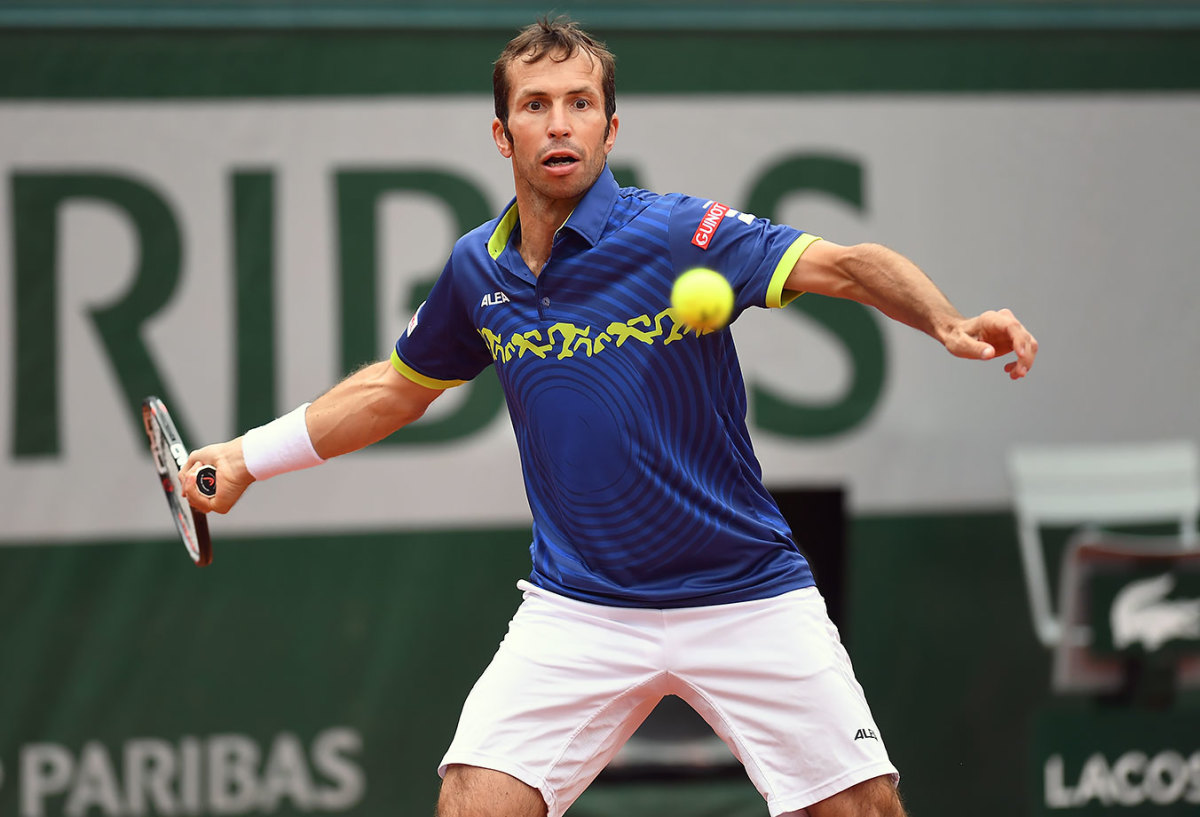
Radek Stepanek
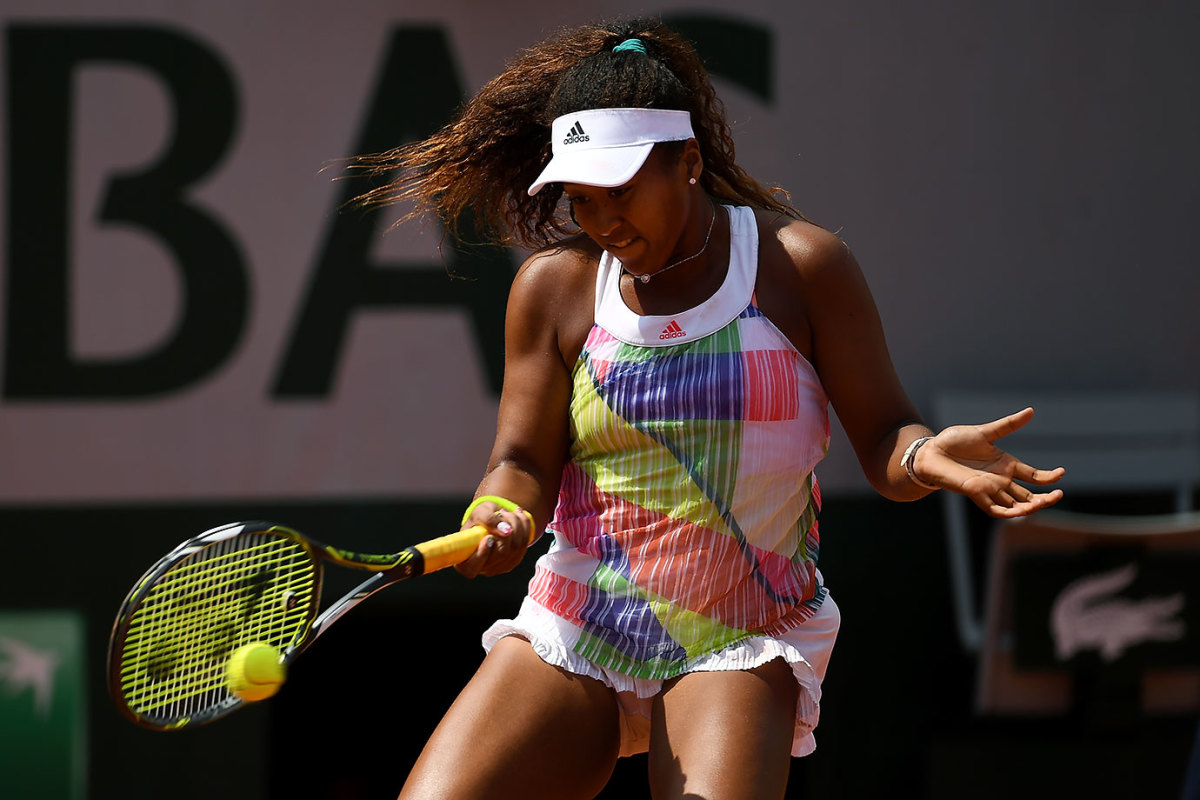
Naomi Osaka
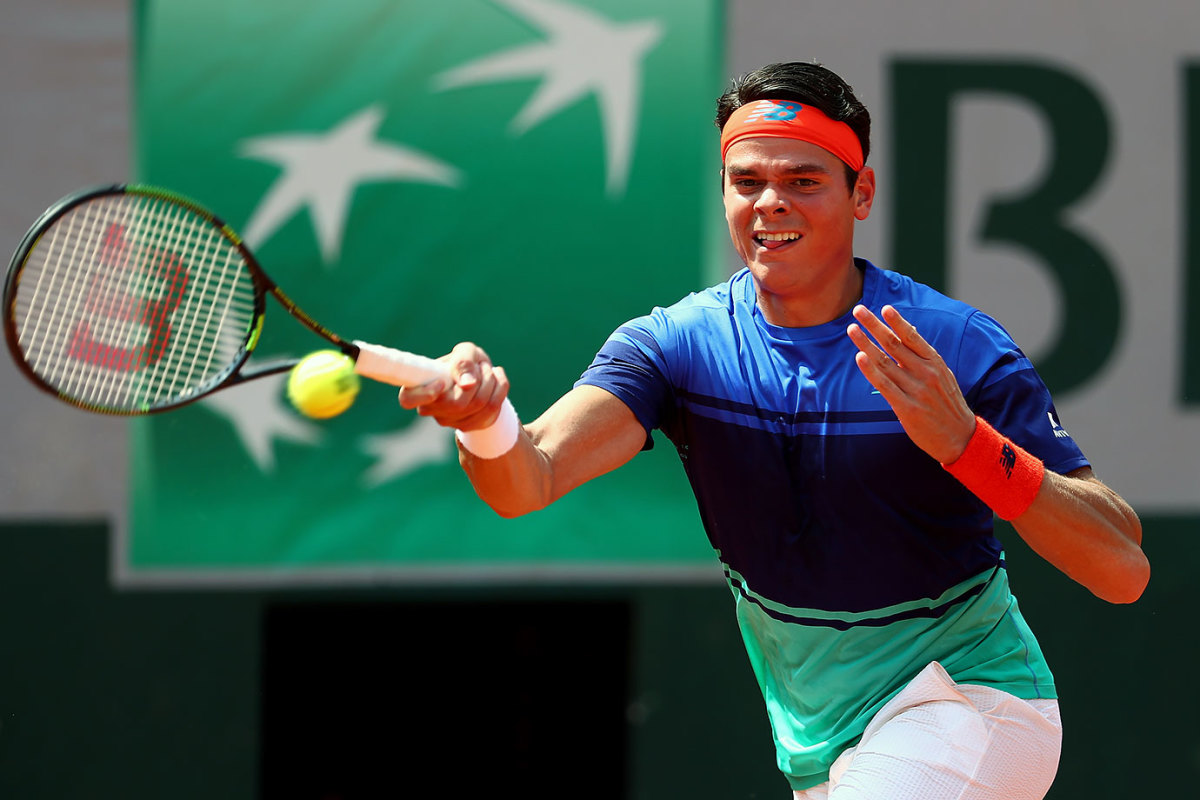
Milos Raonic
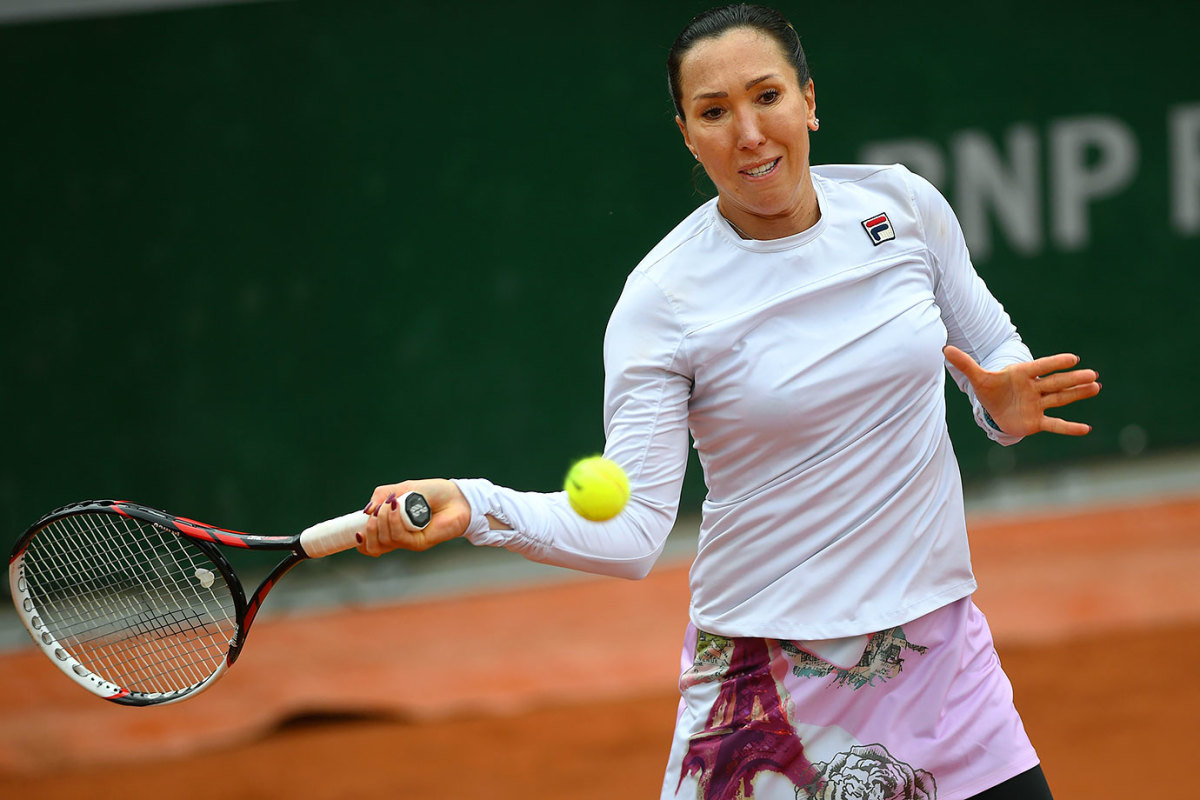
Jelena Jankovic
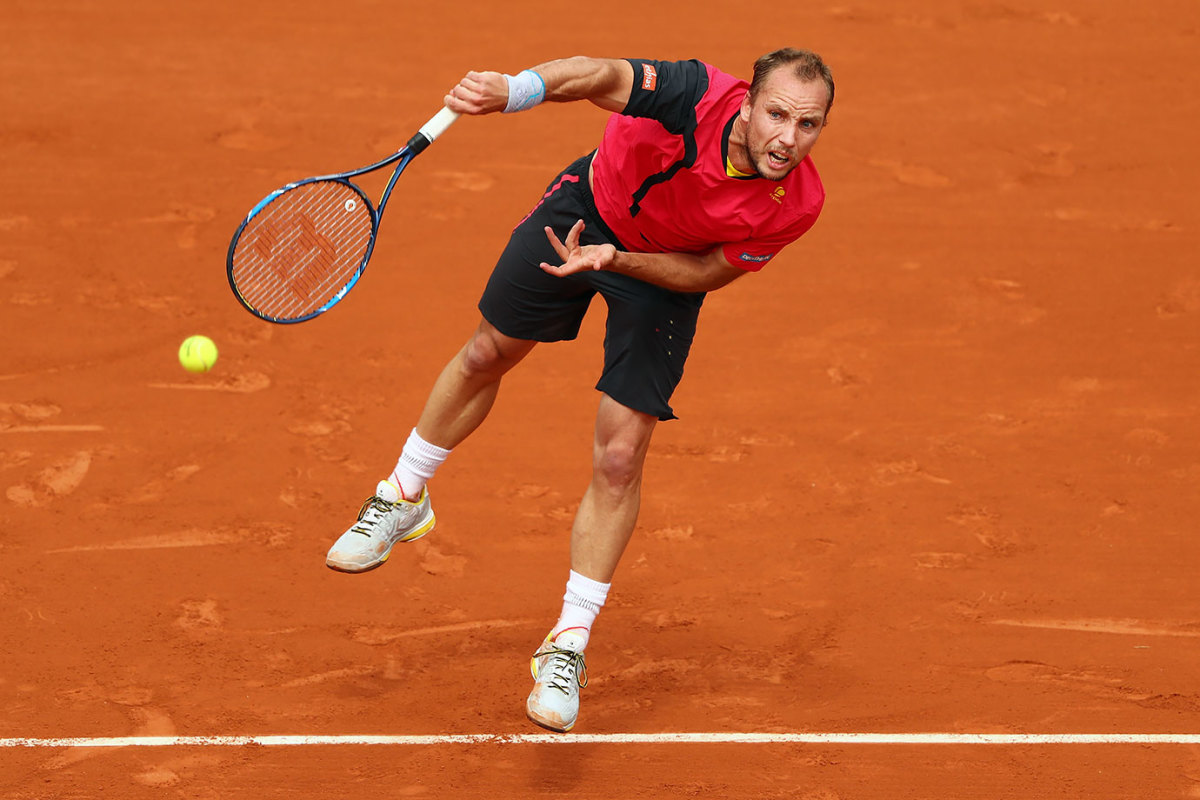
Steve Darcis
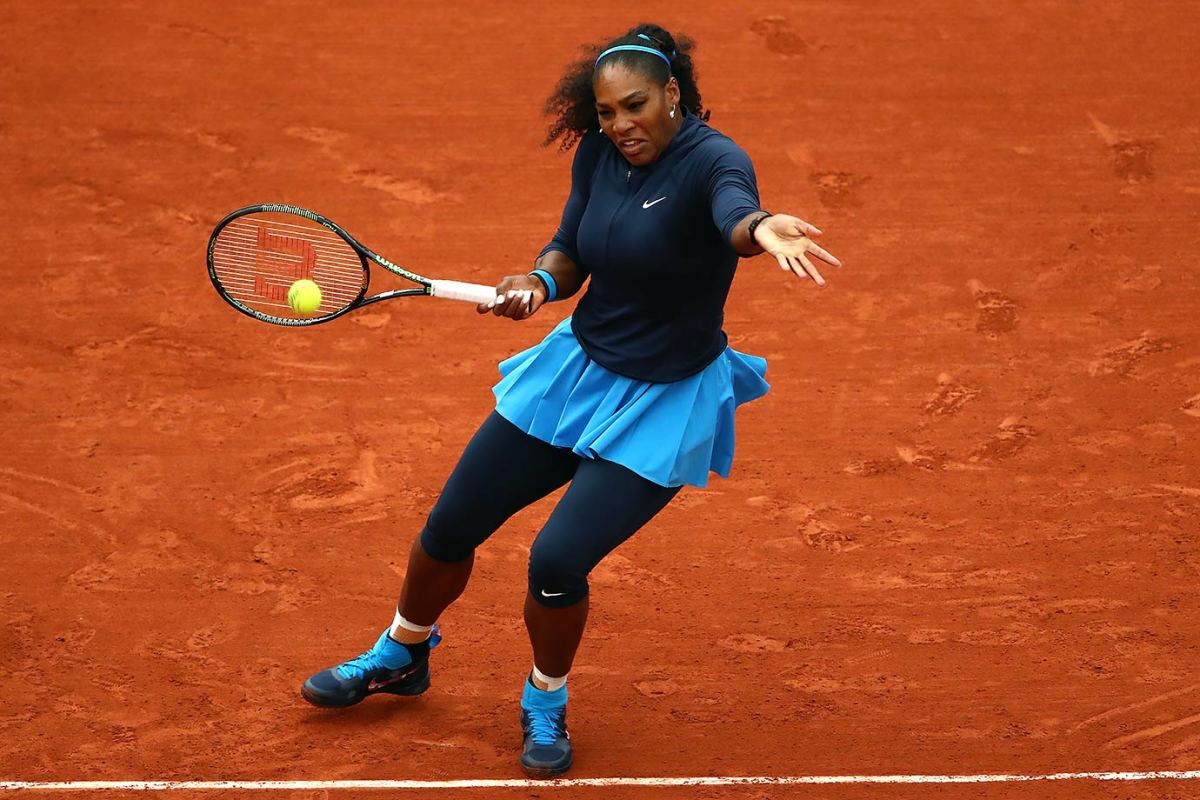
Serena Williams
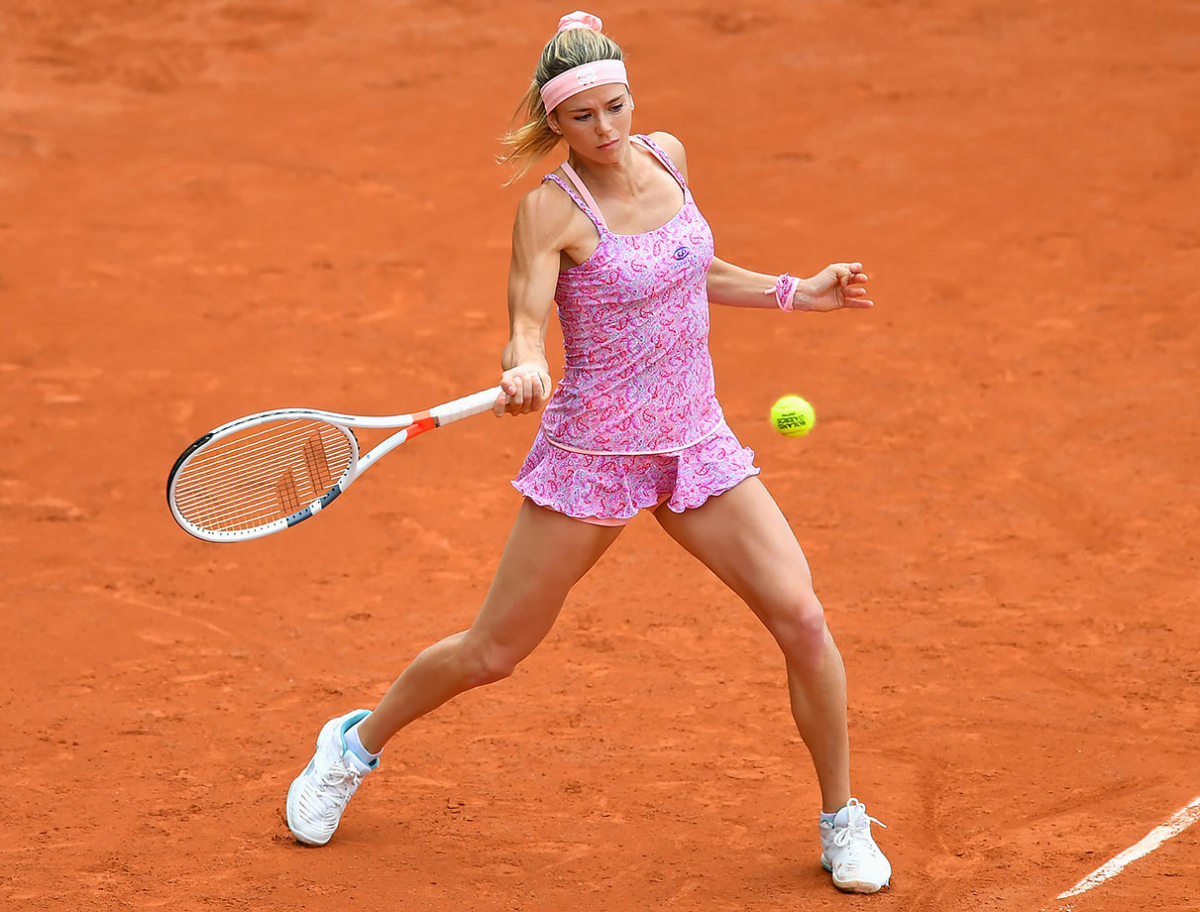
Camila Giorgi
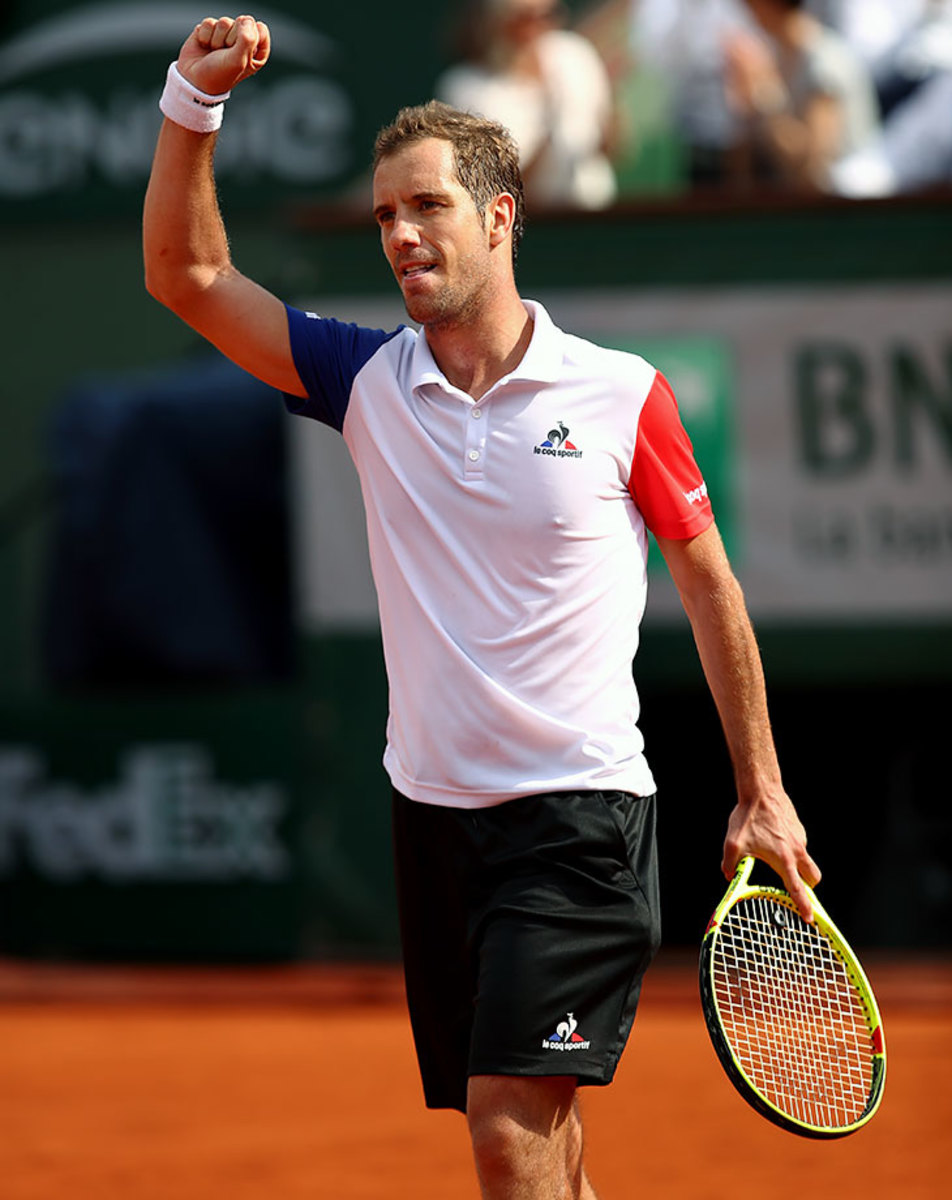
Richard Gasquet
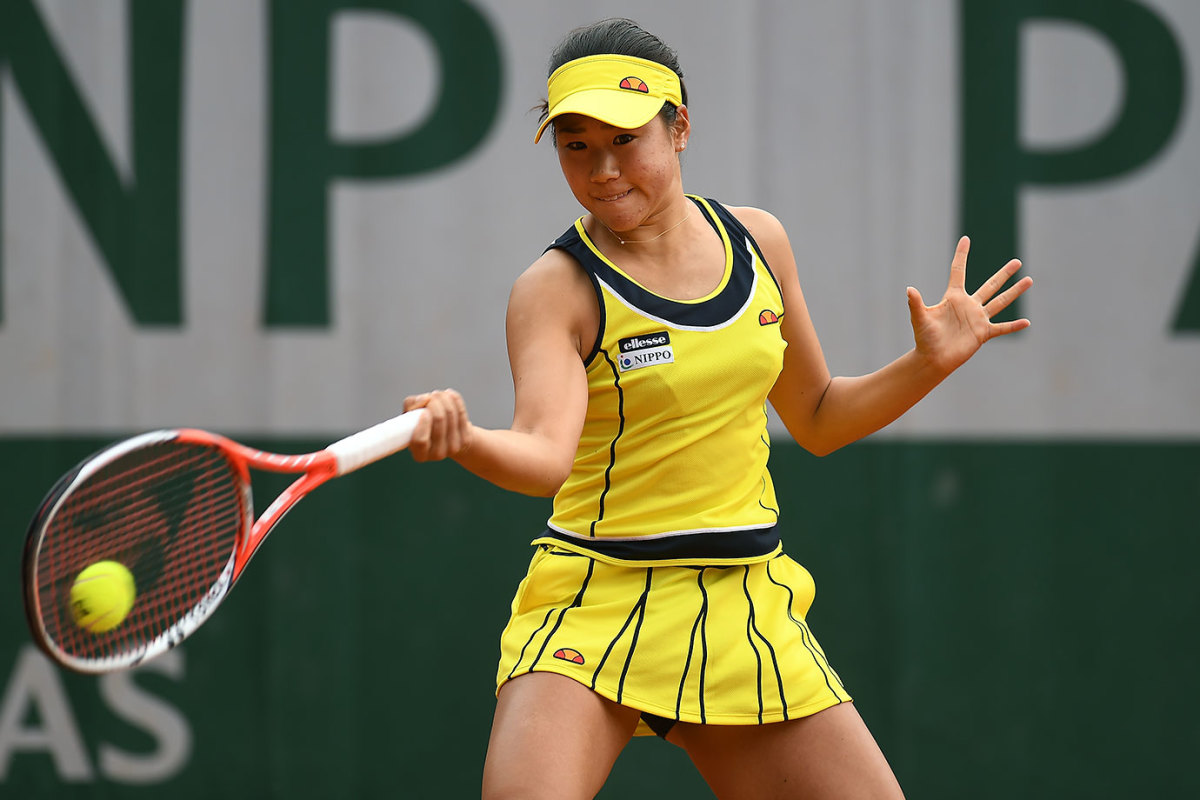
Nao Hibino
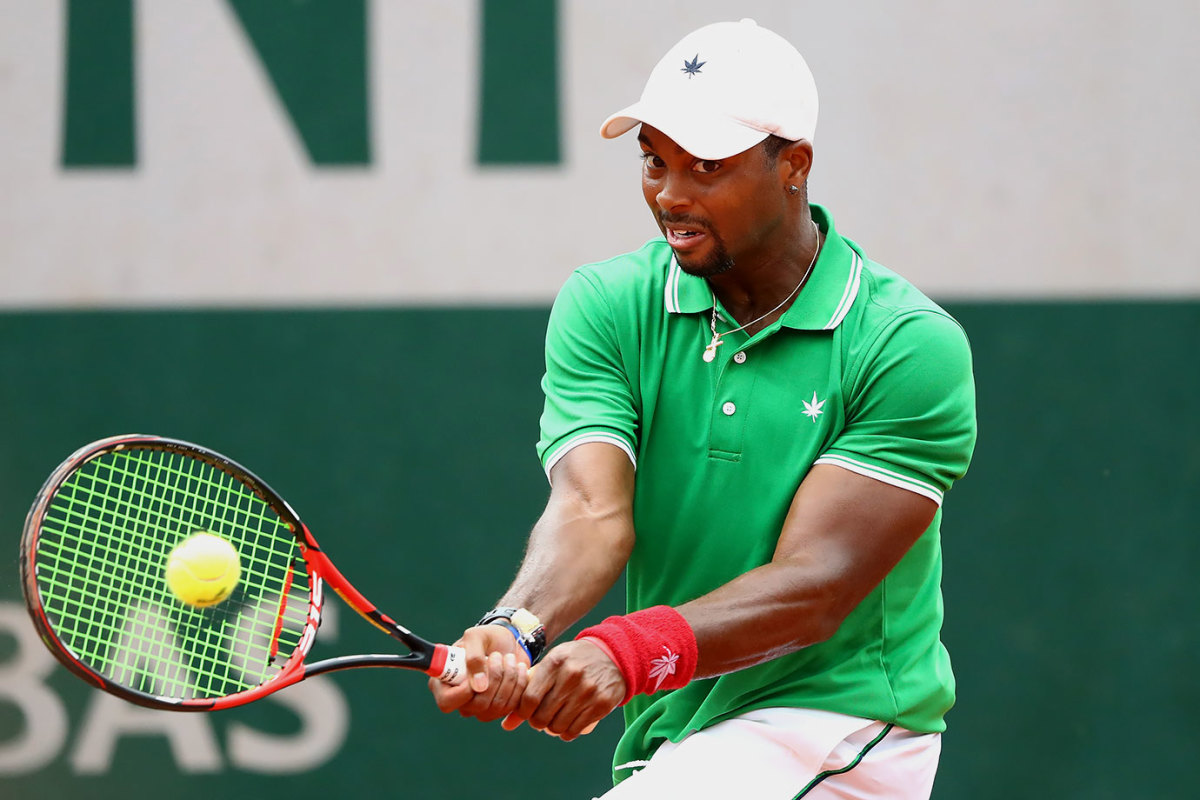
Donald Young
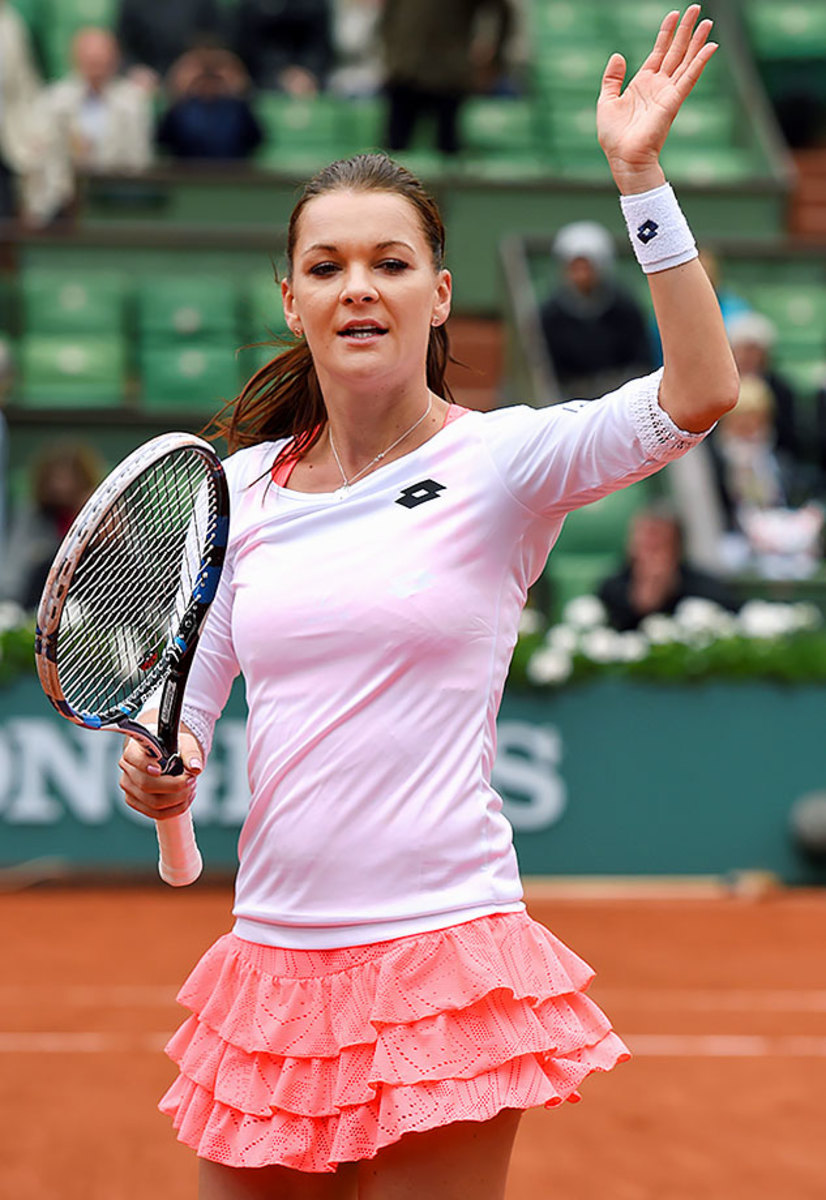
Agnieszka Radwanska
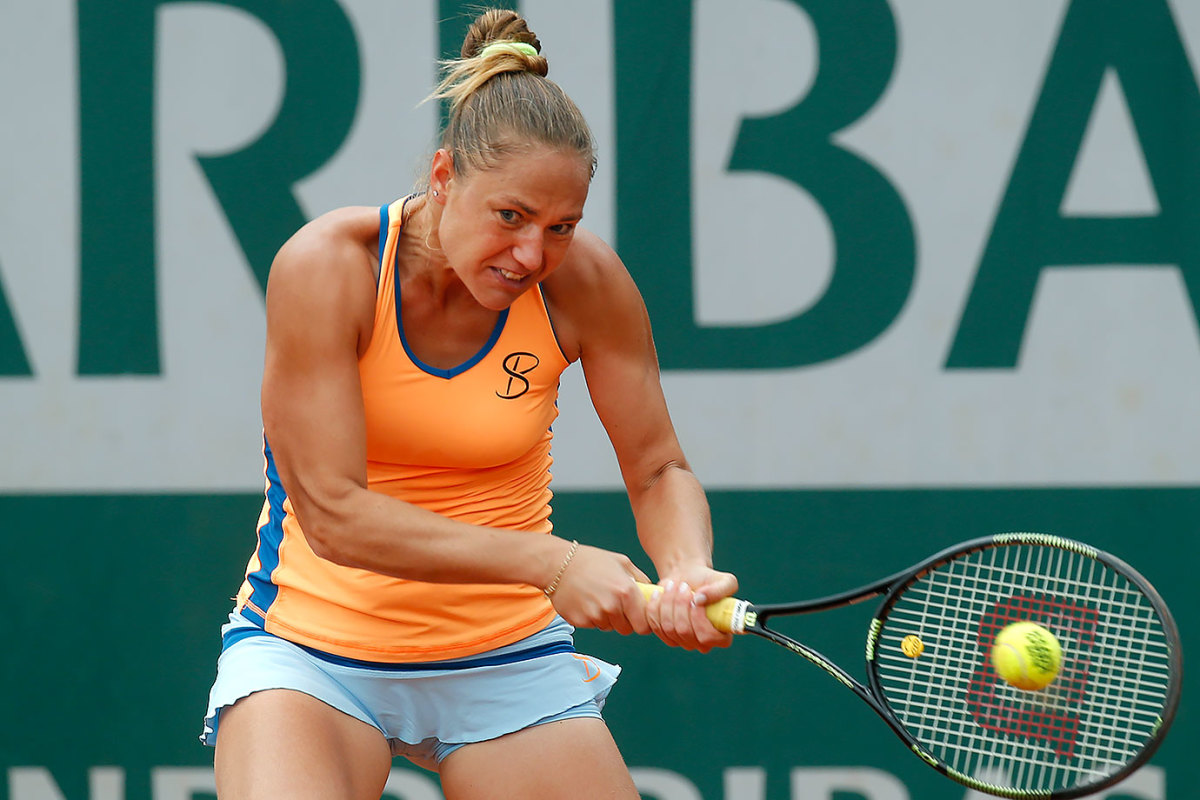
Kateryna Bondarenko
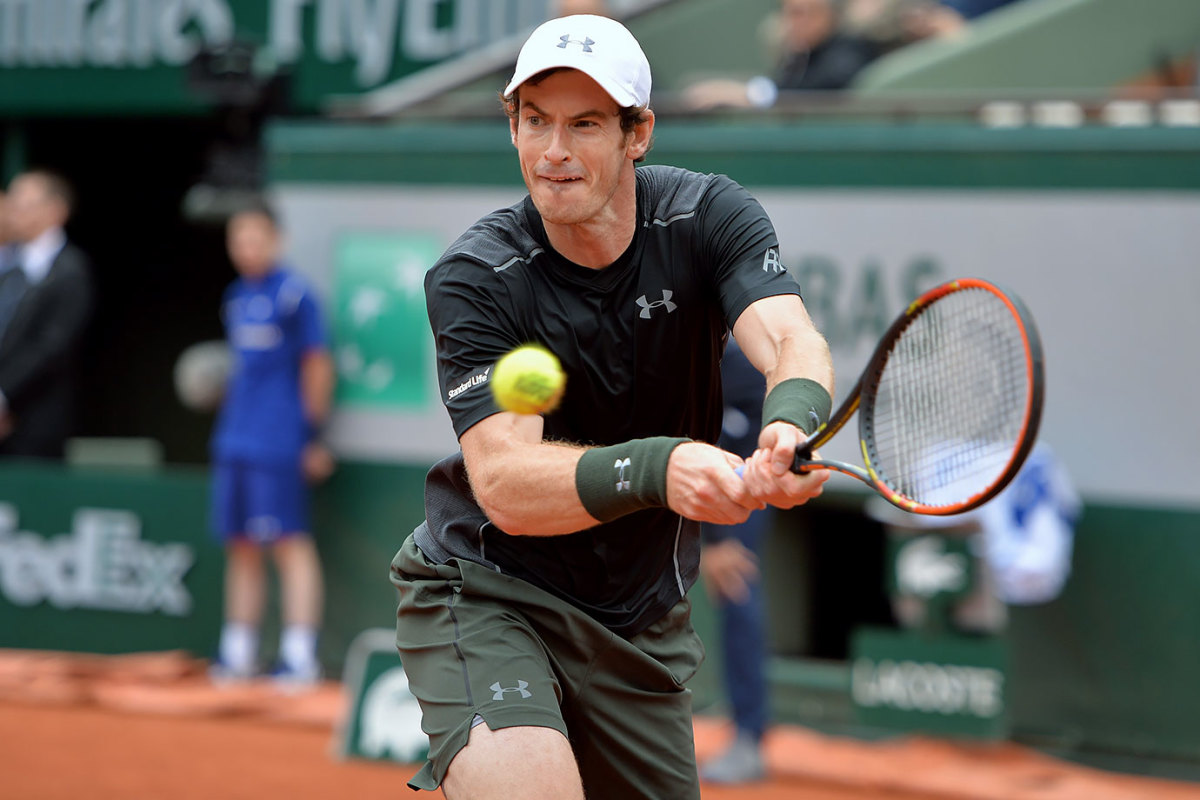
Andy Murray
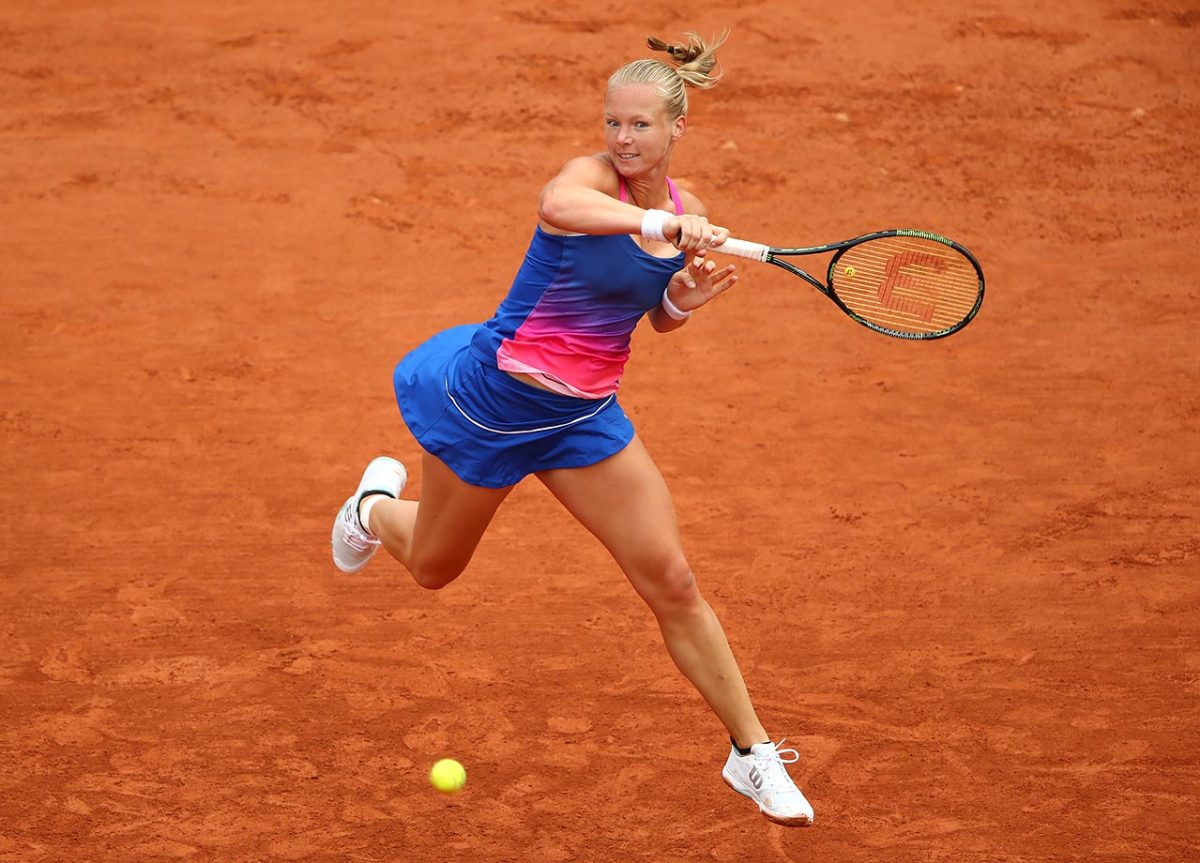
Kiki Bertens
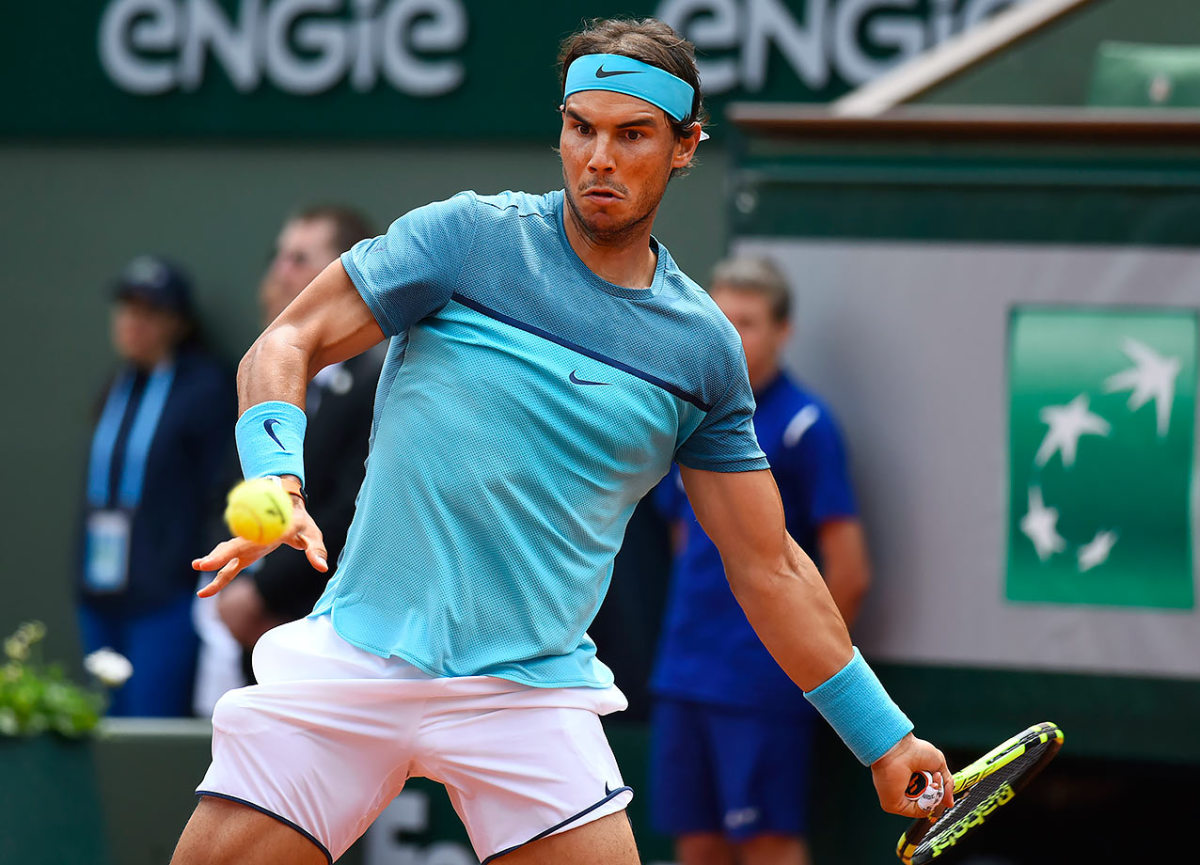
Rafael Nadal
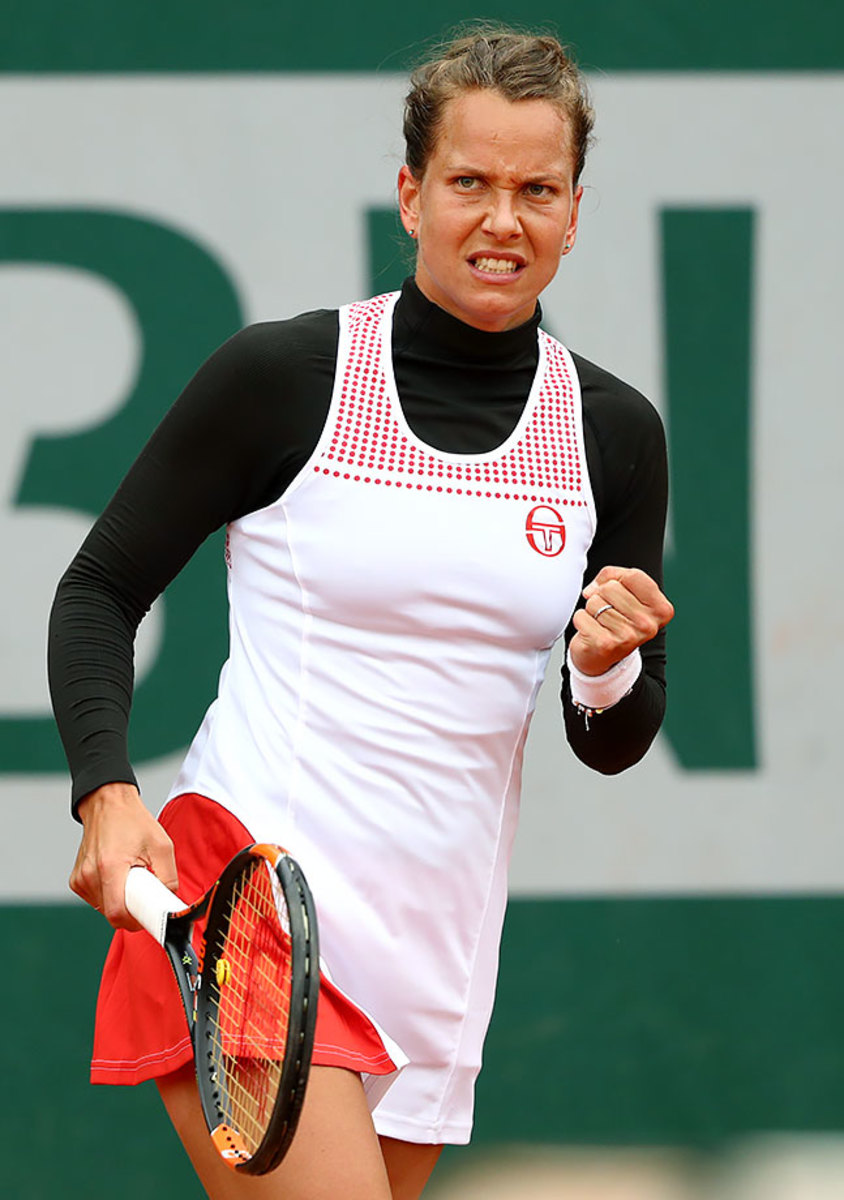
Barbora Strycova
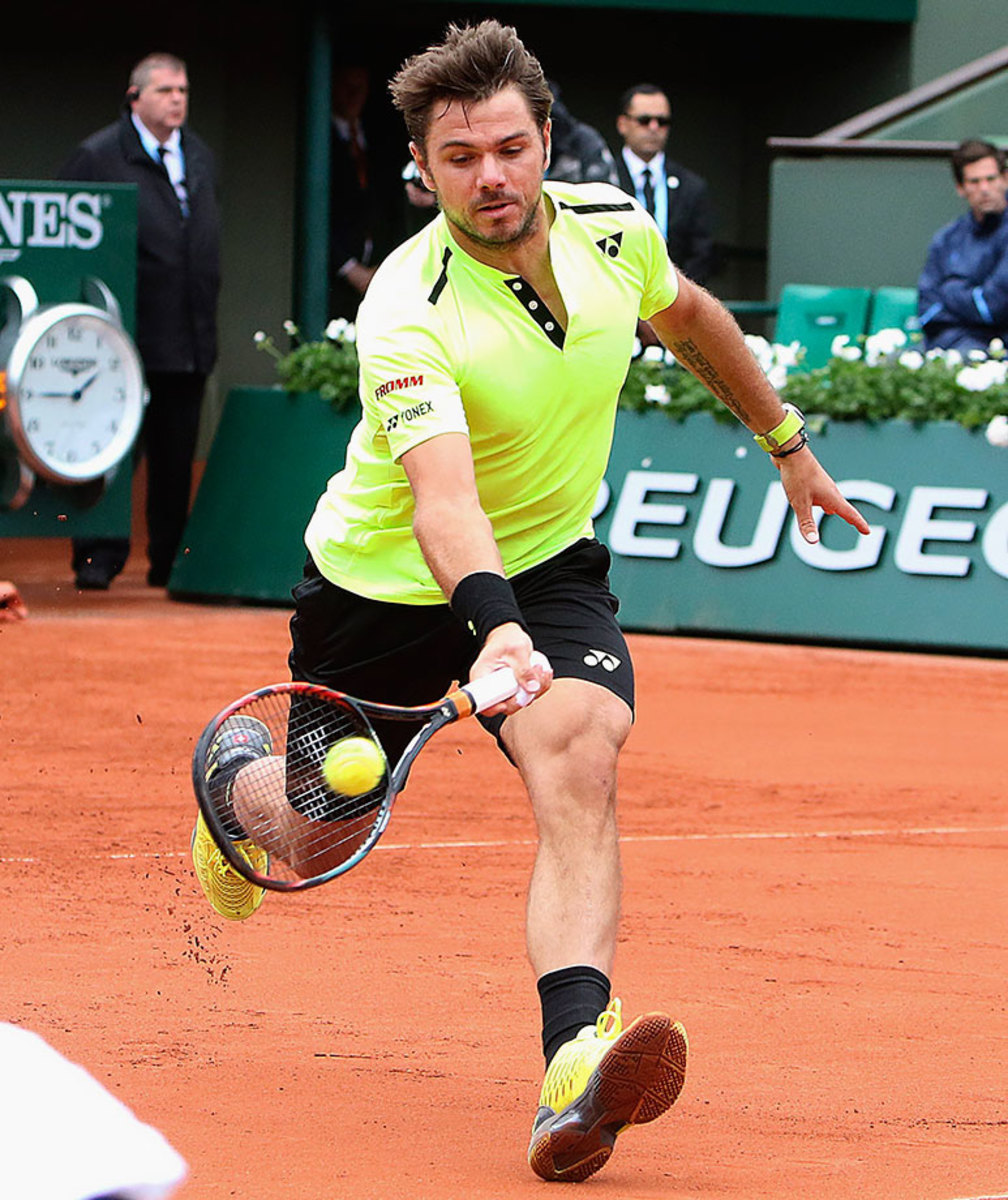
Stan Wawrinka
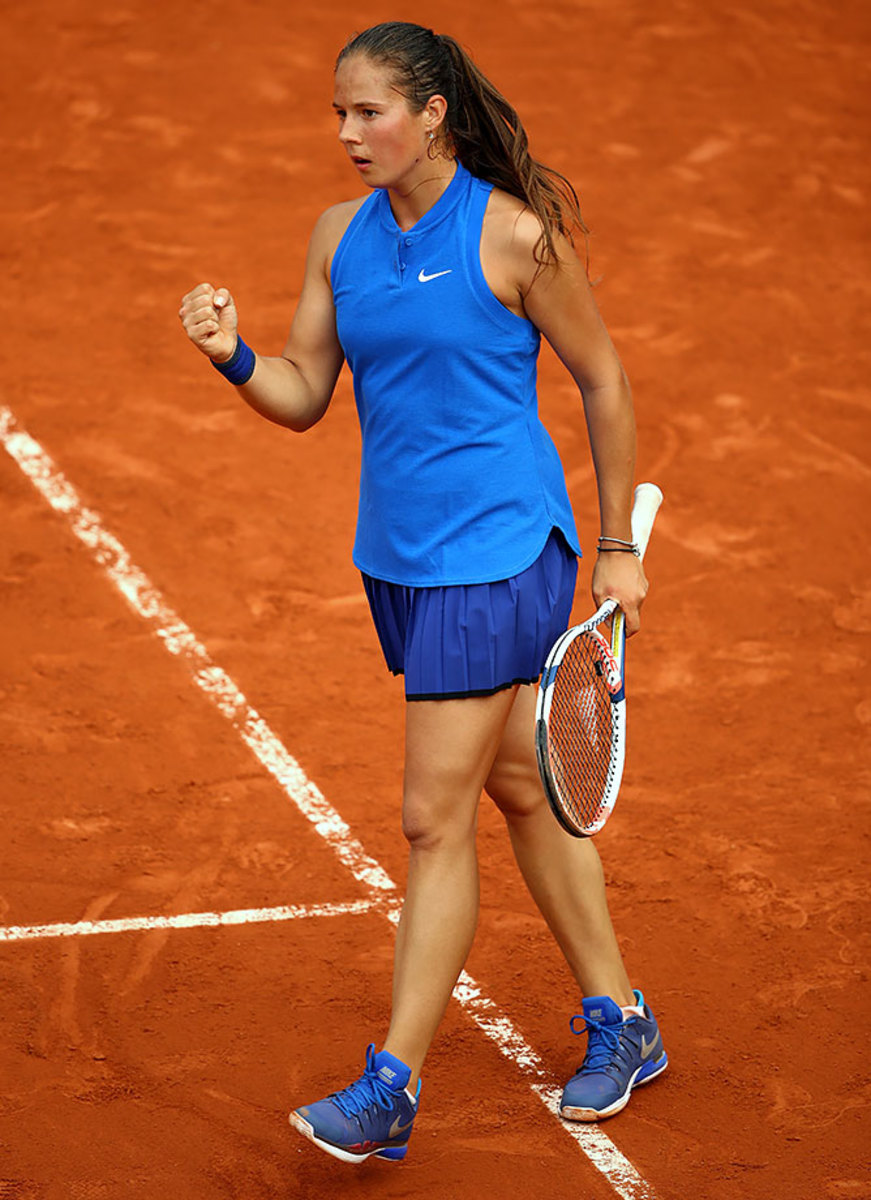
Daria Kasatkina
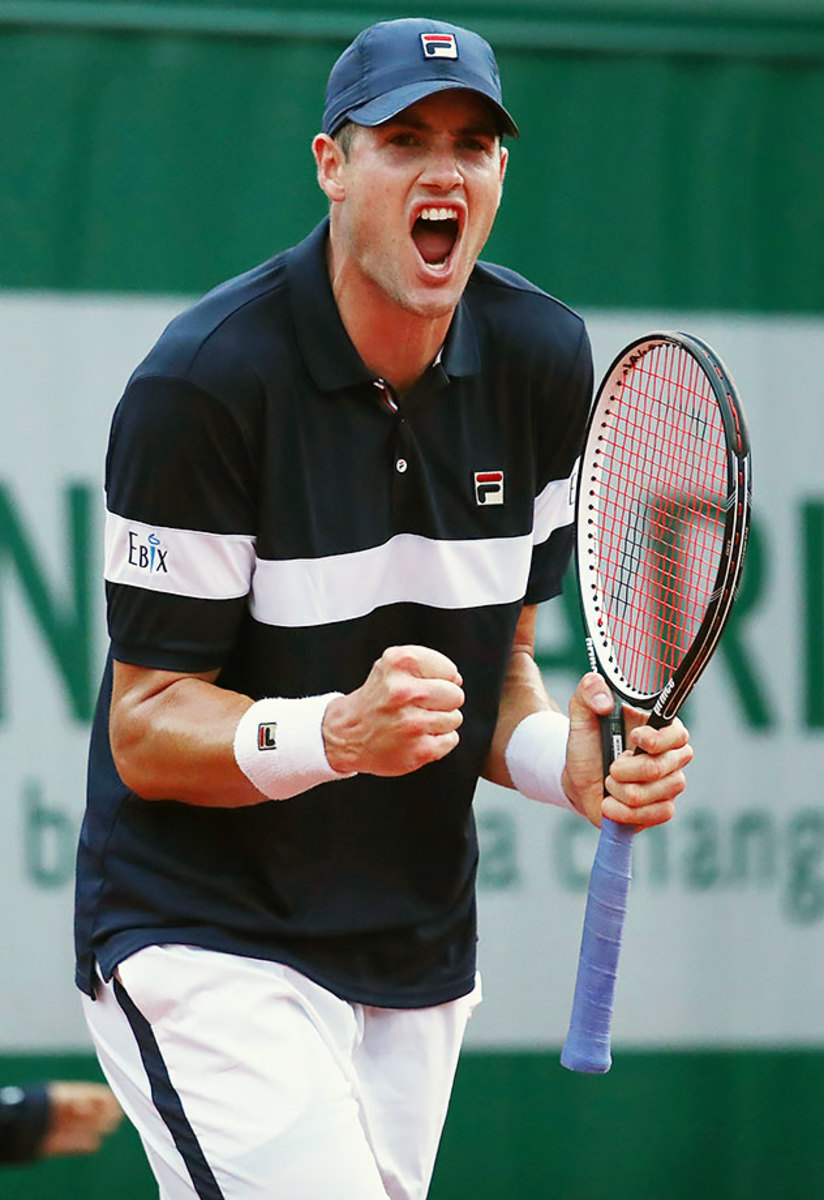
John Isner
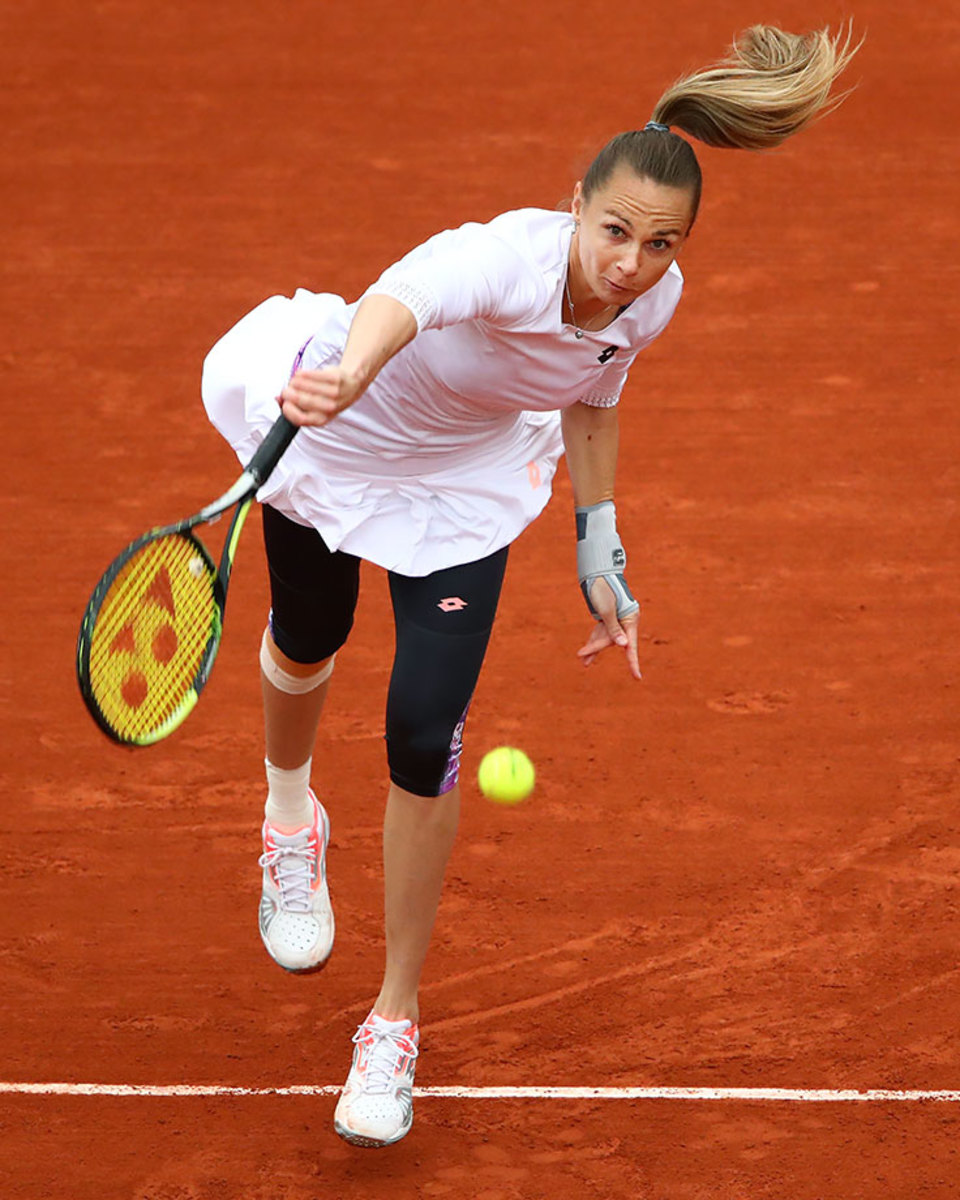
Magdalena Rybarikova
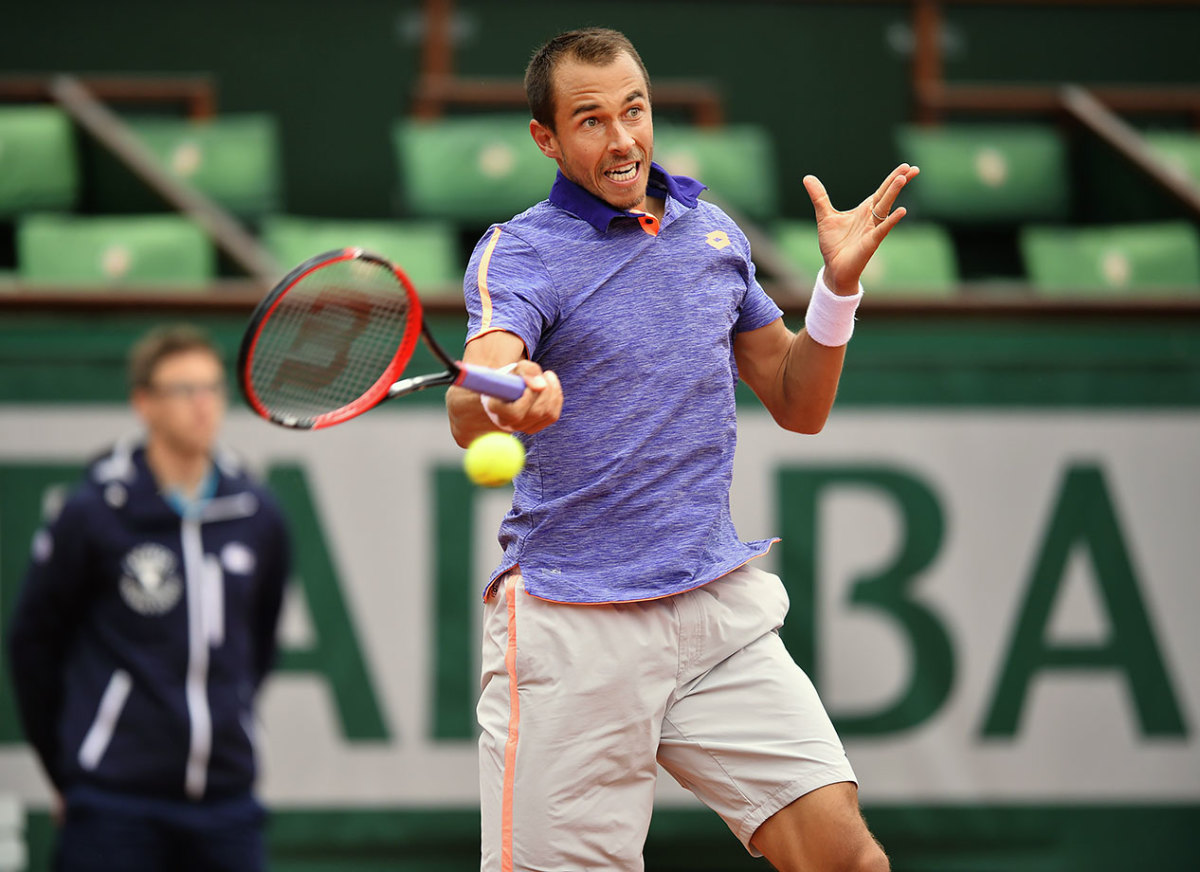
Luka Rosol
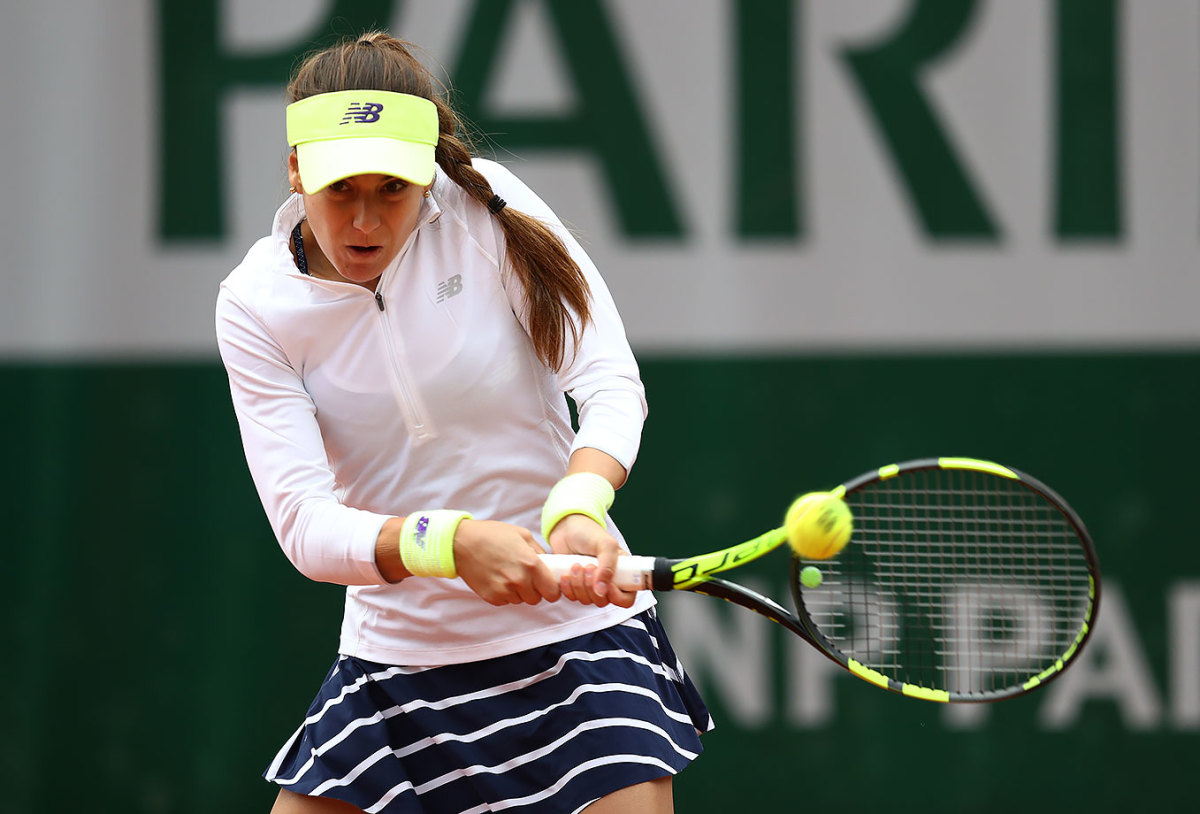
Sorana Cirestea
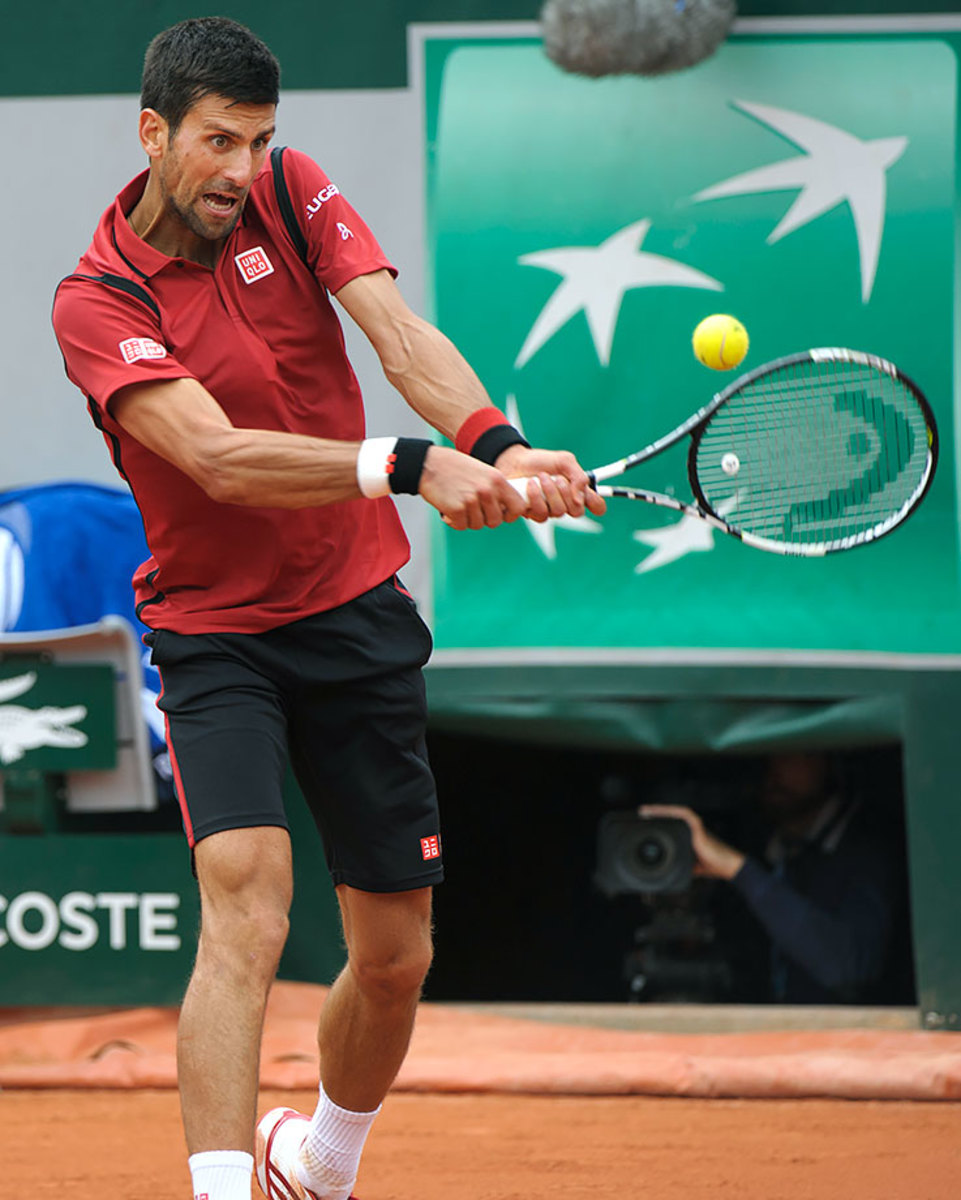
Novak Djokovic
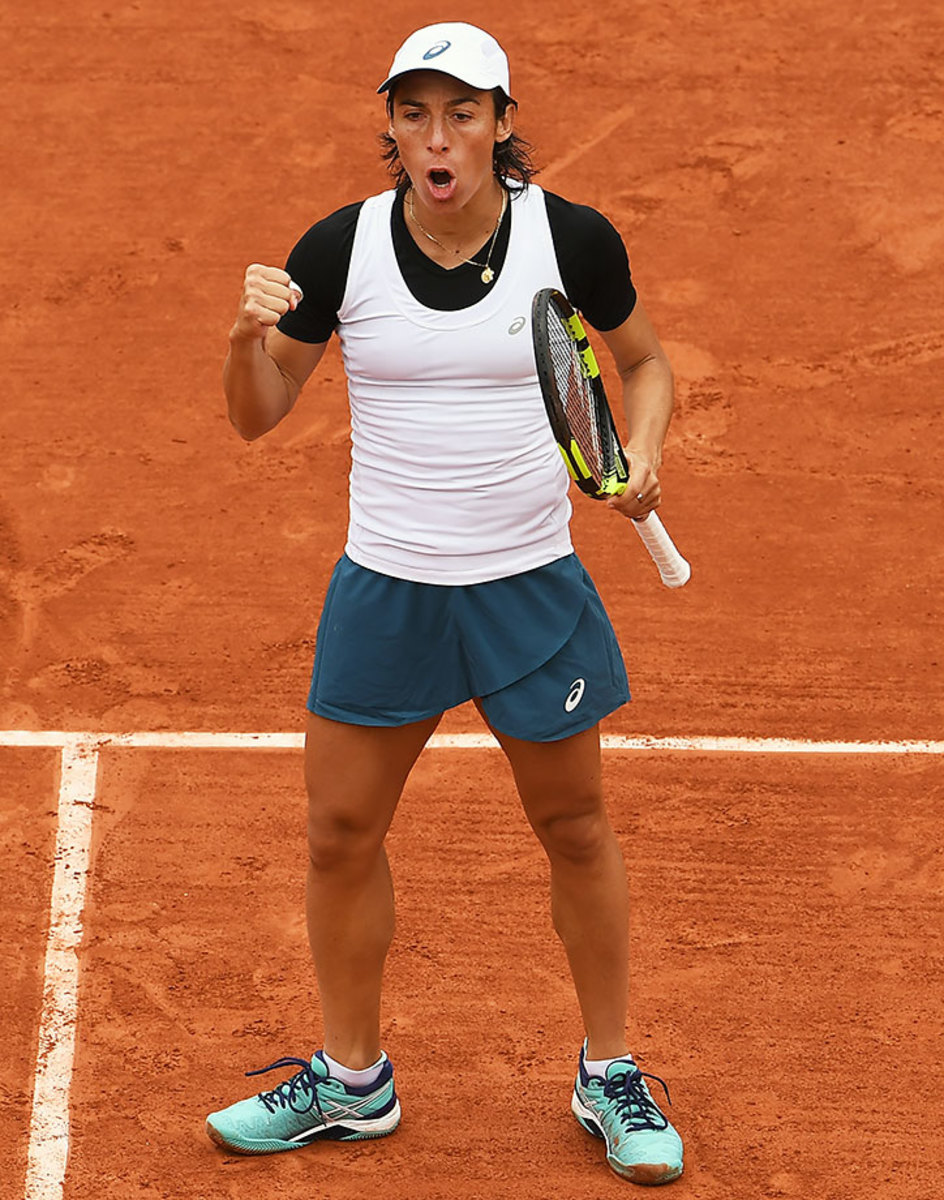
Francesca Schiavone
• Not to be outdone, on the following day, Sloane Stephens—come to think of it, whose career isn't dissimilar to Bouchard’s, including common time with Nick Saviano—jumped to a 2–0 lead over Tsvetana Pironkova. Stephens then lost seven straight games and 18 straight points.
• You know how players say, “I need to take advantage of my opportunities.” In his six career matches against Andy Murray, John Isner is 1-for-32 on break points converted. He was 0-for-5 in his fourth round loss here.

Beyond the Baseline: SI's tennis podcast
Sports Illustrated Podcast Network



• Trivia: the father of which American player is running for Congress in the fall? Your answer—and I approve this message.
• Me? I’m not feeling the zebra look. As David Spade might put it: “Hey, adidas. Um, 1992 called. There’s a bouncer at a strip club who wants his Zubaz back.” A few of you asked why Garbine Muguruza—an adidas player—was able to avoid this fashion blight. The answer: she (and Caroline Wozniacki, who wasn’t here) has that Stella McCartney carve-out. The pattern, we’re told is “dazzle camouflage” initially designed by the military so it would be hard to estimate distances.
• We don’t discuss fashion much, but if you really want to see a stylish outfit, check out the Le Coq Sportif mock overalls that Alize Lim wore on court.
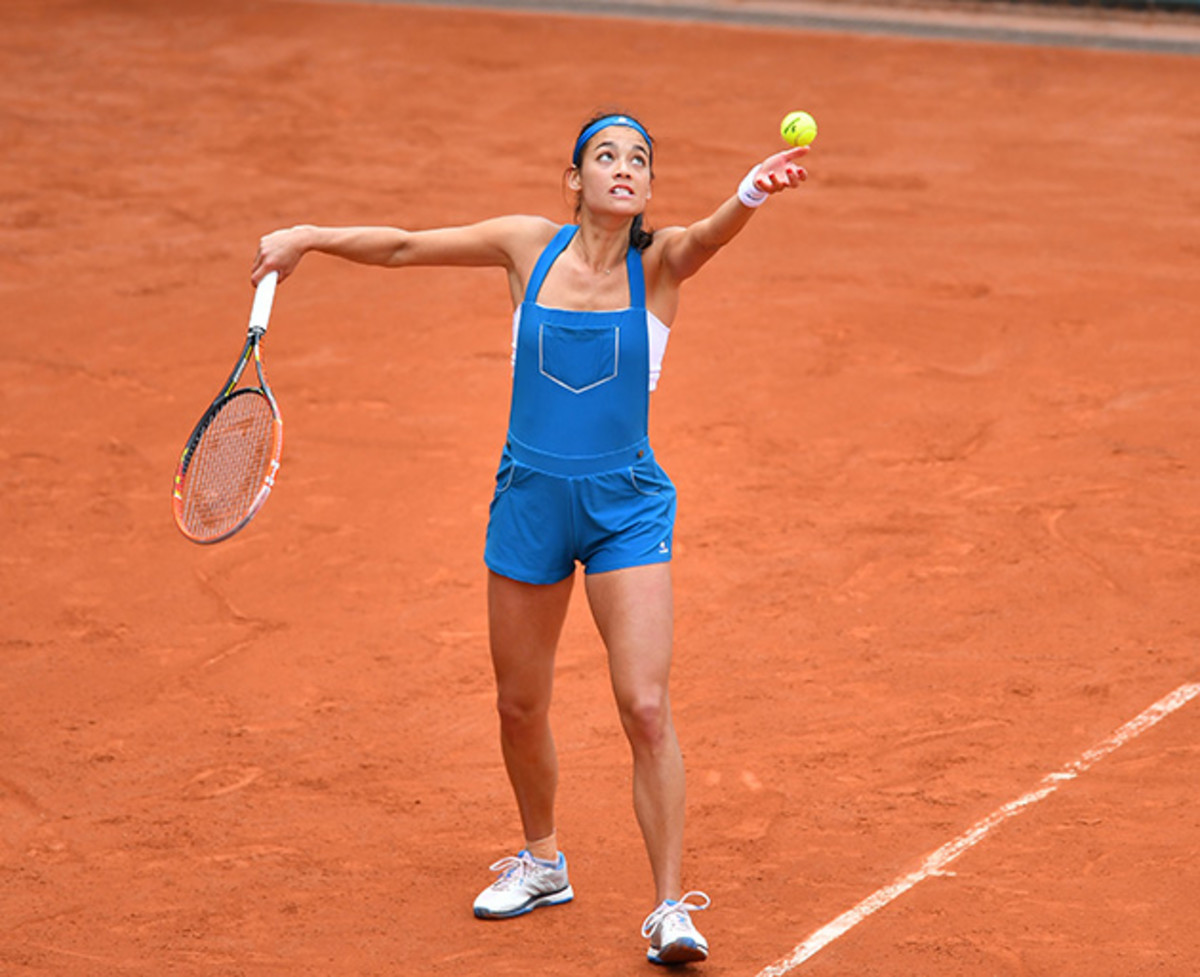
You want more fashion? In baseball, pitchers—and sometimes even the fans in centerfield—are prohibited from wearing white, for fear it will distract the batter from the ball. When tennis players (we’re looking at you, Wawrinka) wear shirts the same shade of attire as the ball they’re hitting, it strikes me as something less than sporting.
• Drama in the women’s Legends draw: a number of retired players refused to play doubles with Nathalie Tauziat. Why? Because of Tauziat’s support of coach Régis de Camaret.
Garbine Muguruza upsets Serena Williams to win French Open
• Happens every year: with the sport’s nerve center in Europe, the college tennis championships get eclipsed by the French Open. But congrats to Virginia for winning the men’s title and Stanford for winning the women’s. And in what passes for significant college news, John Roddick—coach of runner-up Oklahoma—has taken a new job at Central Florida, a program with ties to the new USTA Lake Nona facility.
• If you missed any of the Daily Data Viz pieces—a joint project between IBM and SI—you can see them here.
• I’m entirely too conflicted to speak objectively on the television coverage. This, of course, was the first Slam in recent memory without ESPN and with Tennis Channel doing the heavy lifting. The persistent rain was unfortunate for everyone, but, lapsing into jockspeak, you can only control what you can control.” Thanks for all your comments and suggestions. Be assured they were all read.
• Starting with Brad Gilbert, I thought it was big of ESPN tennis personalities to remain so active on social media in absentia, supporting the tennis (rather than pretending it didn’t exist) and pushing viewers to the Tennis Channel coverage. If only other institutions within the sport took this good-of-the-game approach.
• If you haven't seen the Barnstormers documentary on Tennis Channel—narrated by Robert Redford—make a point of doing so.
• From the promotion-of-others bin: Pre-order your copy of Playing Through the Whistle by S.L. Price.
See you at Wimbledon, everyone!
